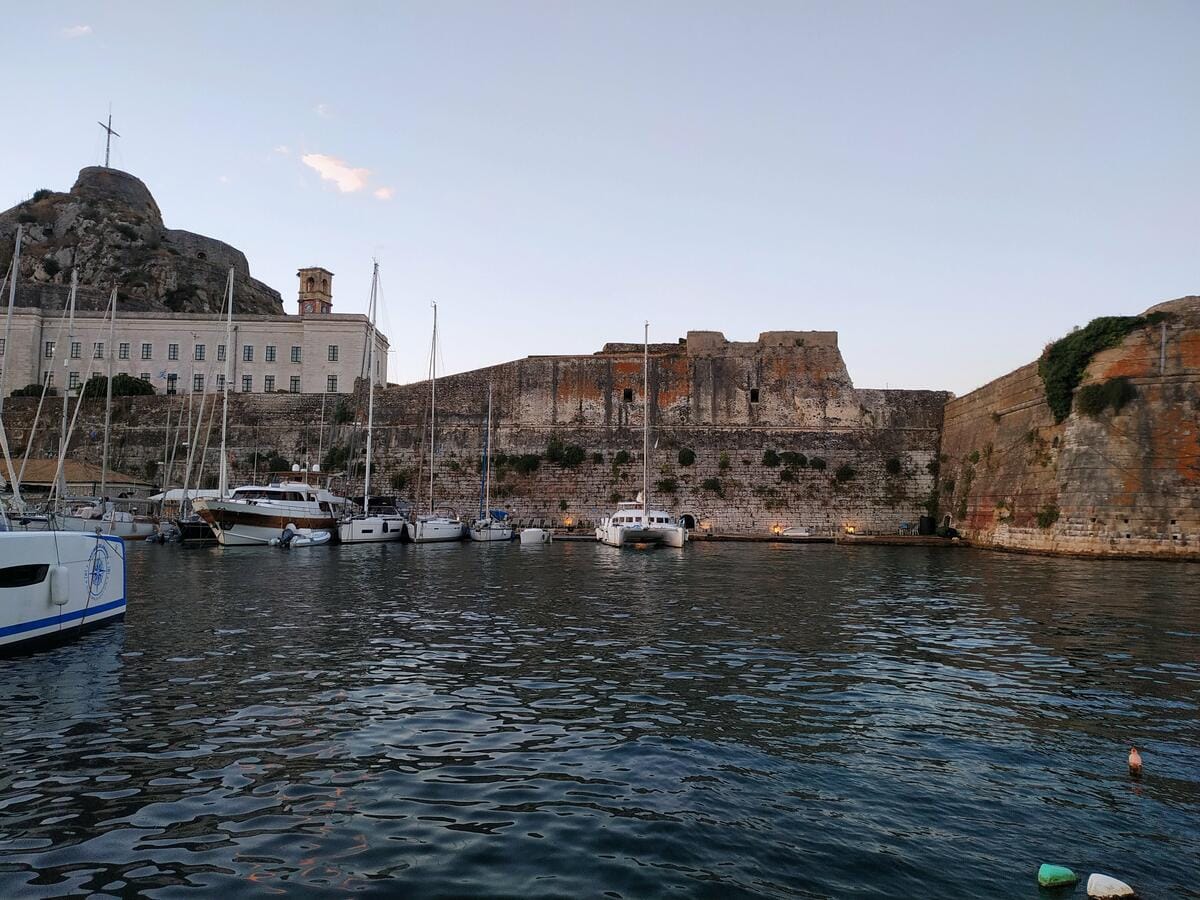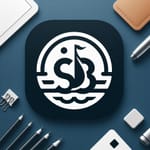This was a big moment for us — our very first catamaran charter. We were nervous and excited. In preparation for this trip, we had read every book we could find on catamaran sailing and watched countless hours of YouTube videos on the topic.
Boat: Lagoon 380 S2 (2014)
Length: 11.55 m | Beam: 6.53 m | Draft: 1.15 m
Battened mainsail | Solar panels
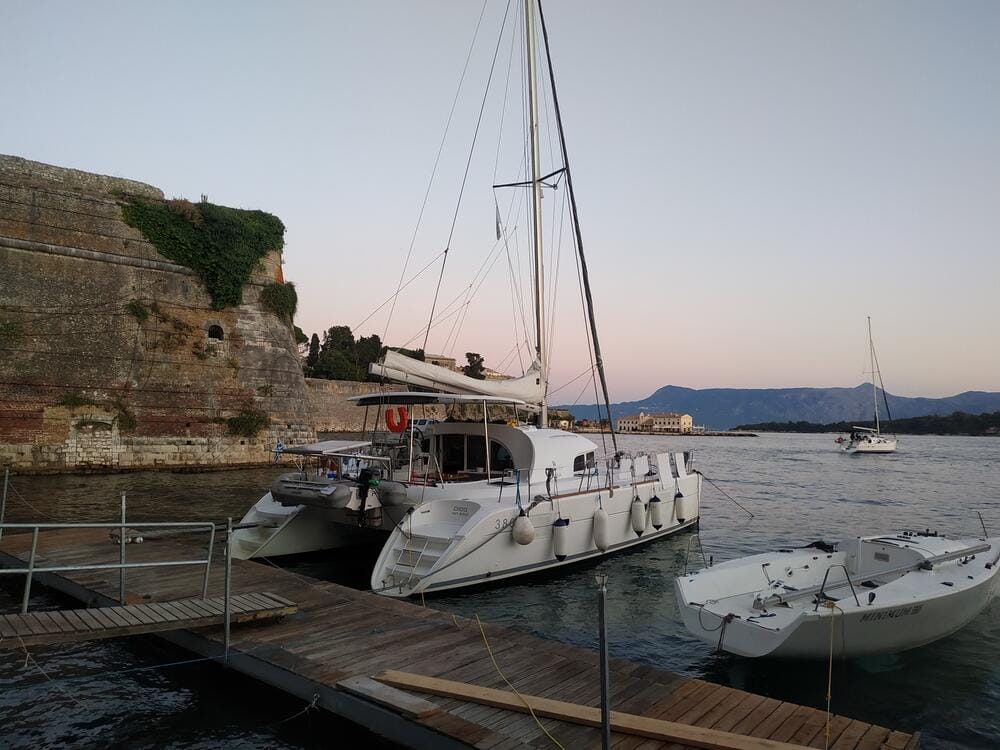
Day 1 – Marina Gouvia, Corfu
We picked up our Lagoon 380 from Marina Gouvia in Corfu, one of the largest marinas in the Ionian Sea.
The charter base was efficient and the handover went smoothly — during check-in we noticed one engine had way more hours than the other. The base explained that many skippers motor with just one engine to save fuel, using autopilot to compensate.
Provisions loaded, checklist ticked, we were ready to go.
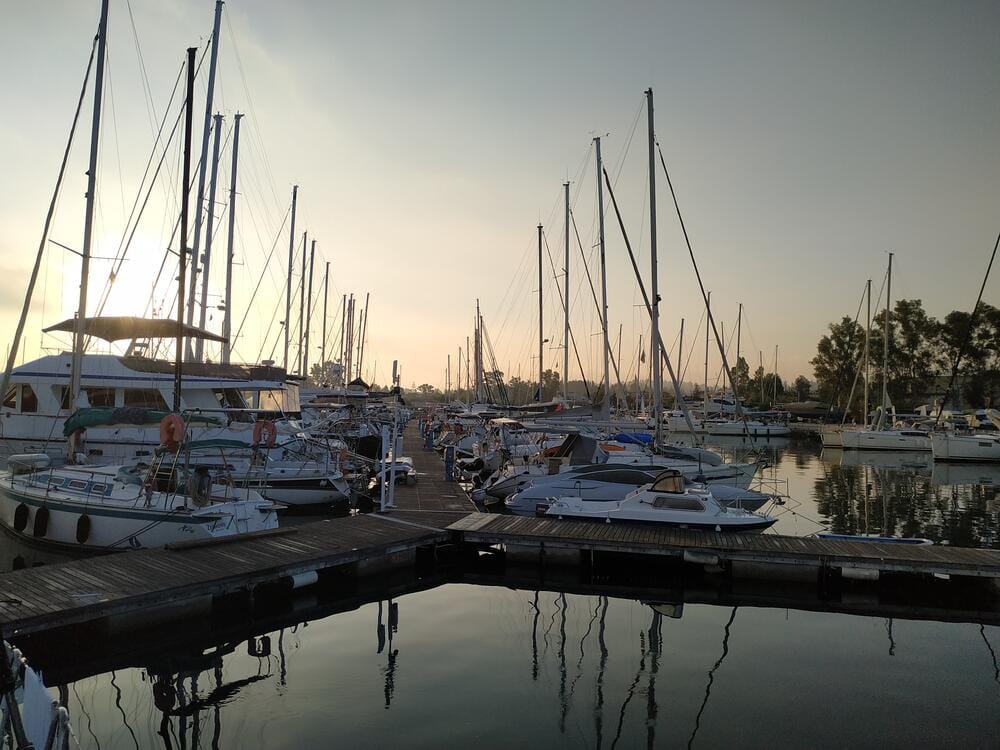
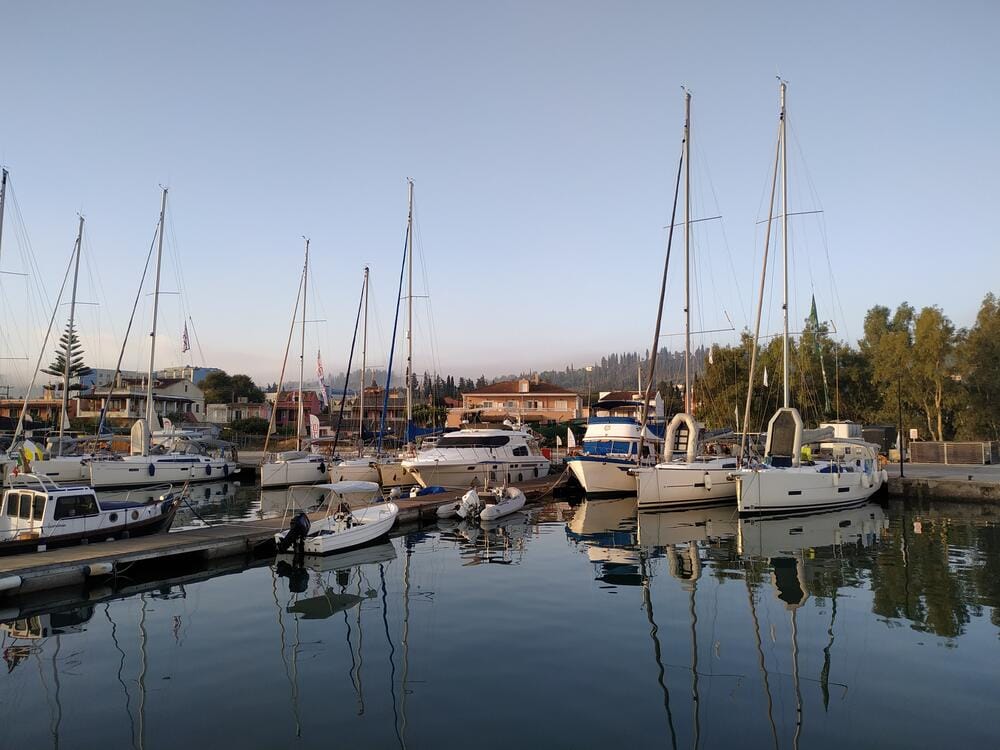
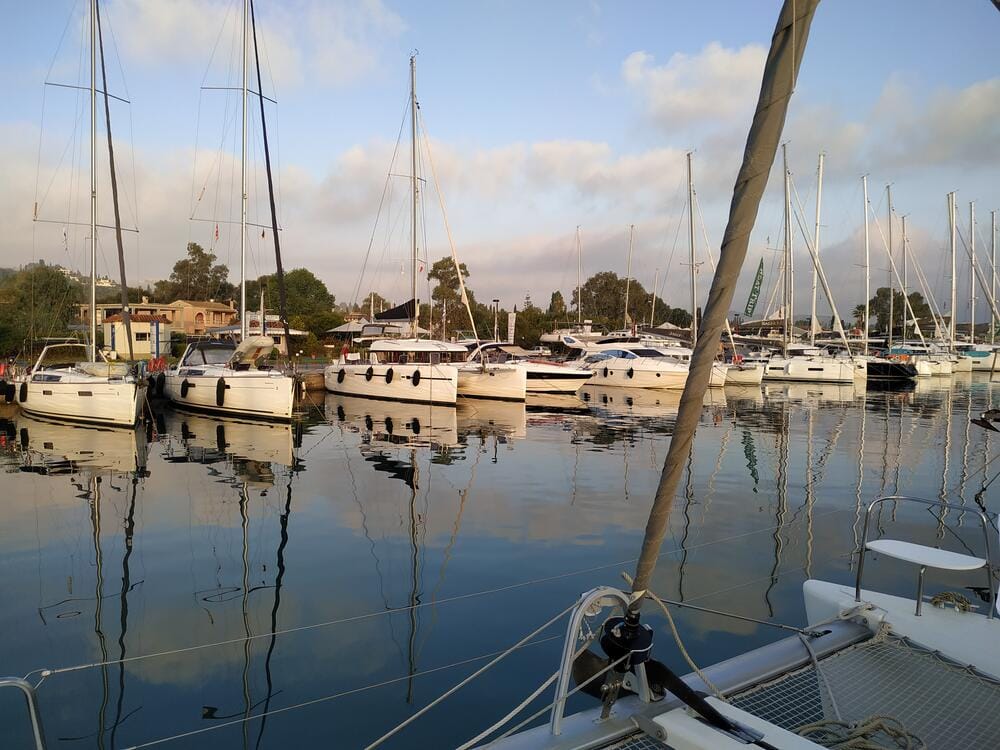
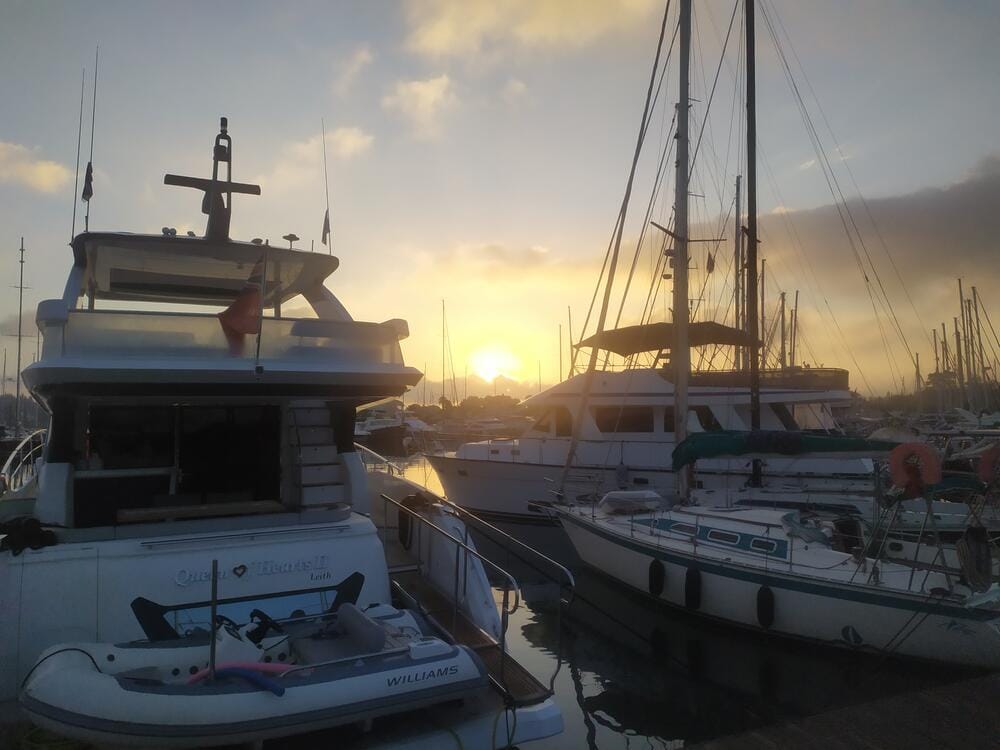
Marina Gouvia
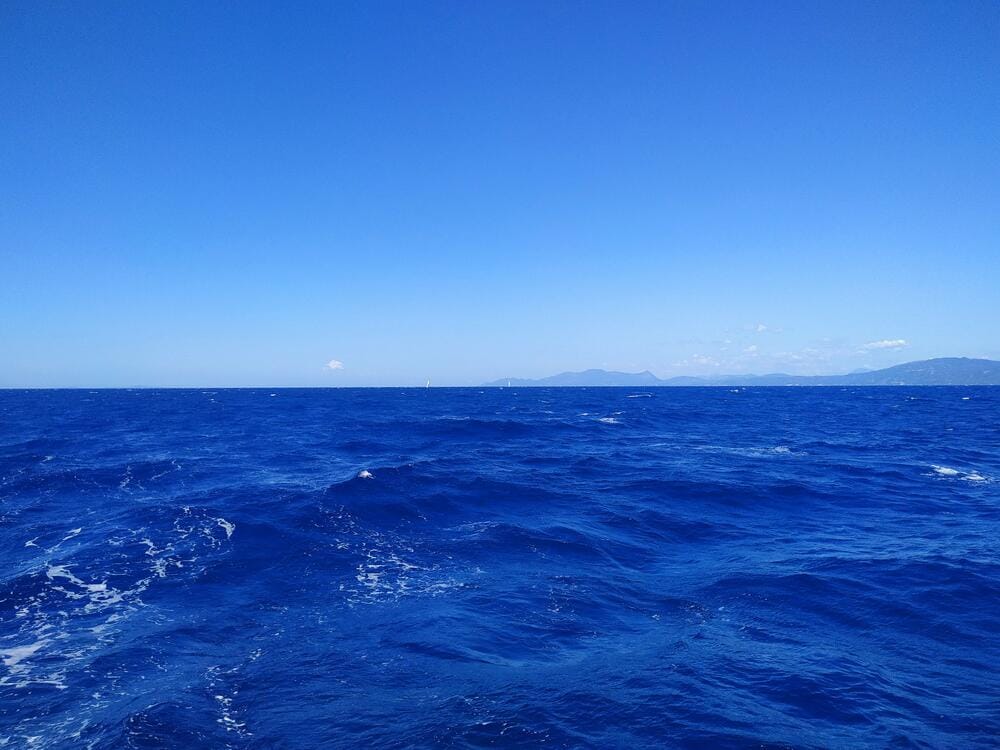
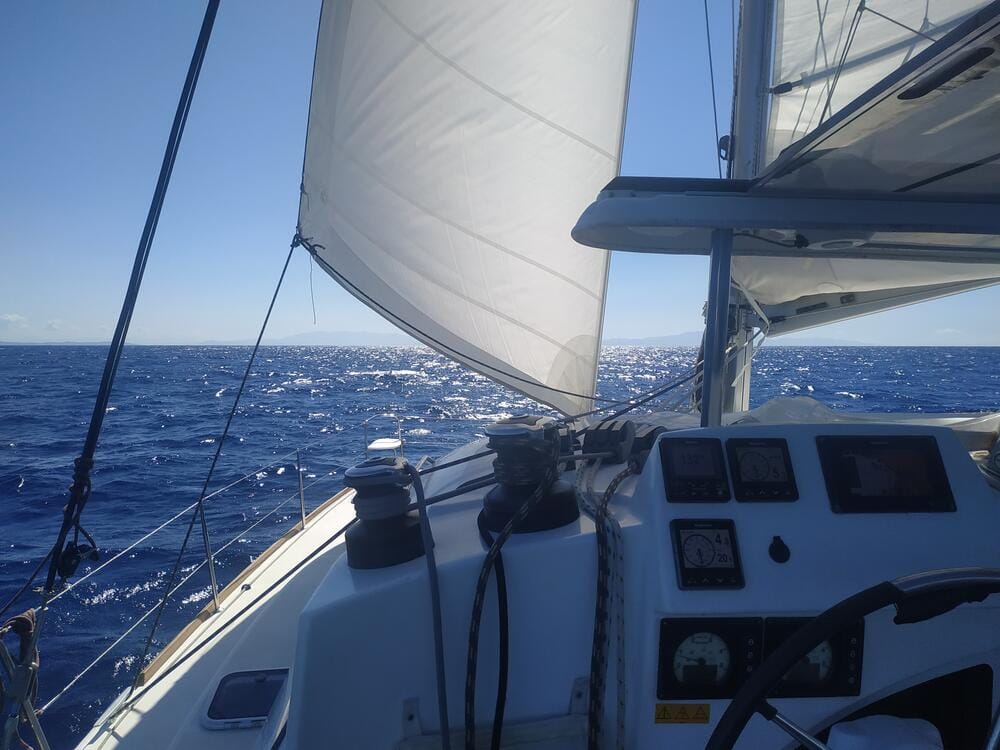
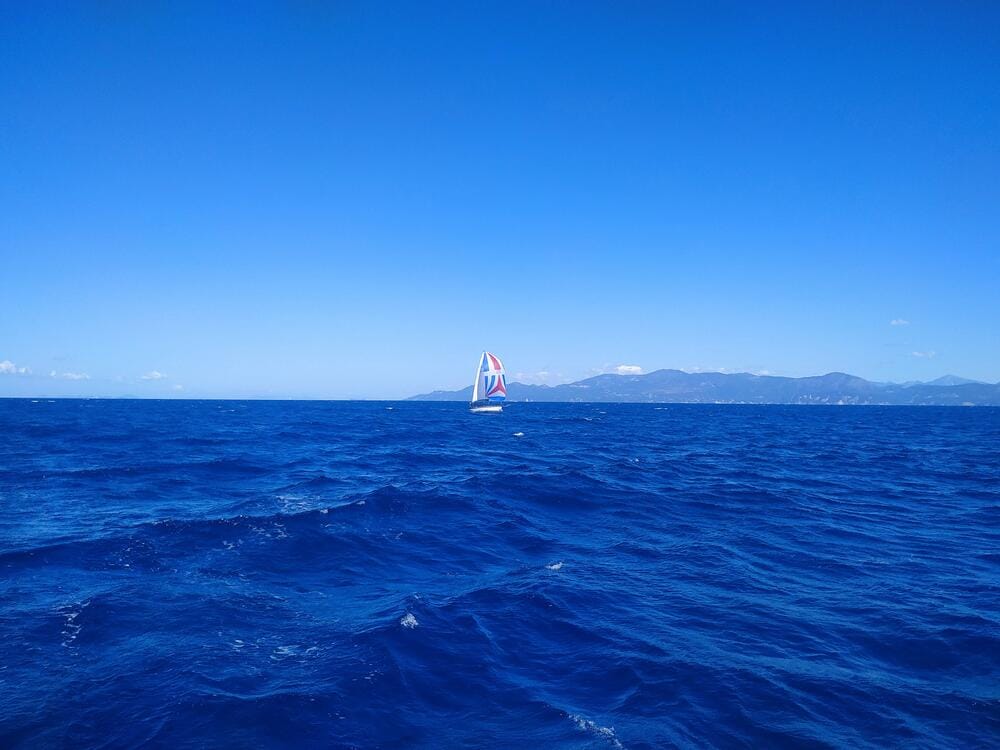
Ionian sea
Day 2 – Lakka, Paxos
We made our way to the charming bay of Lakka on Paxos and dropped anchor with a line ashore. In low season, you can have the bay almost to yourself — but this time it was packed with boats stretched out from shore to shore.
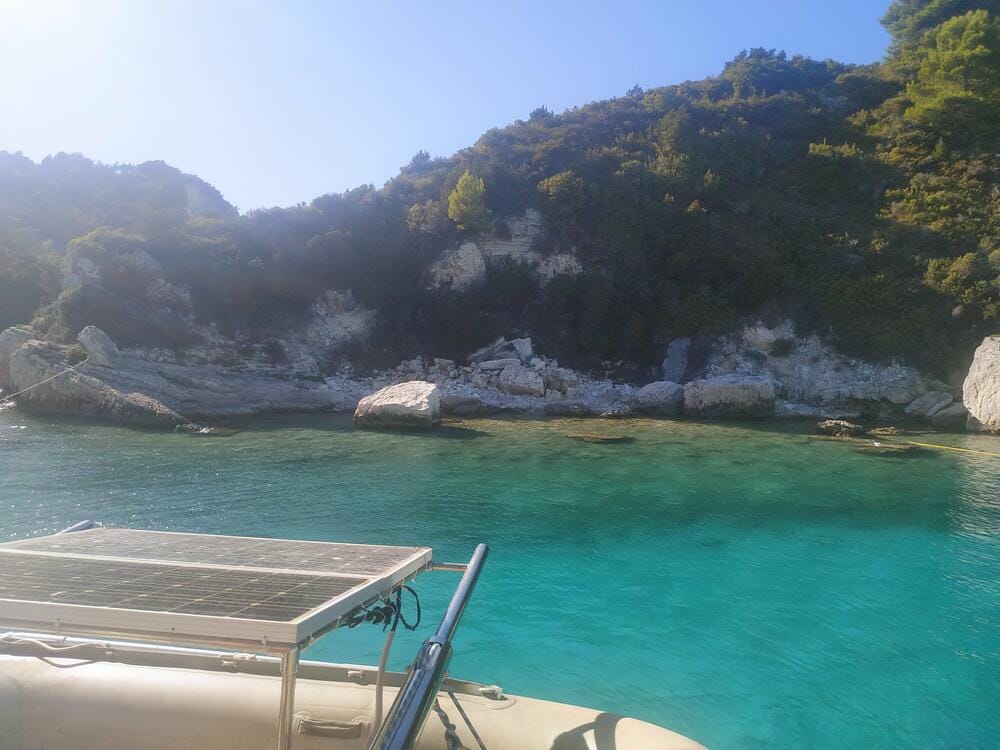
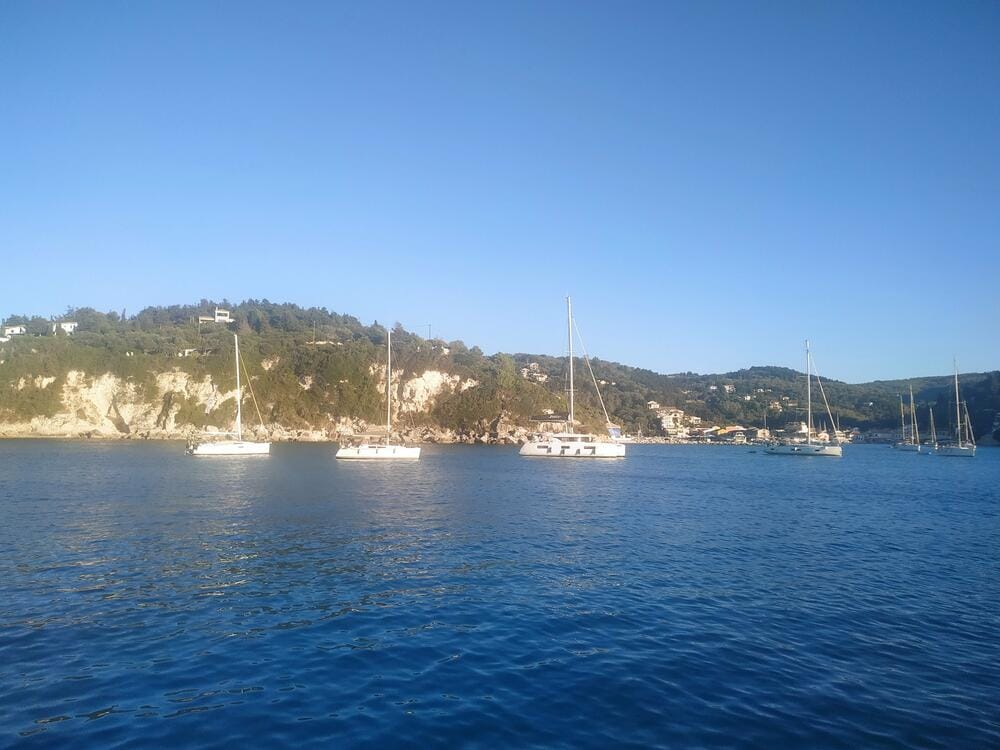
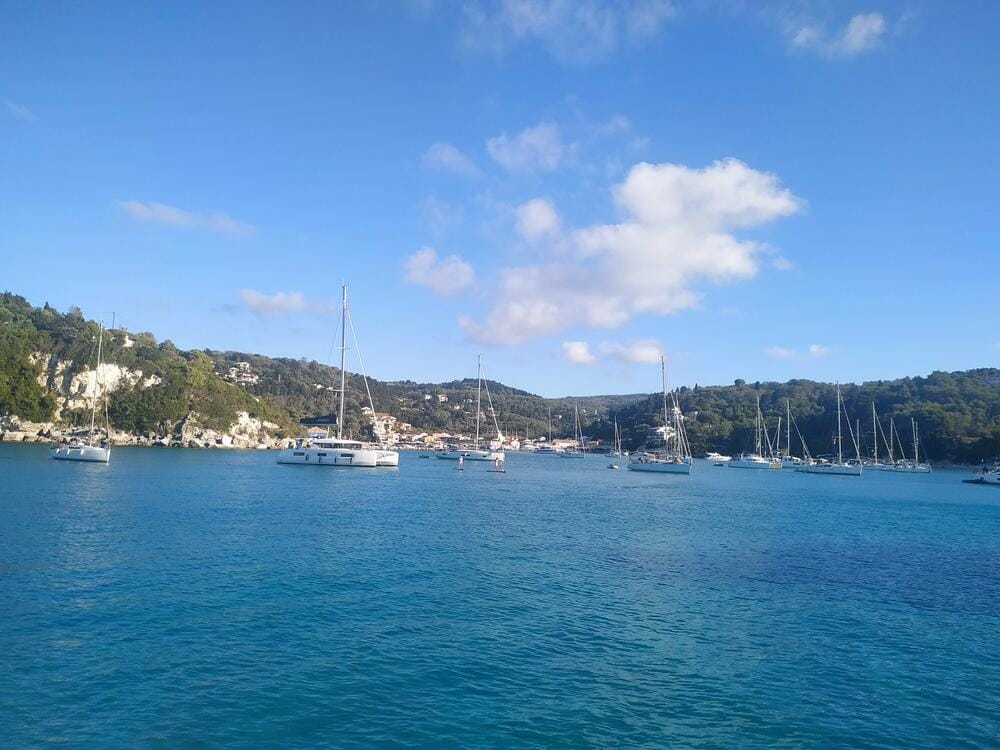
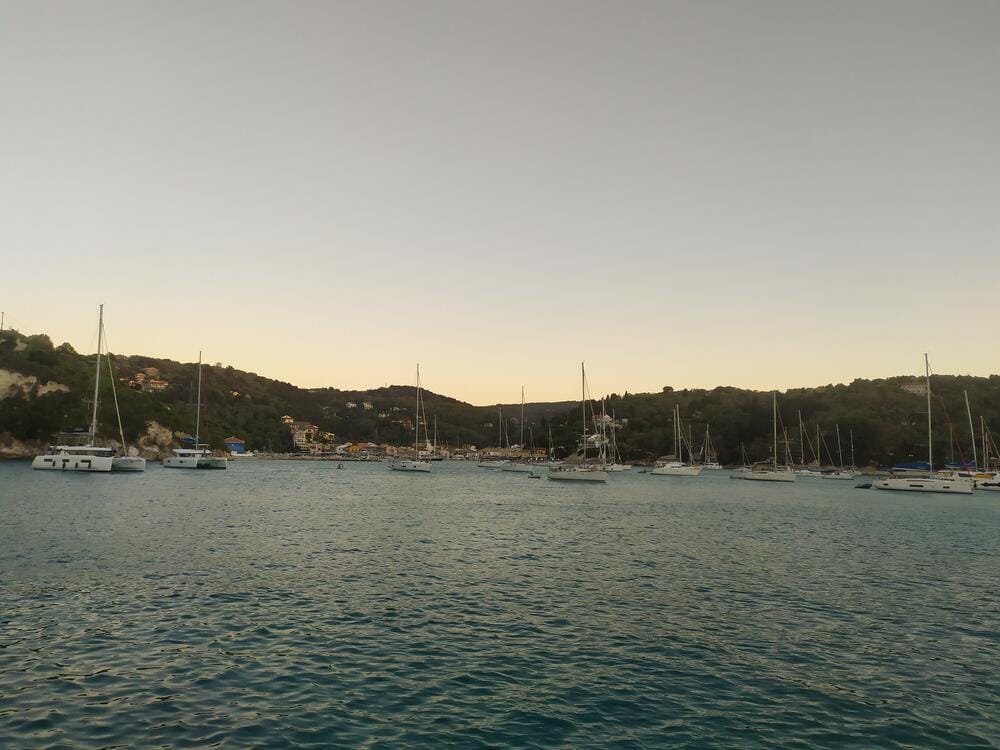
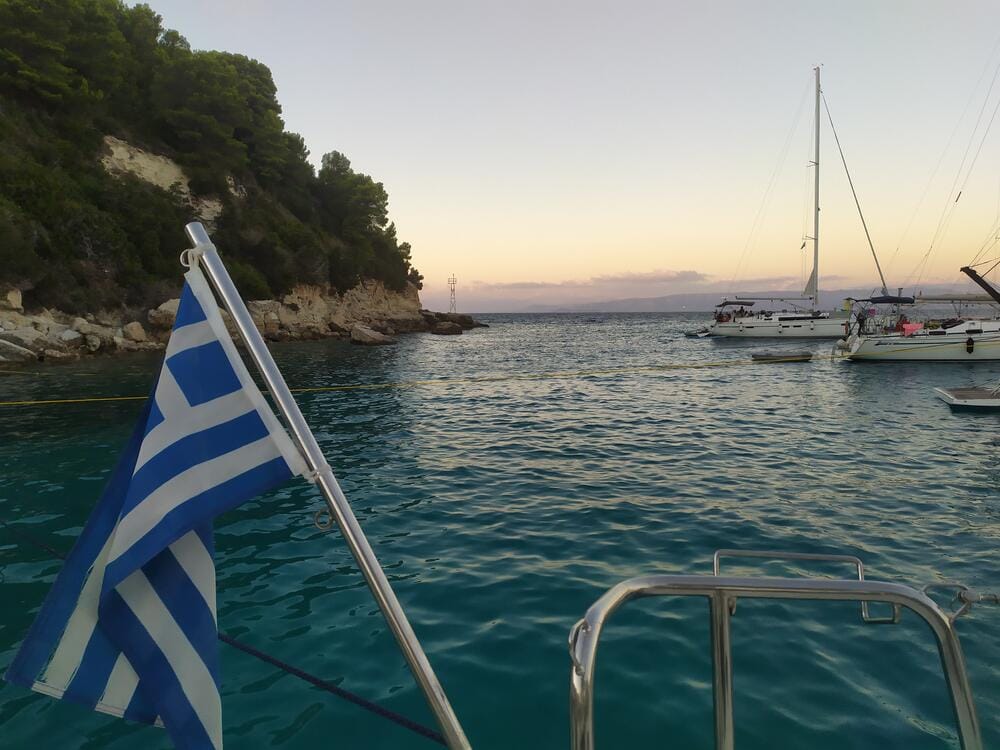
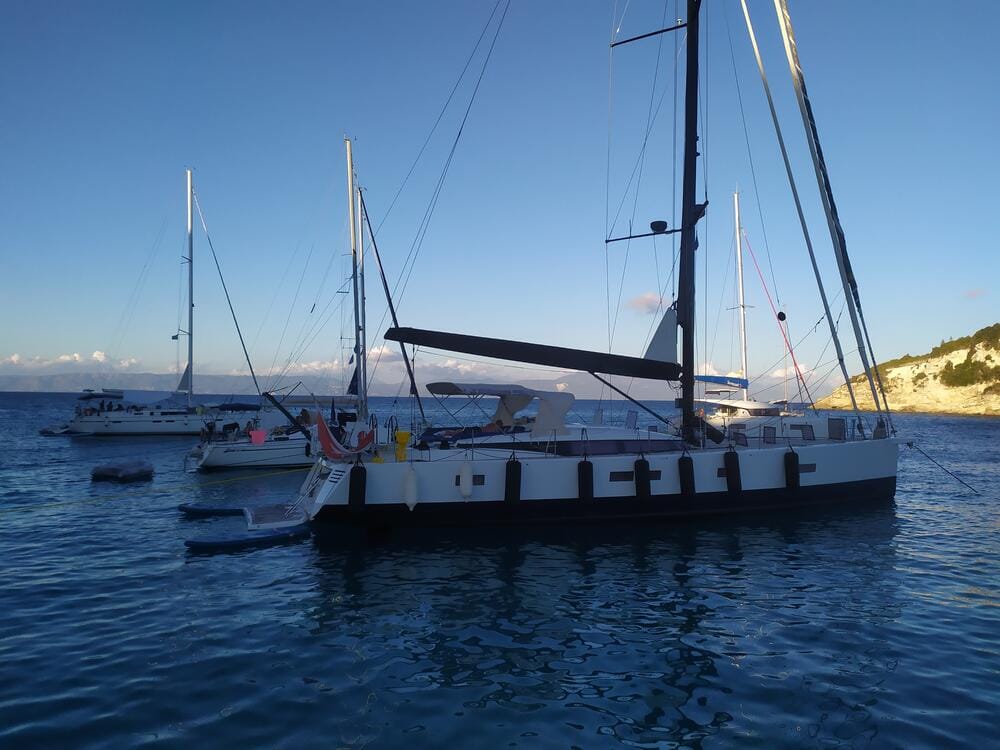
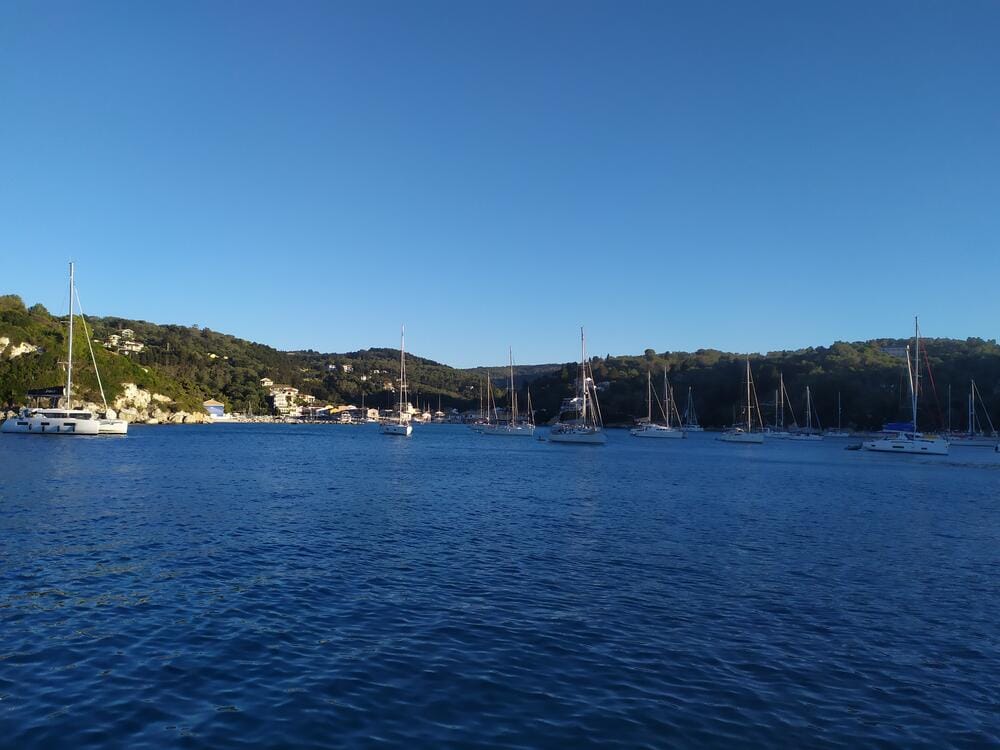
Lakka, Paxos
At one point, a skipper from a nearby boat, clearly mistaking us for someone else, started shouting that we’d once bumped into his yacht. Realizing his mistake, he quickly backed off and things calmed down. Not the most relaxing start!
Still, we went for a swim, explored the bay by SUP, and even helped a speedboat cast off — they thanked us with two cold Pilsners.
Day 3 – Preveza
We docked stern-to at the town quay in Preveza, laying anchor due to limited mooring availability. Preveza has strong currents — up to 2 knots — which made maneuvering between two boats a bit of a challenge.
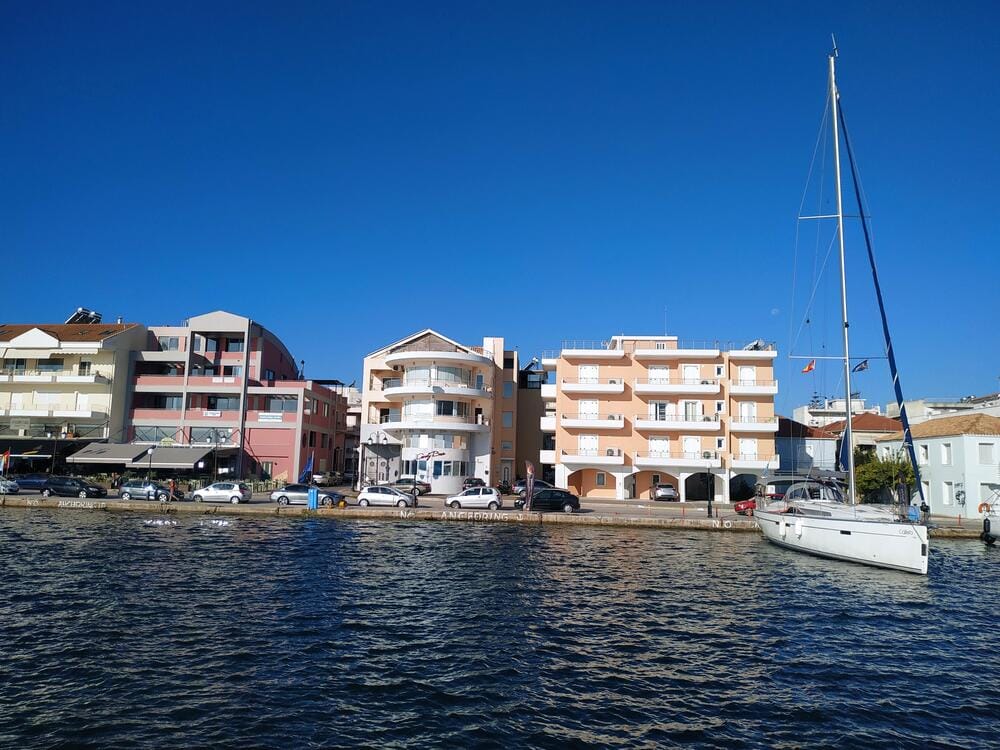
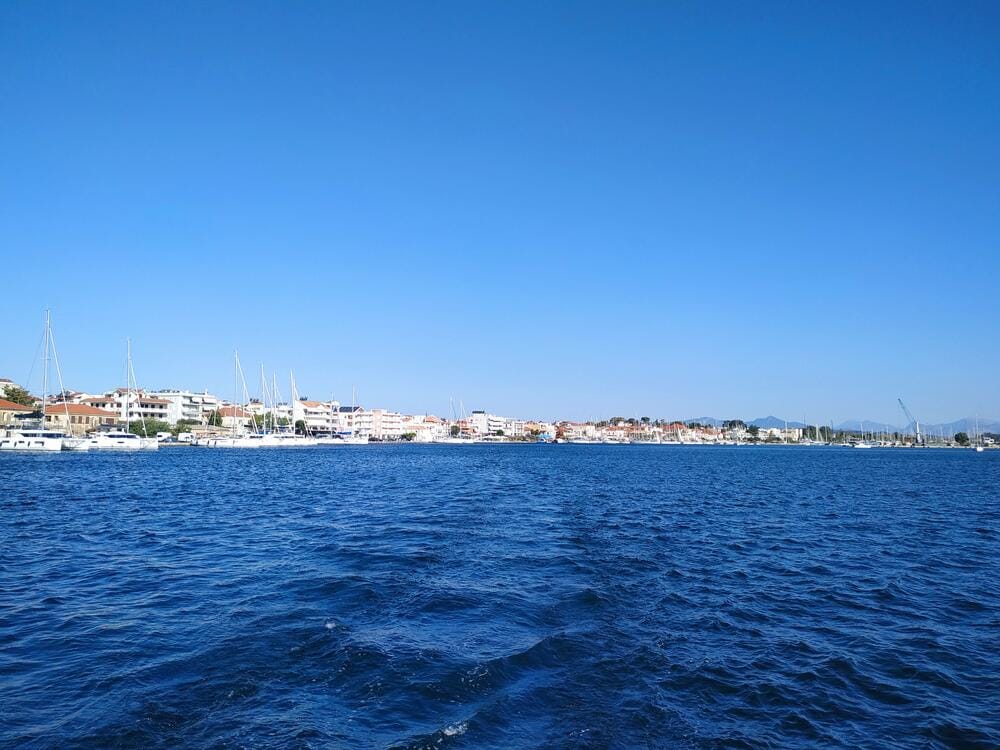
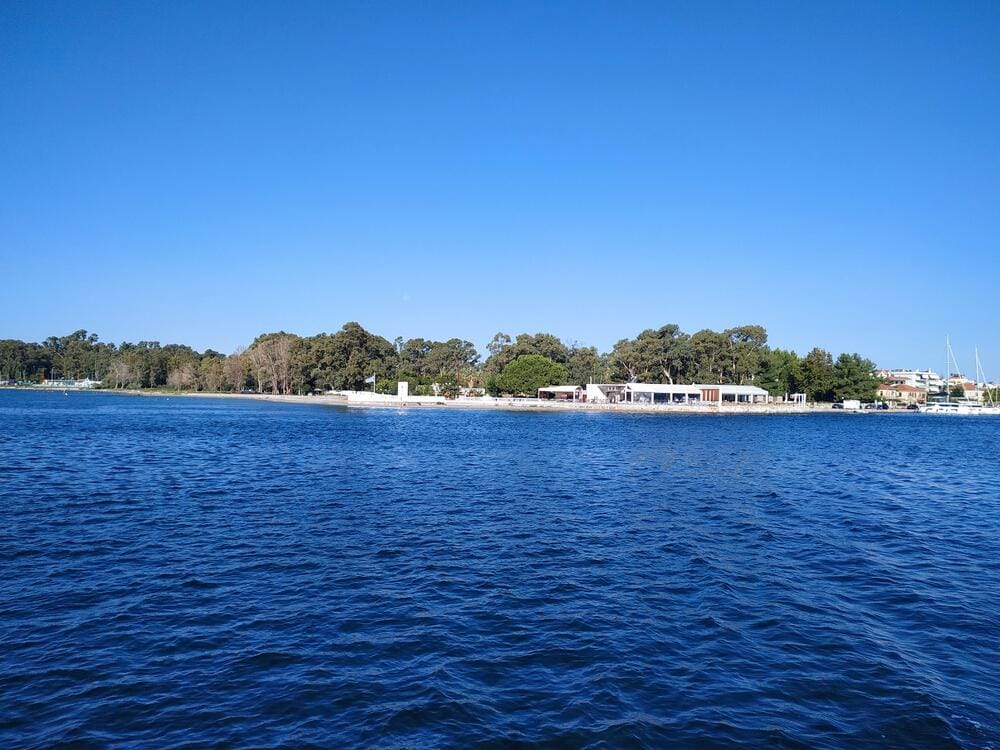
Preveza
Docked next to us was a beautiful schooner being delivered from Cleopatra Marina to Marmaris. The crew invited us aboard and shared some freshly caught crab. We returned the favor with beer and swapped stories late into the night.
The port charged €40 total (including water and electricity), plus a small city tax.
Day 4 – Lefkas Canal & Marmagkas Bay (Ithaca)
We passed through the Lefkas Canal and the floating bridge Agia Mavra, a unique engineering feature that opens every hour to let boats through.
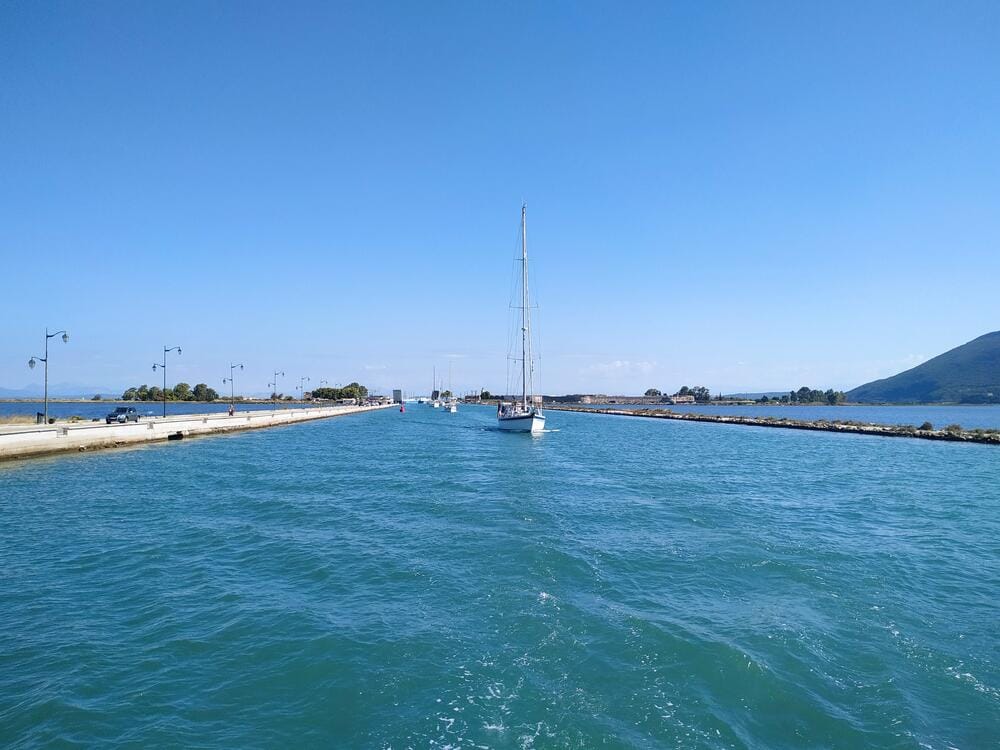
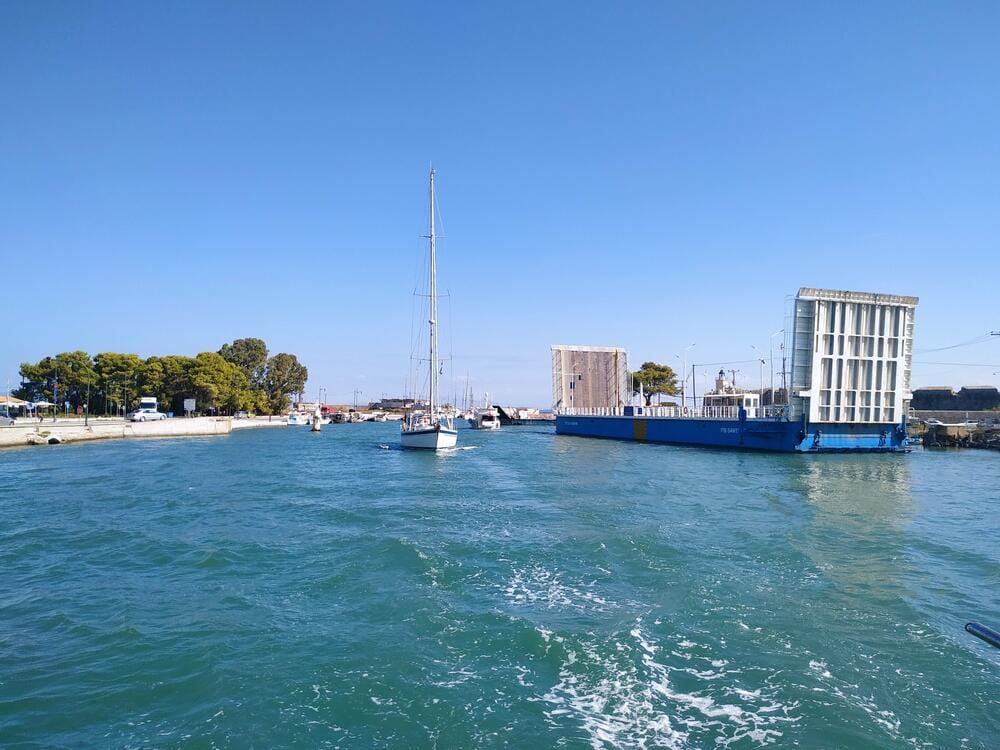

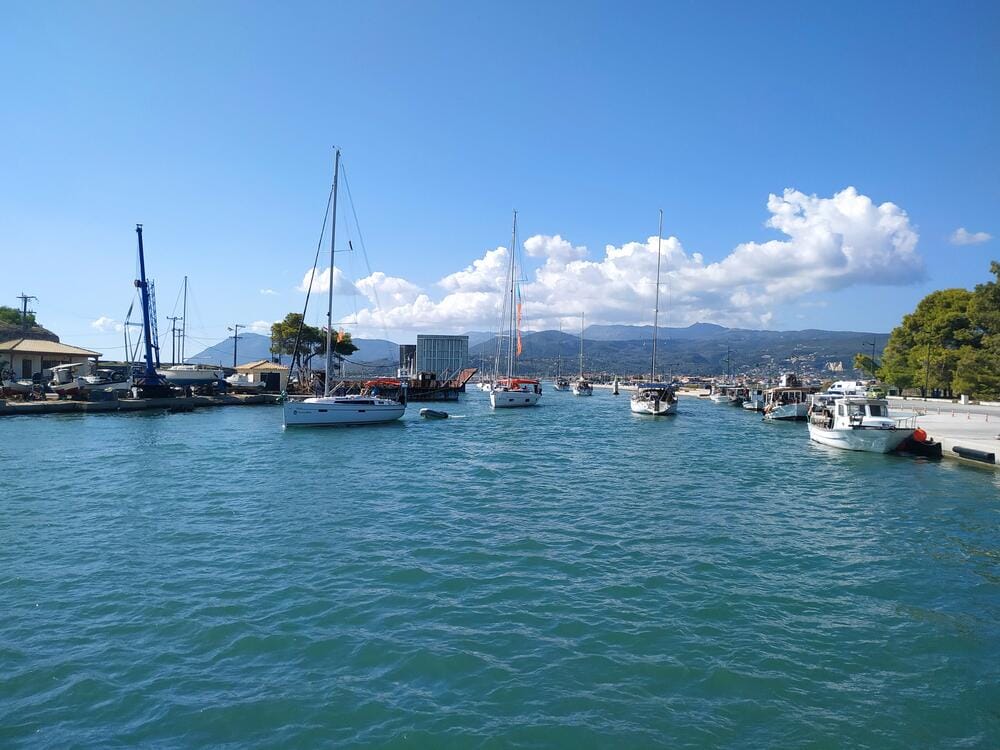

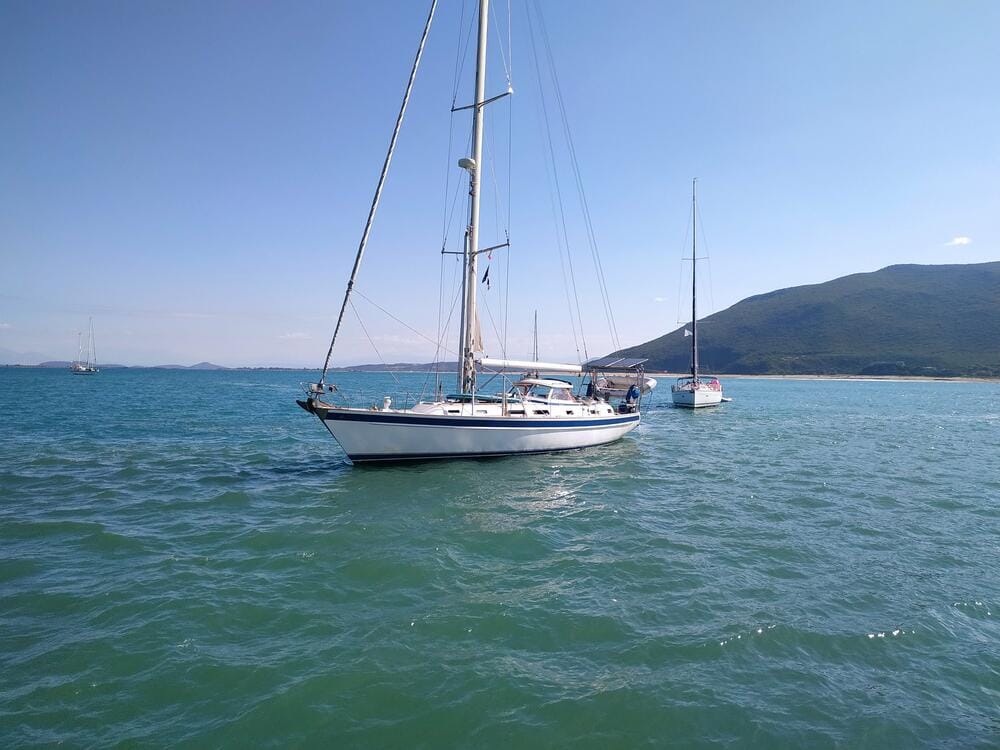
Lefkas Canal & Agia Mavra
Sailing Through Lefkas Canal & "Agia Mavra" Floating Bridge
We dropped anchor in Marmagkas Bay in northern Ithaca, a peaceful spot beneath the tiny chapel of Agios Nikolaos. Sandy patches with some rocks made for decent holding.
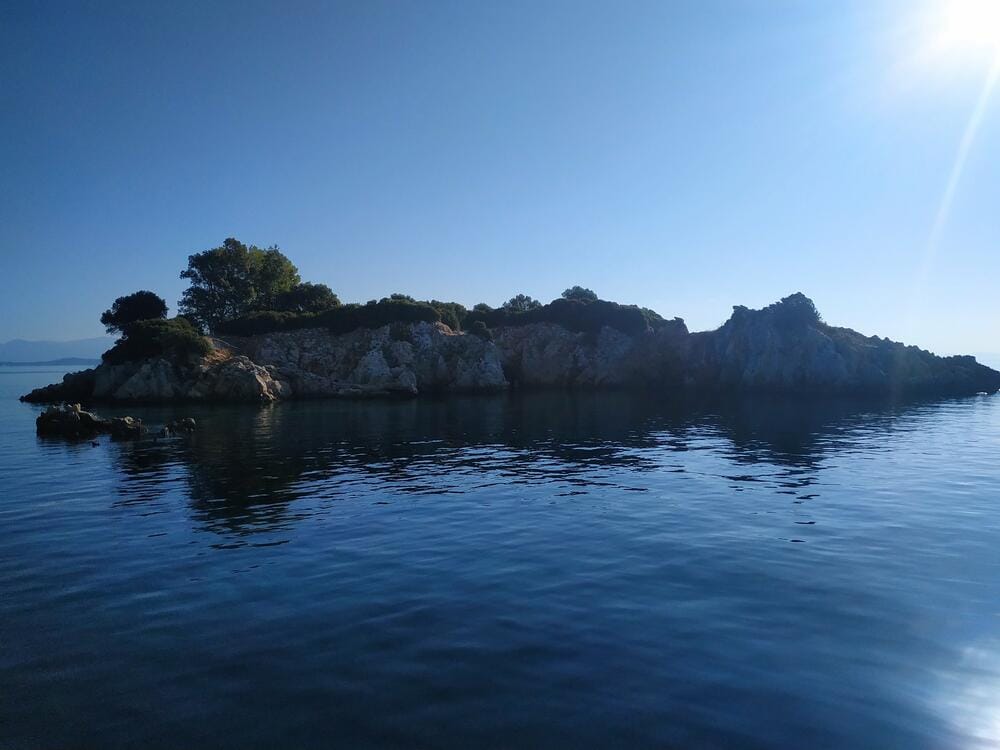


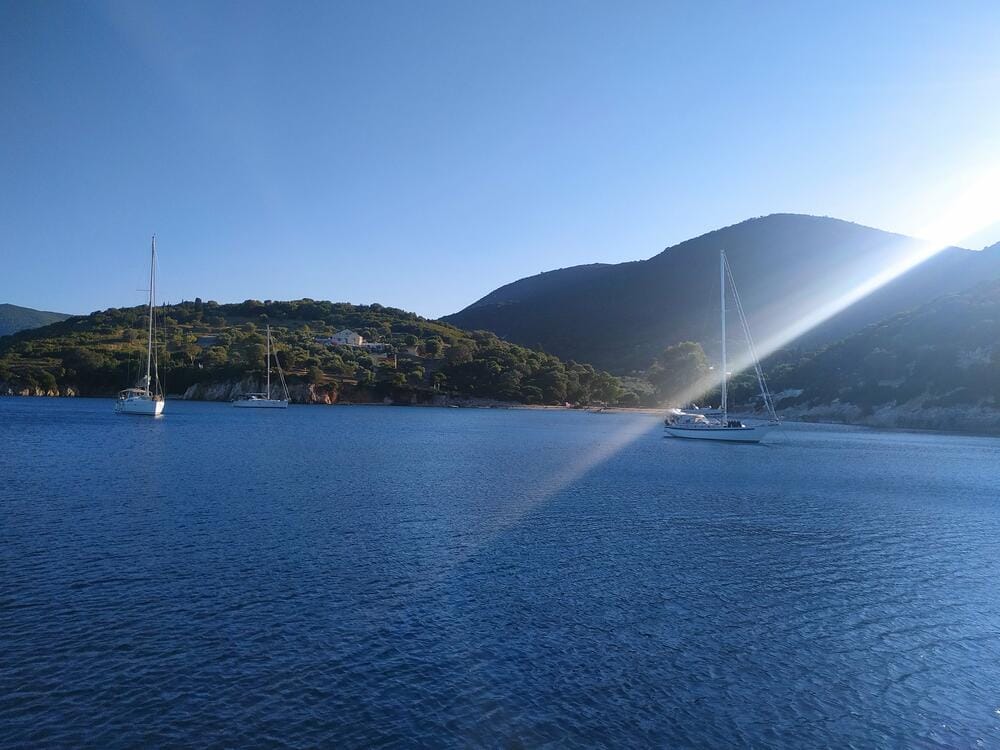
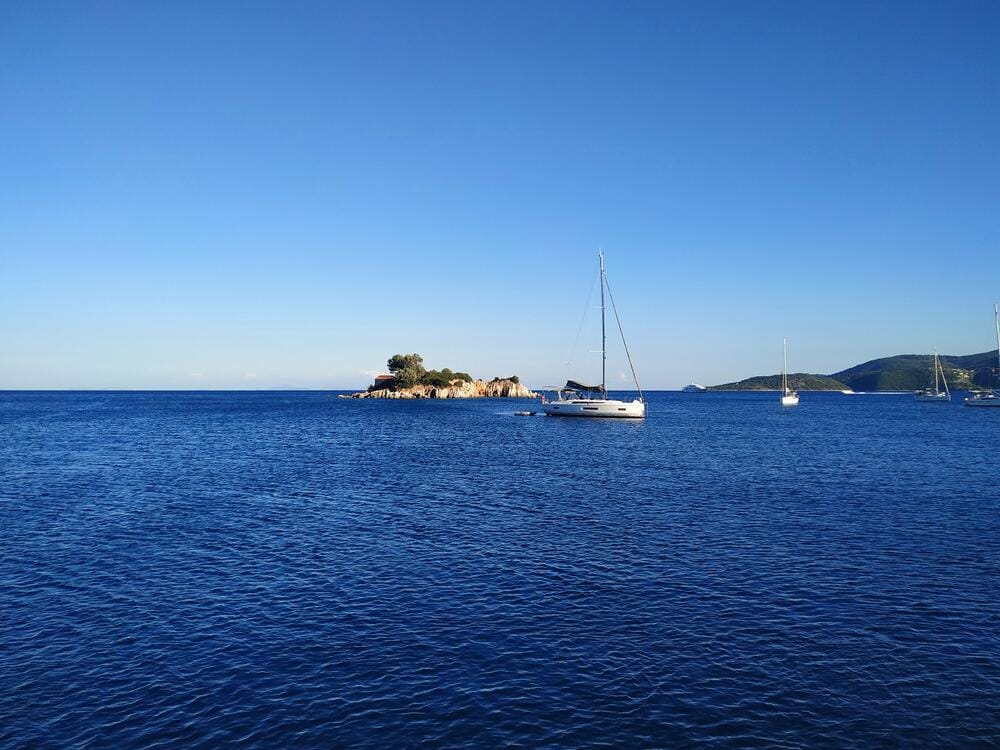
Ithaca
For the first time, we rigged a bridle — a key piece of gear on catamarans for anchoring. A quick dinghy ride brought us ashore for a sunset stroll.
Fun fact: Ithaca is famously home to Odysseus, the cunning king from Homer’s Odyssey. Though there's debate about the actual location, the island still leans into the legend.
Day 5 – Zakynthos & Navagio Beach
Entering Agios Nikolaos (Zakynthos) was windy, with strong crosswinds. We approached fast, dropped anchor, grabbed a mooring — not elegant, but effective.
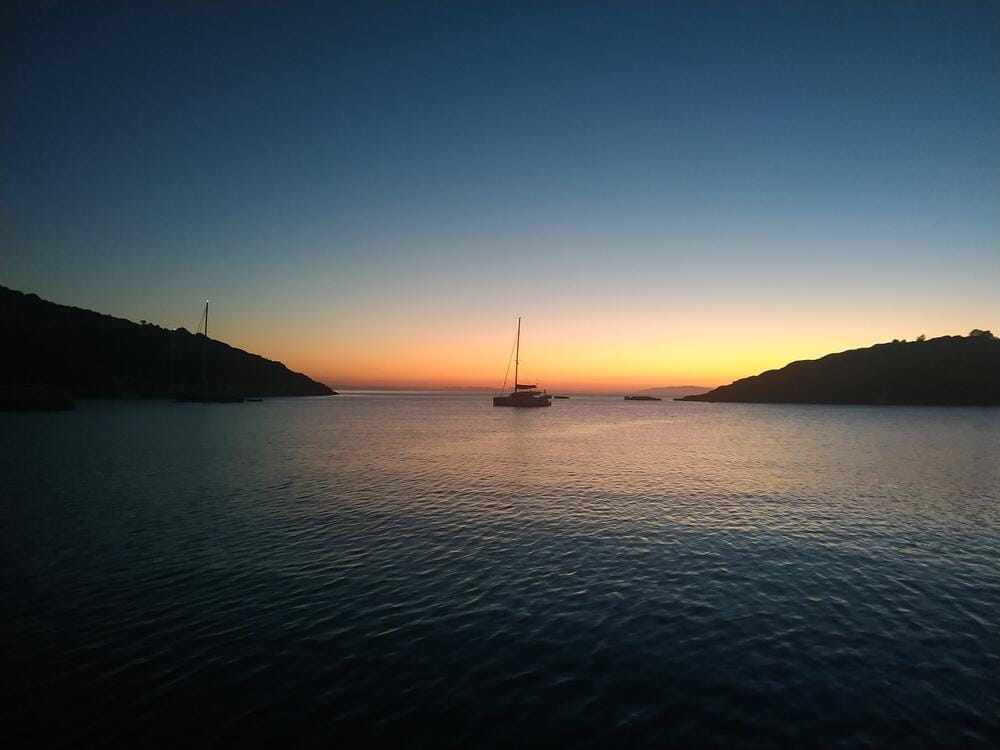
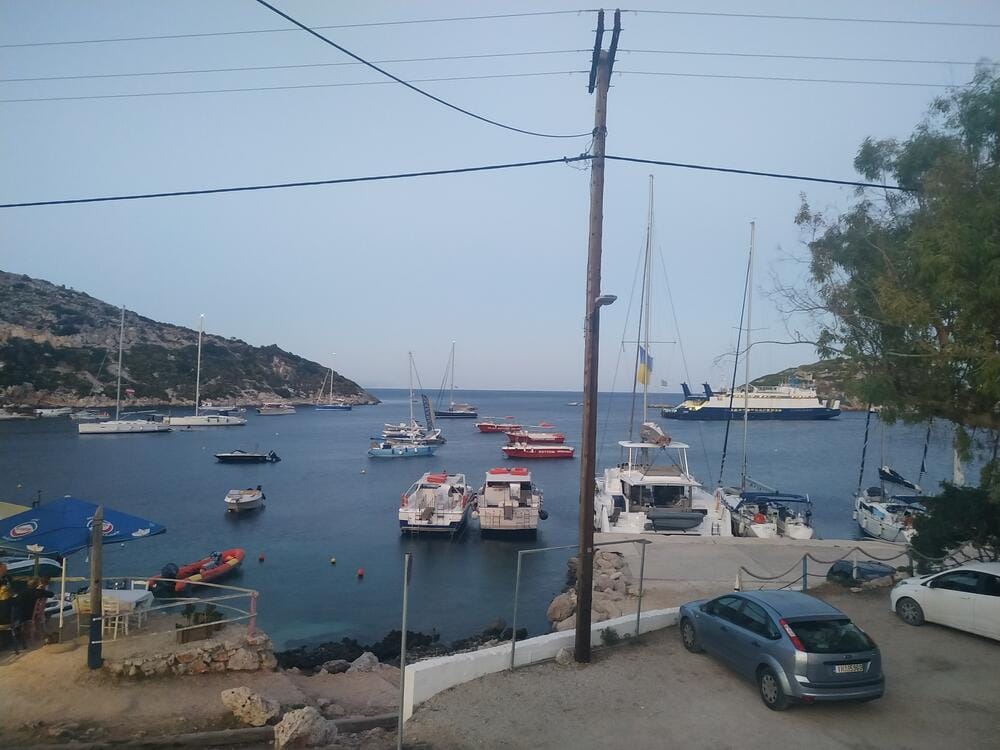
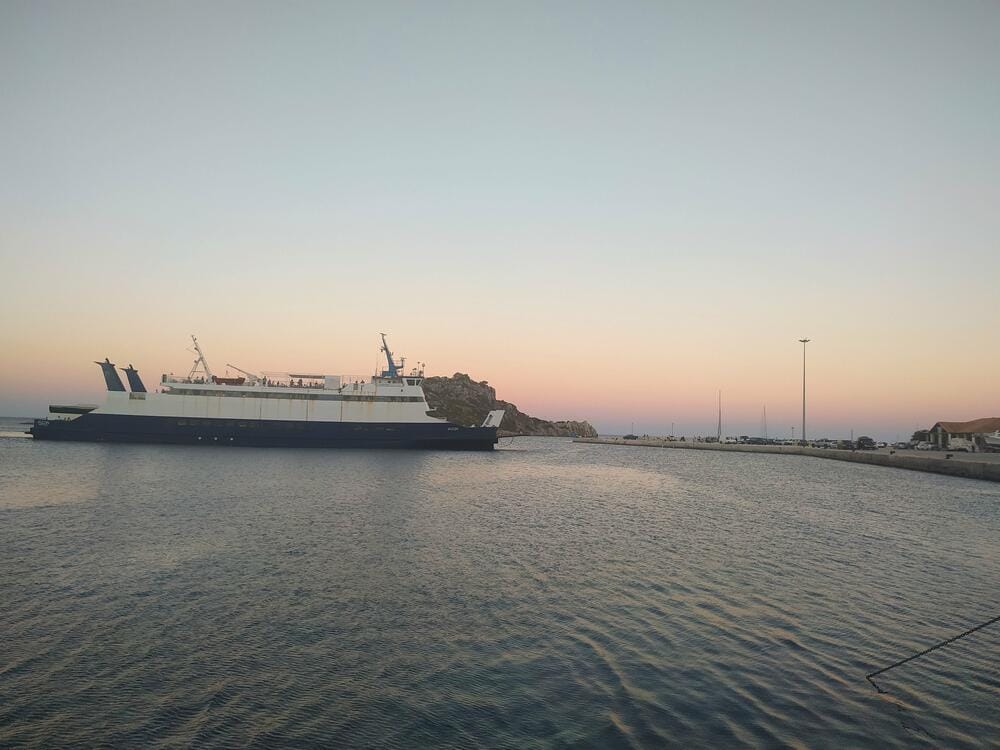
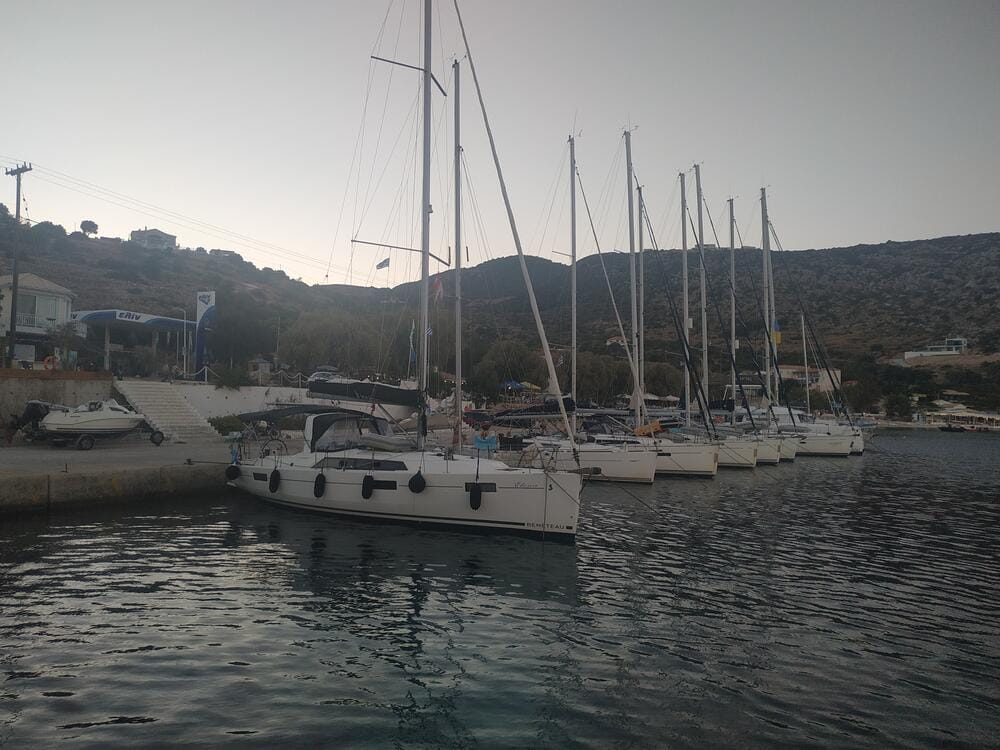
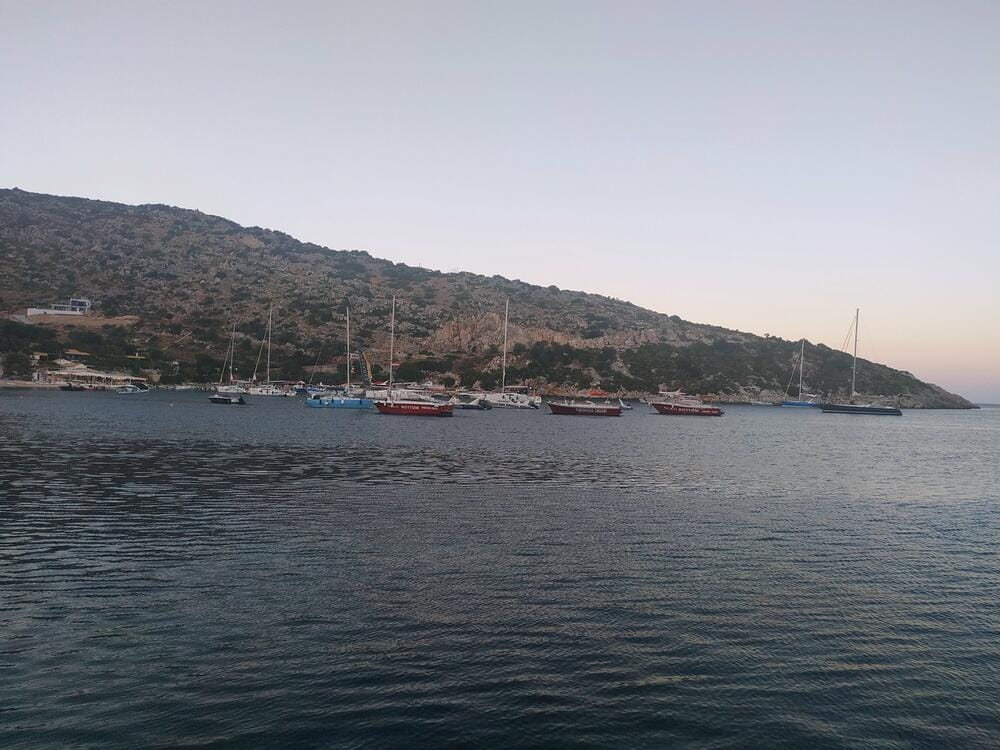

Agios Nikolaos, Zakynthos
As we approached the harbor of Agios Nikolaos on Zakynthos, we passed a strange, half-finished water channel structure. The wind was strong and pushing us sideways, so we had to dock at speed — dropping anchor on the go and grabbing a mooring line in one smooth, tense maneuver.
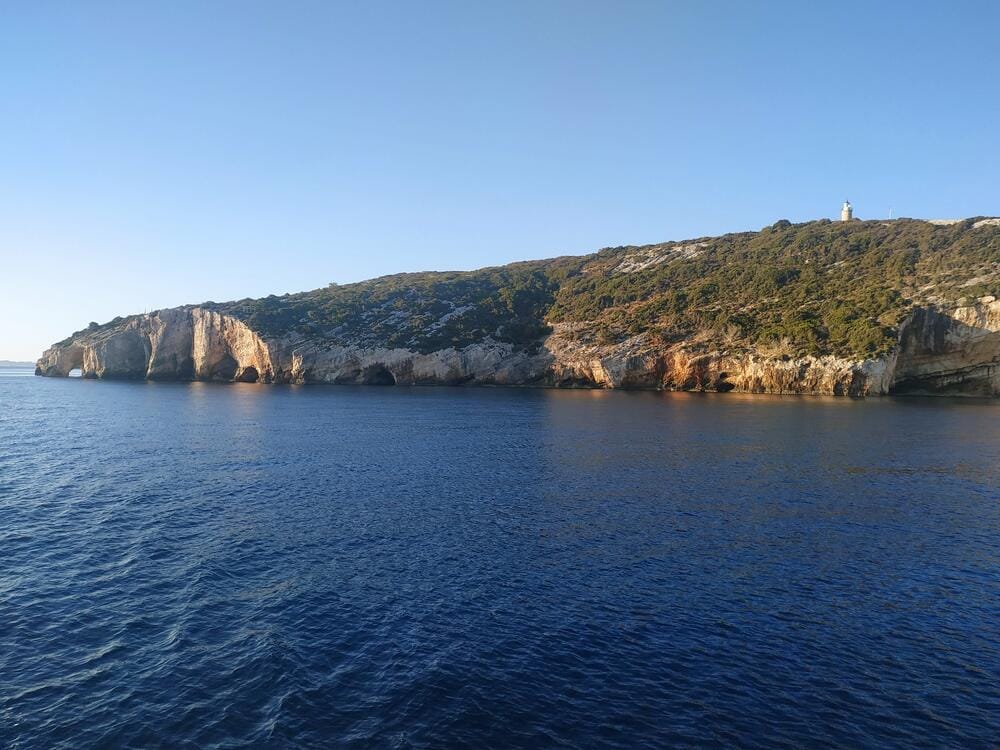
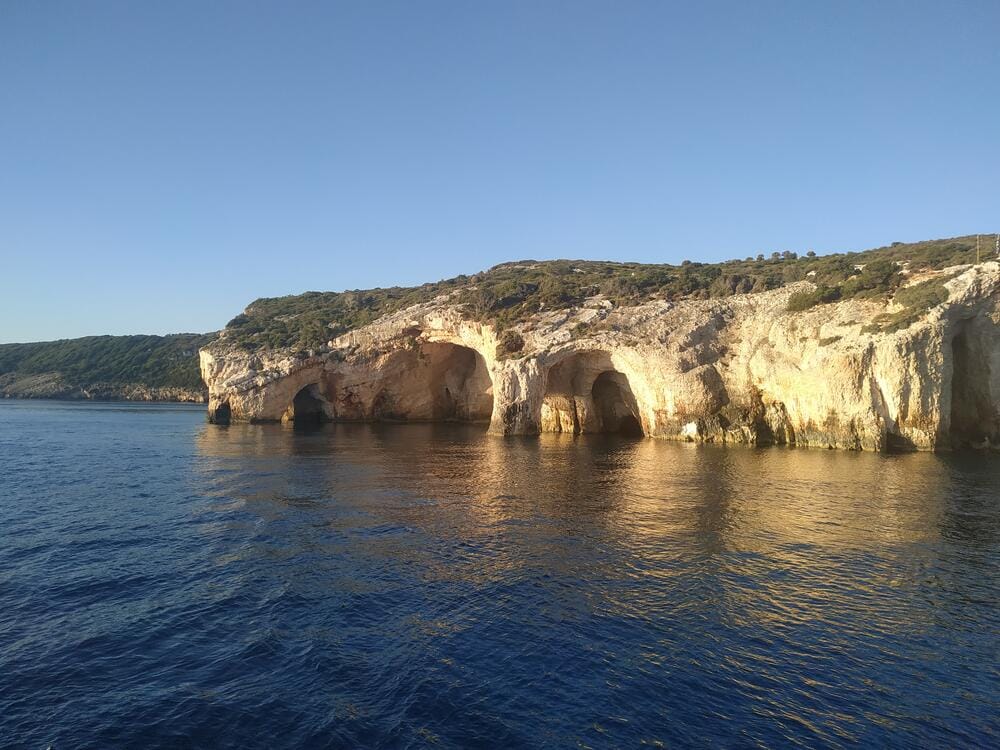
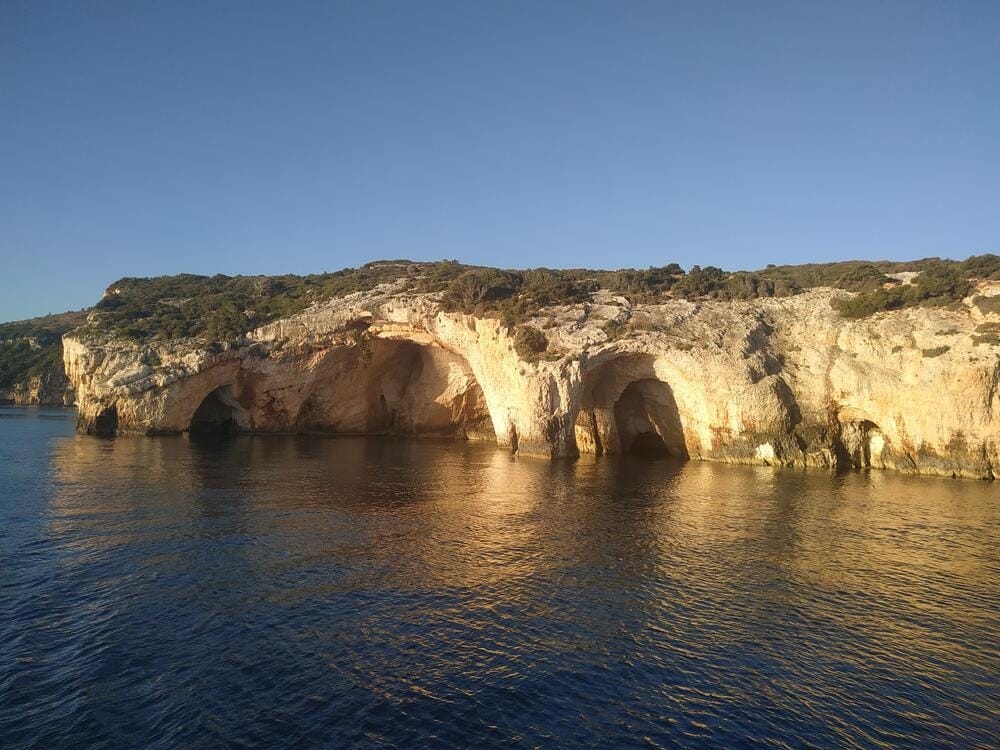
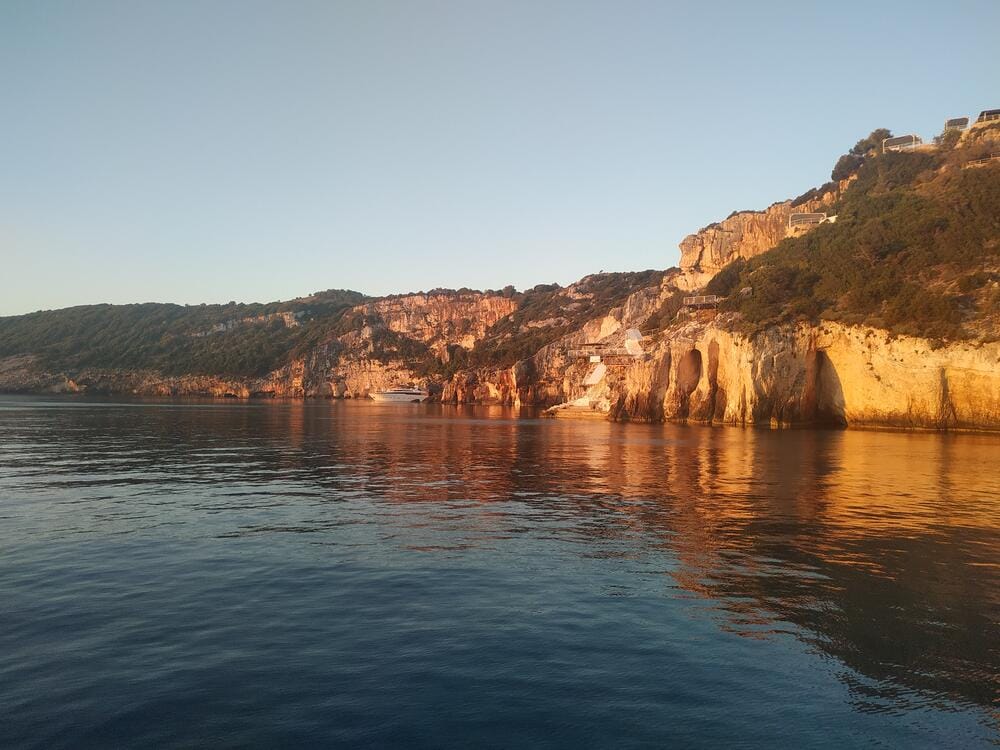
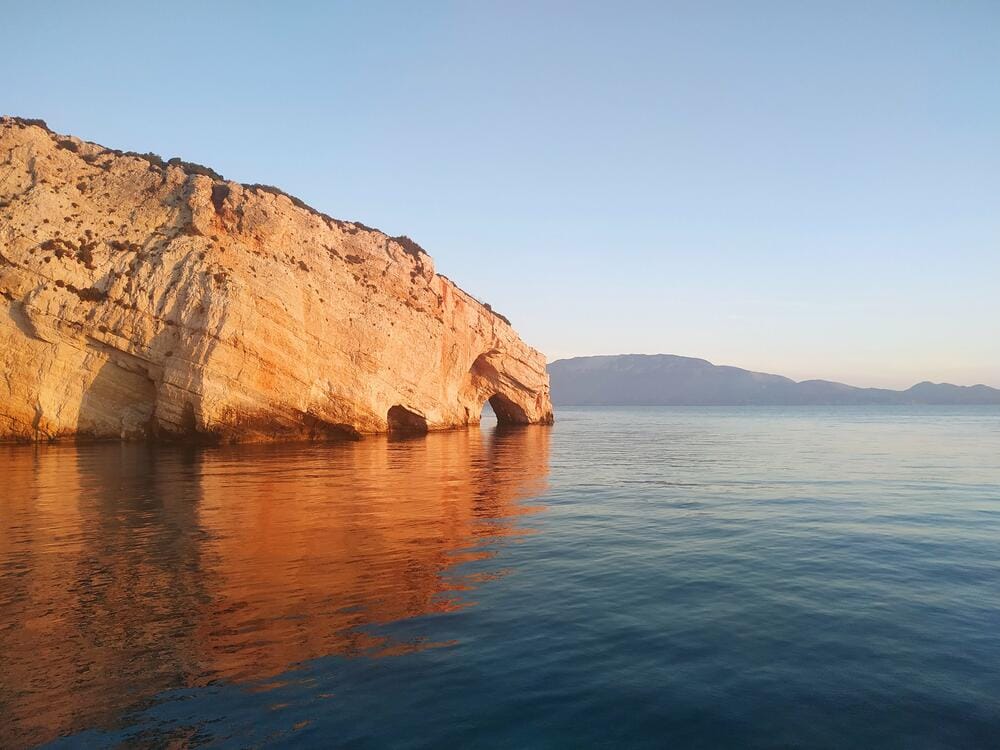
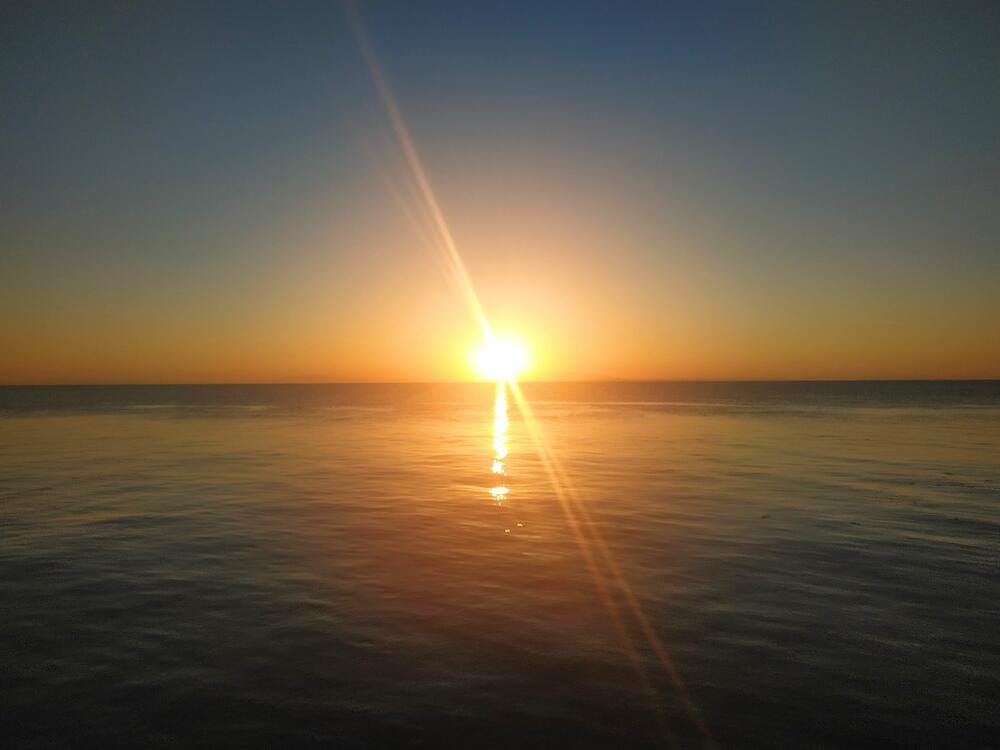
Blue Caves
We quickly found out that the first tour to the famous Blue Caves leaves at 9 AM, and the iconic Navagio Beach opens to boats at 10. So we set off at sunrise, around 7 AM, and spent 40 magical minutes exploring the caves while they were still empty and echoing with nothing but the splash of water and our own laughter.
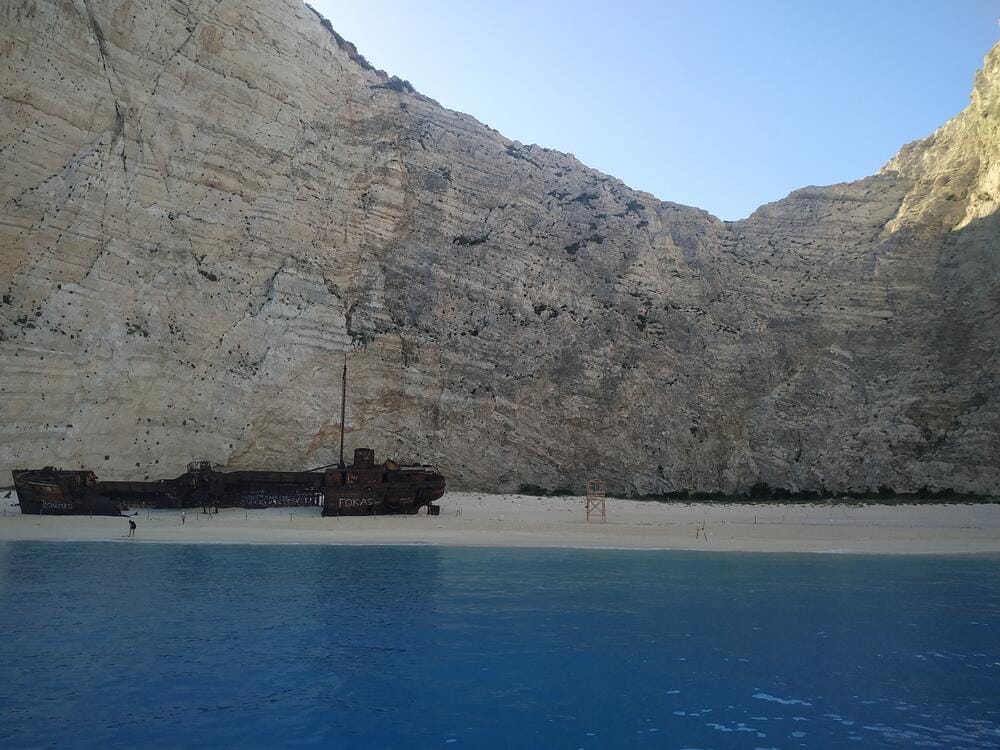
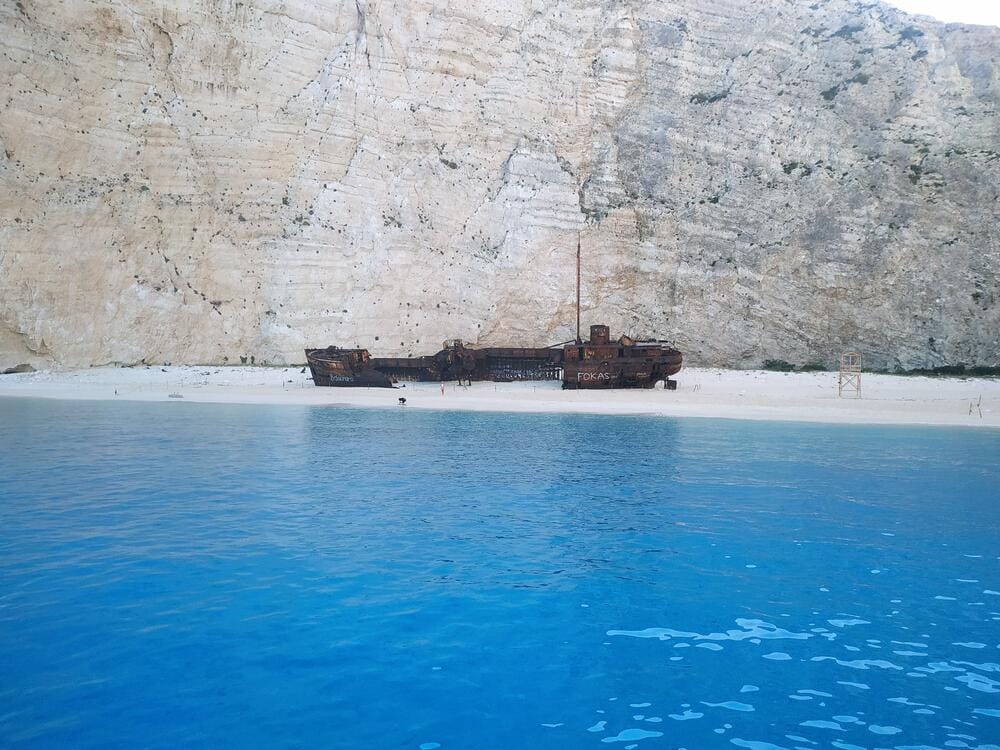
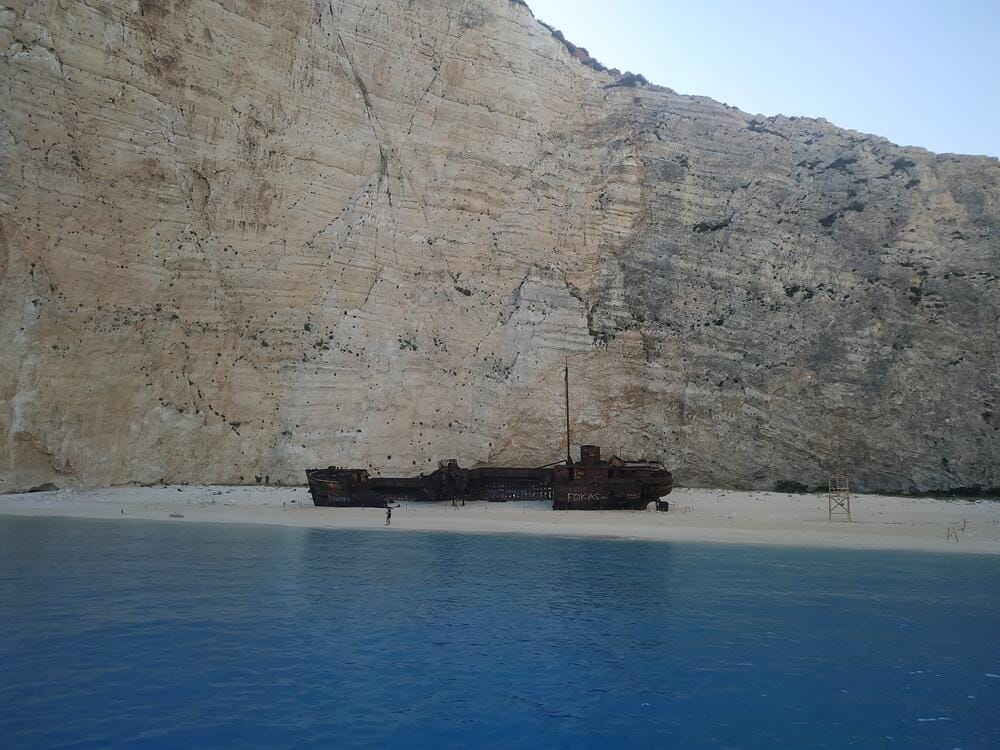
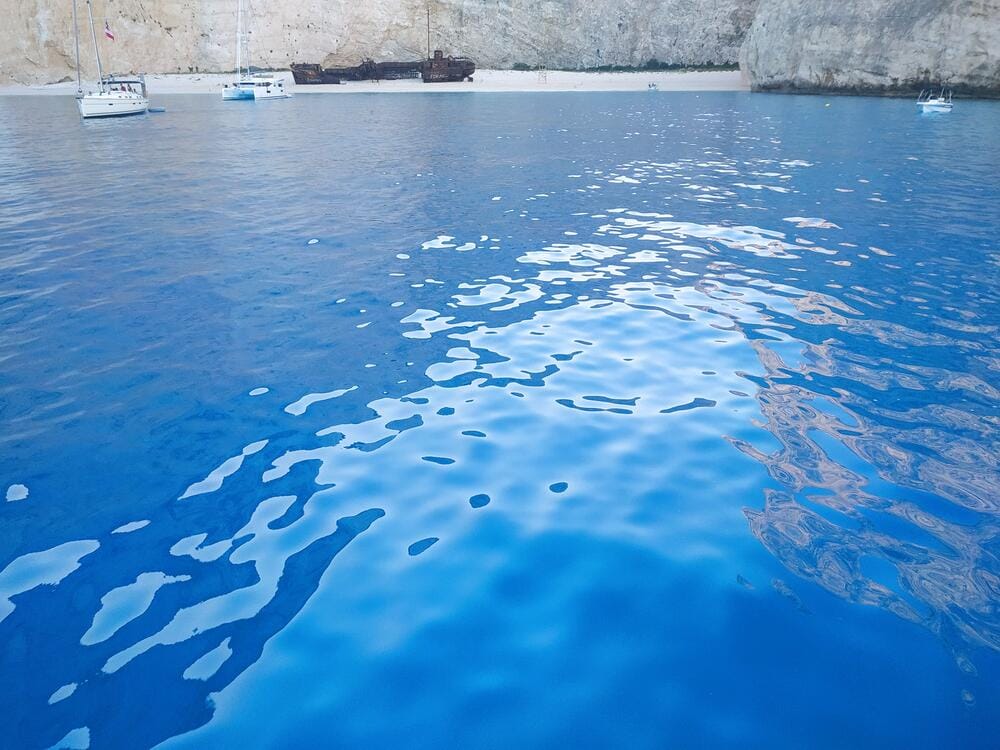
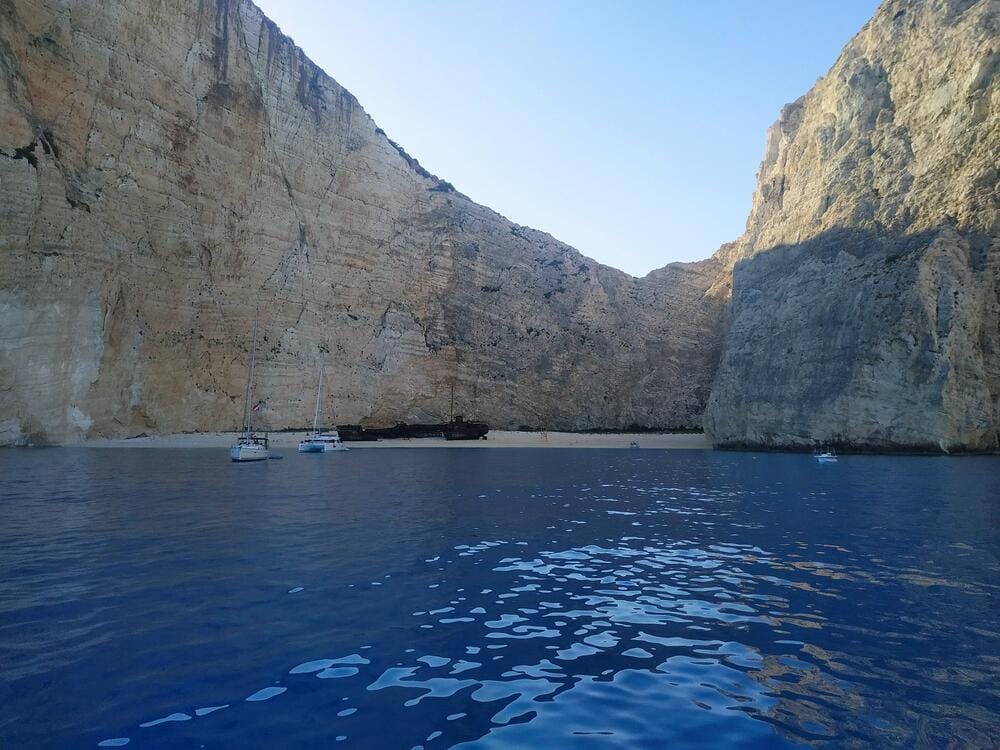
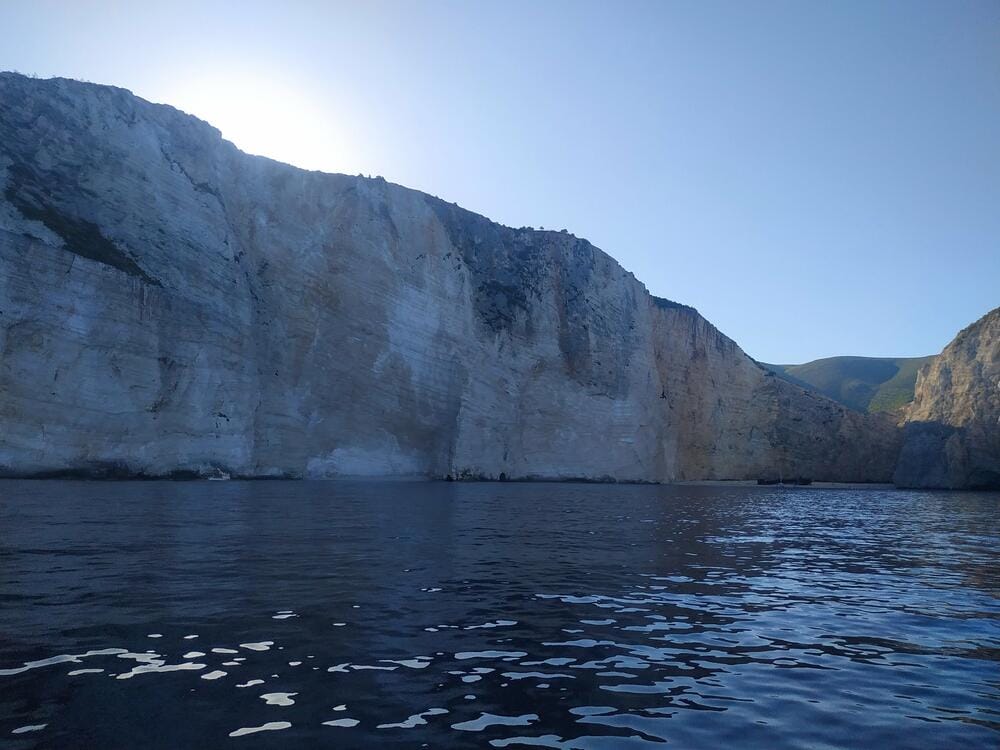
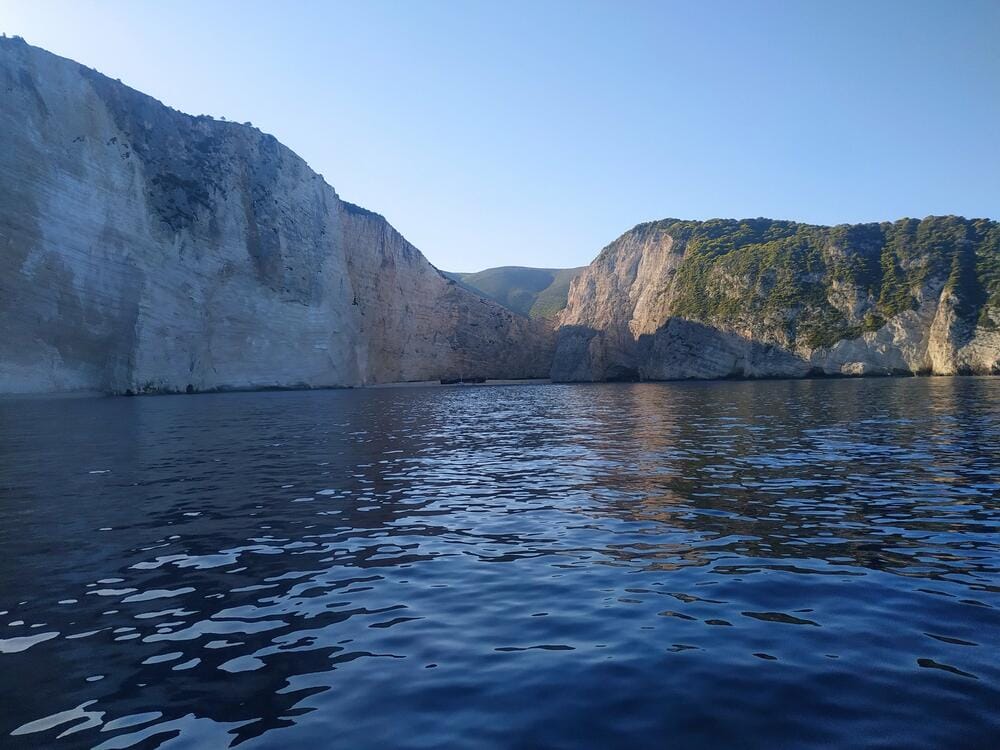
Navagio Beach
By 10 AM, we reached Navagio. Only two other catamarans were anchored there — likely they had spent the night. We dropped anchor, launched the dinghy, and just as we started going ashore, the first tour boat arrived. Then another. And another. Within minutes, the deserted beach filled with selfie sticks and noise.
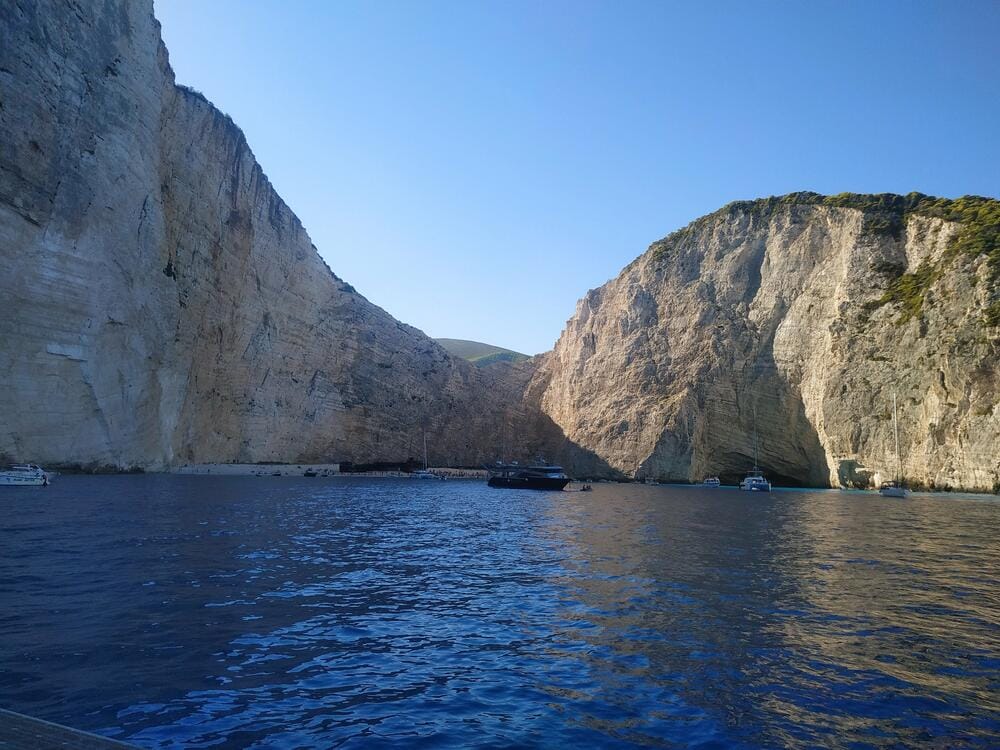
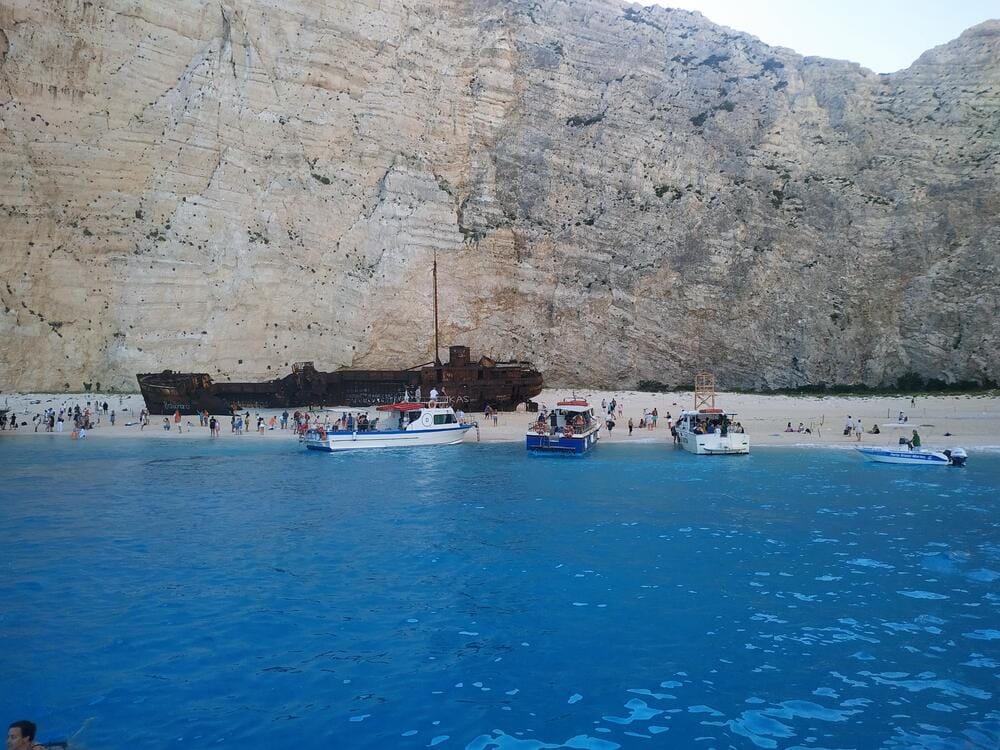
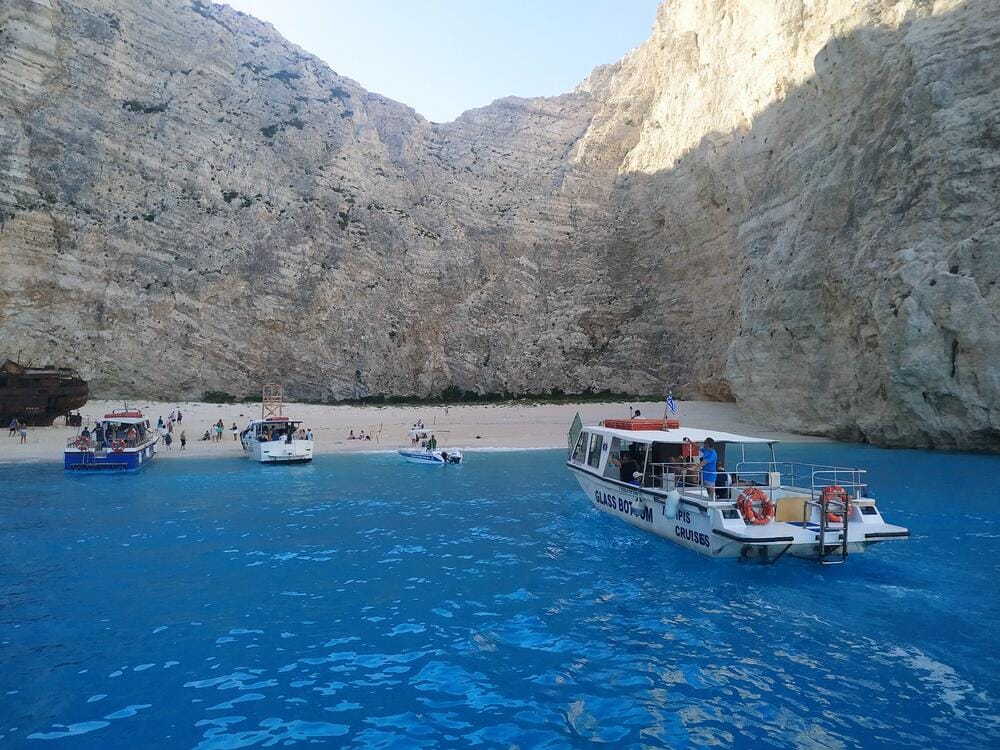
Navagio Beach
We raised anchor and set sail for Cephalonia — 20 nautical miles under full sail
Day 6 – Antisamos, Cephalonia
Cephalonia is the largest of the Ionian islands. We anchored in Antisamos Bay, using a shore line. The bay was windy, but perfect for a SUP and playing around with a small kids' catamaran we found.
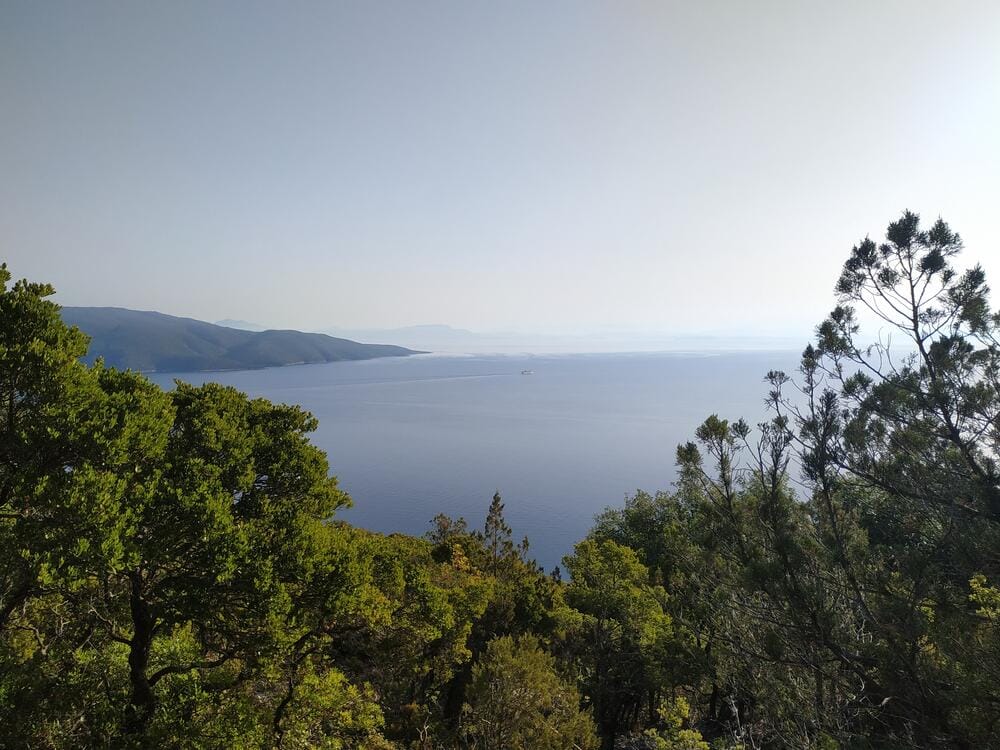
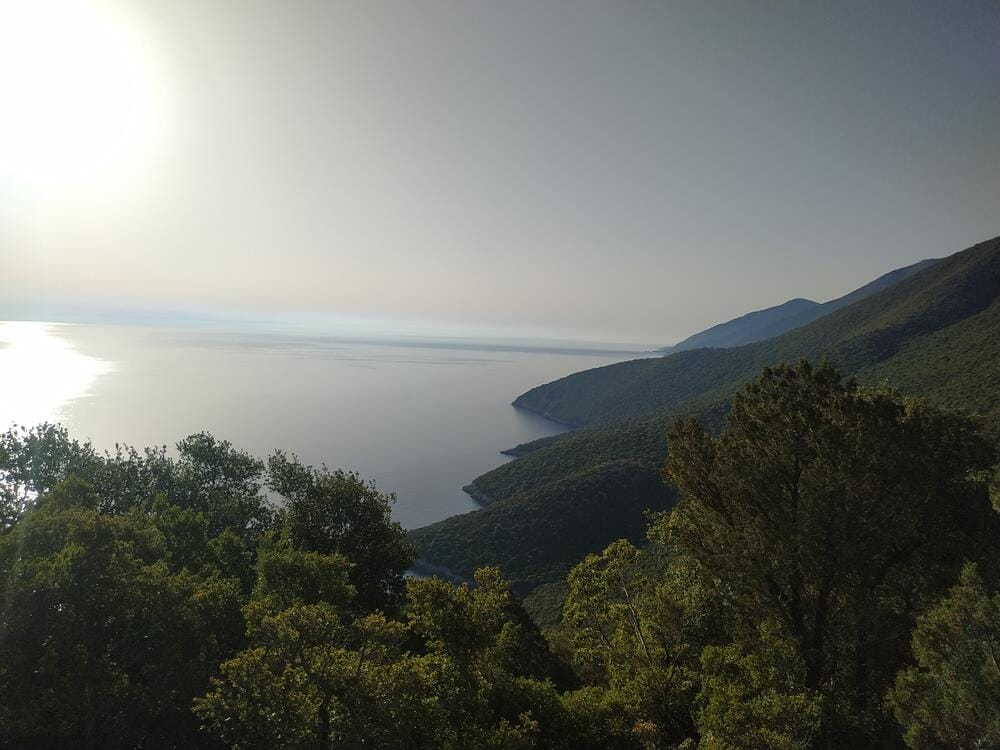
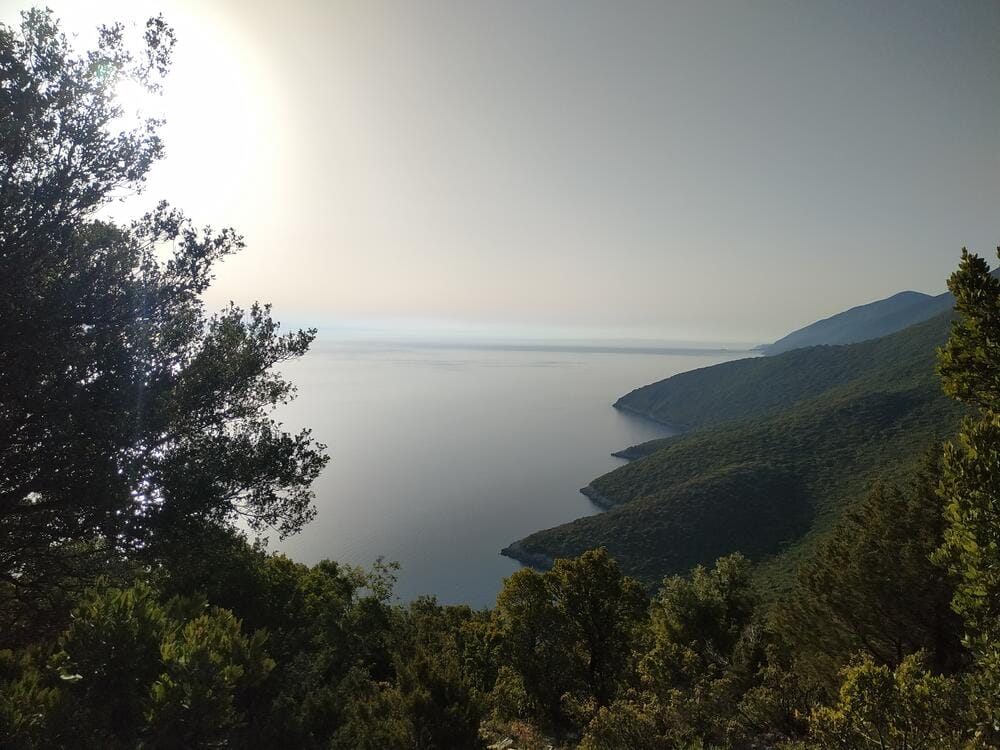
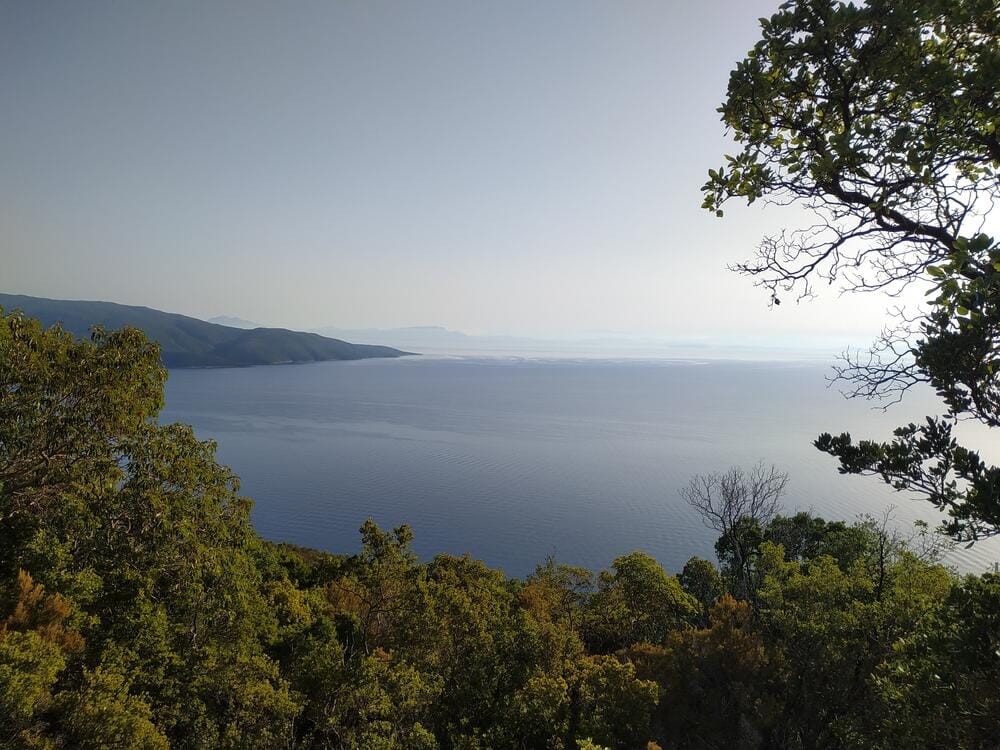
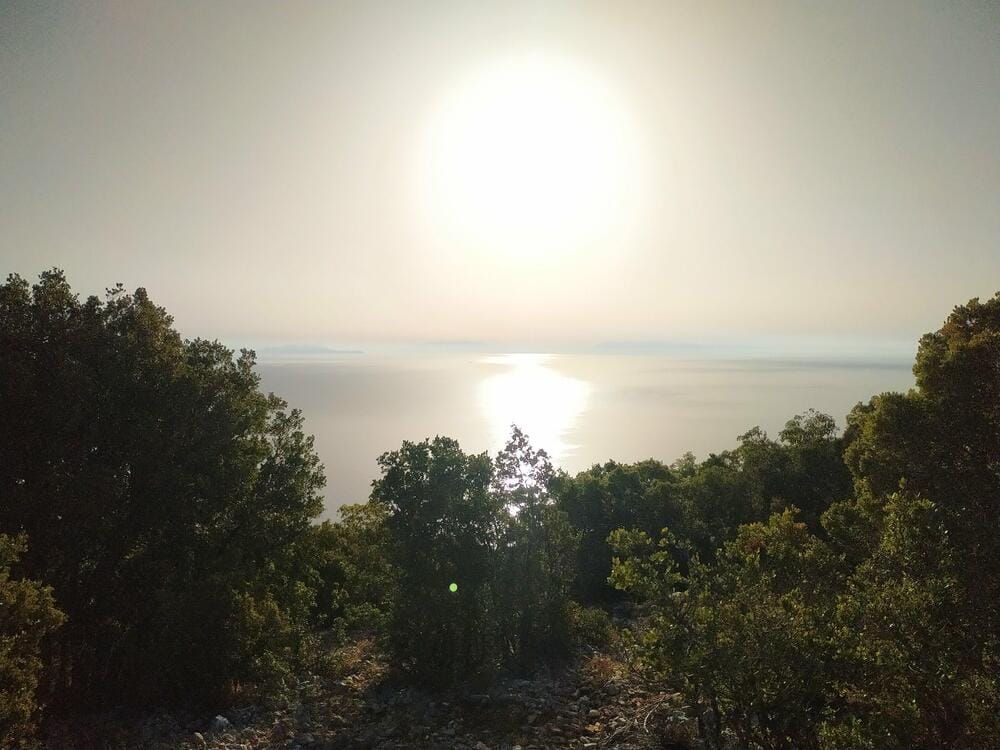
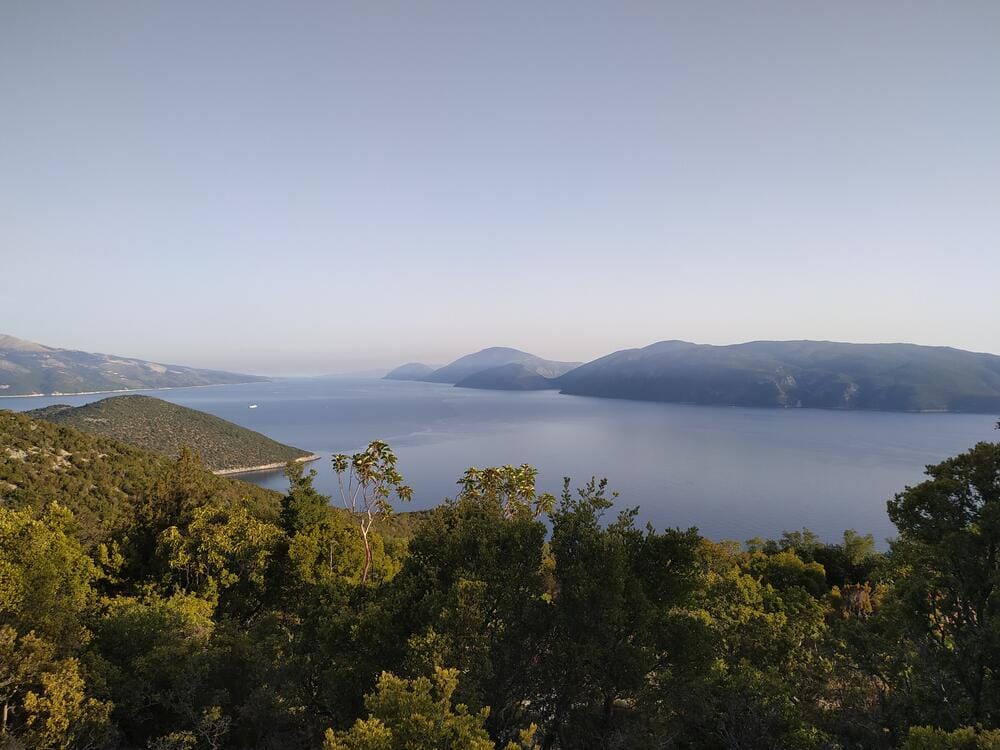
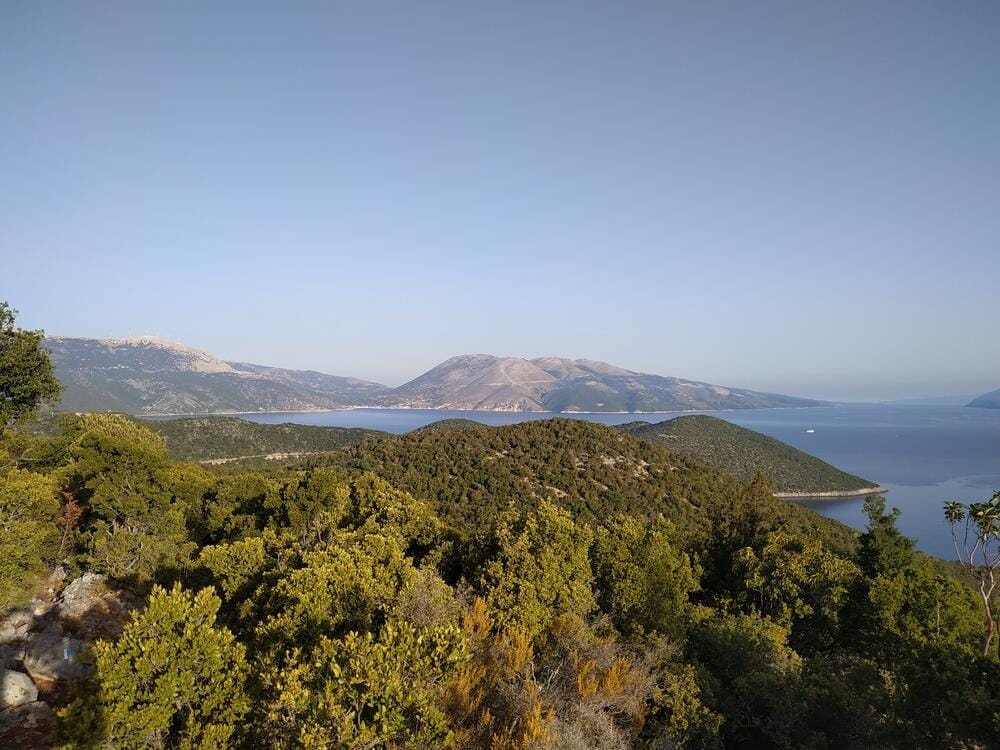
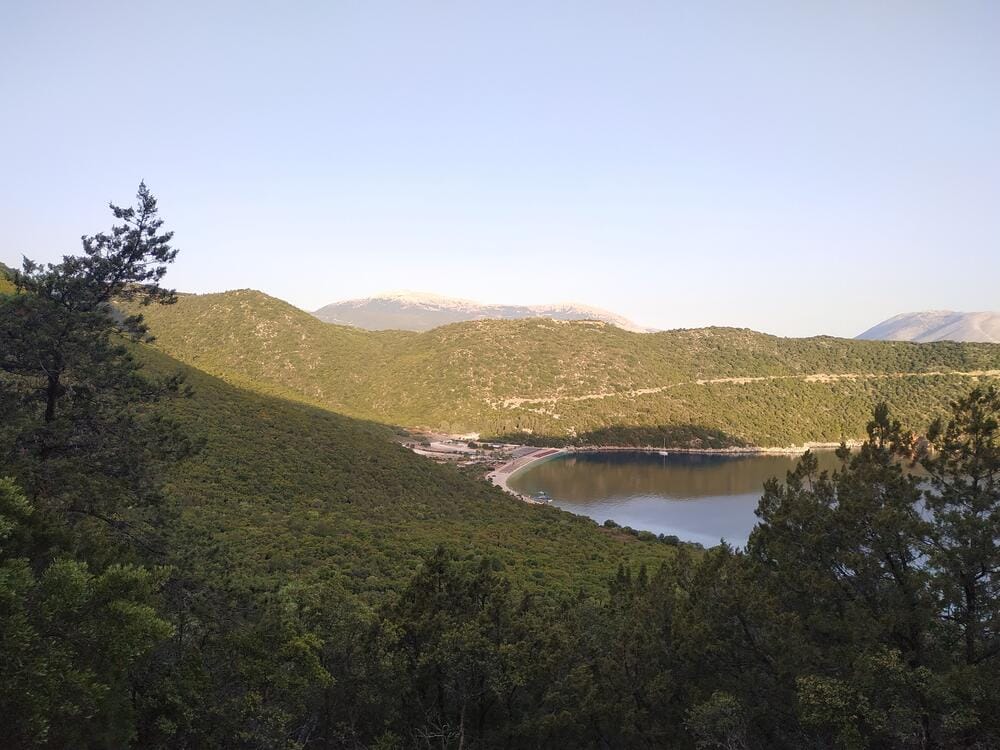
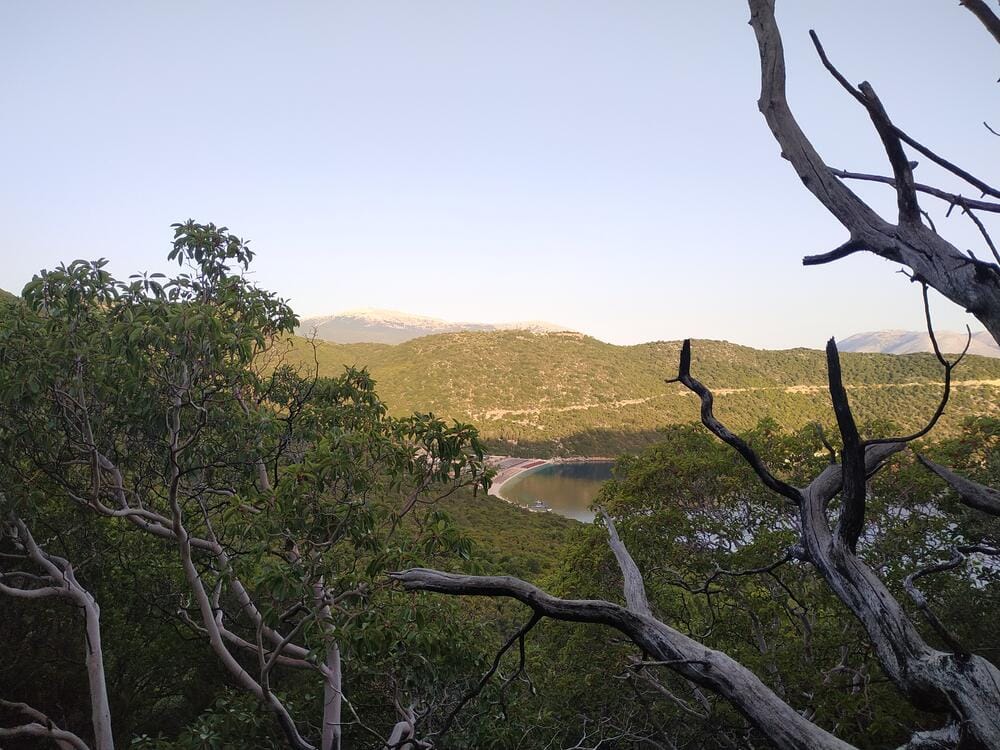
Cephalonia
We caught a bus to nearby Sami (€40) and scoped out a fuel stop. In the morning, we hiked a 6 km trail — didn’t make it to the end due to a steep climb and fatigue, but the views were worth it.
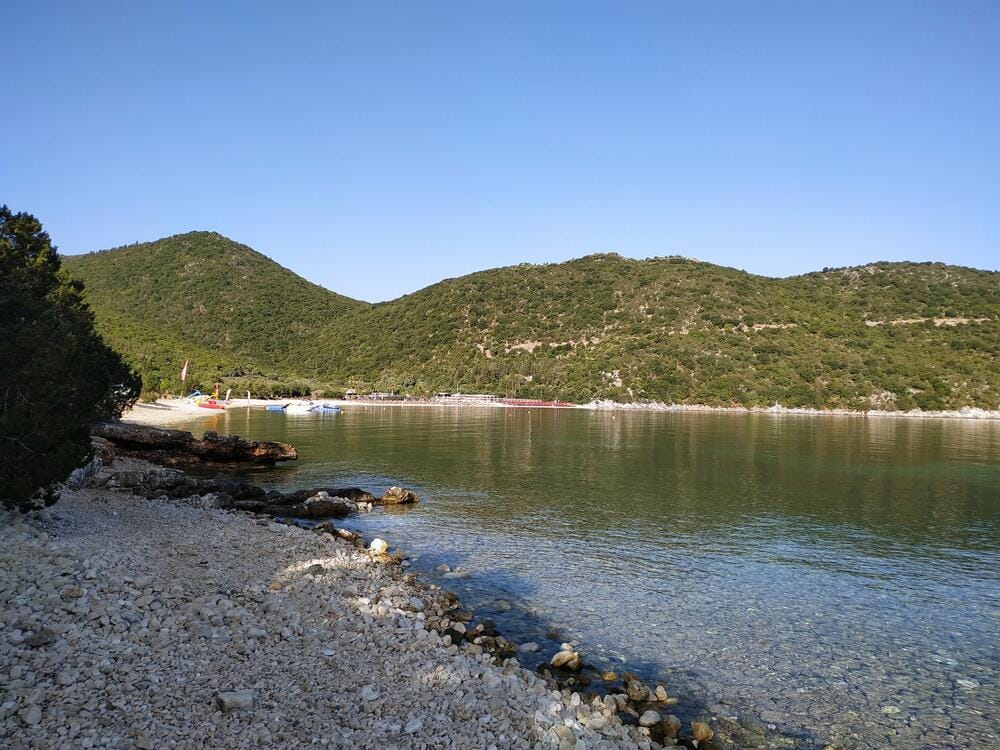
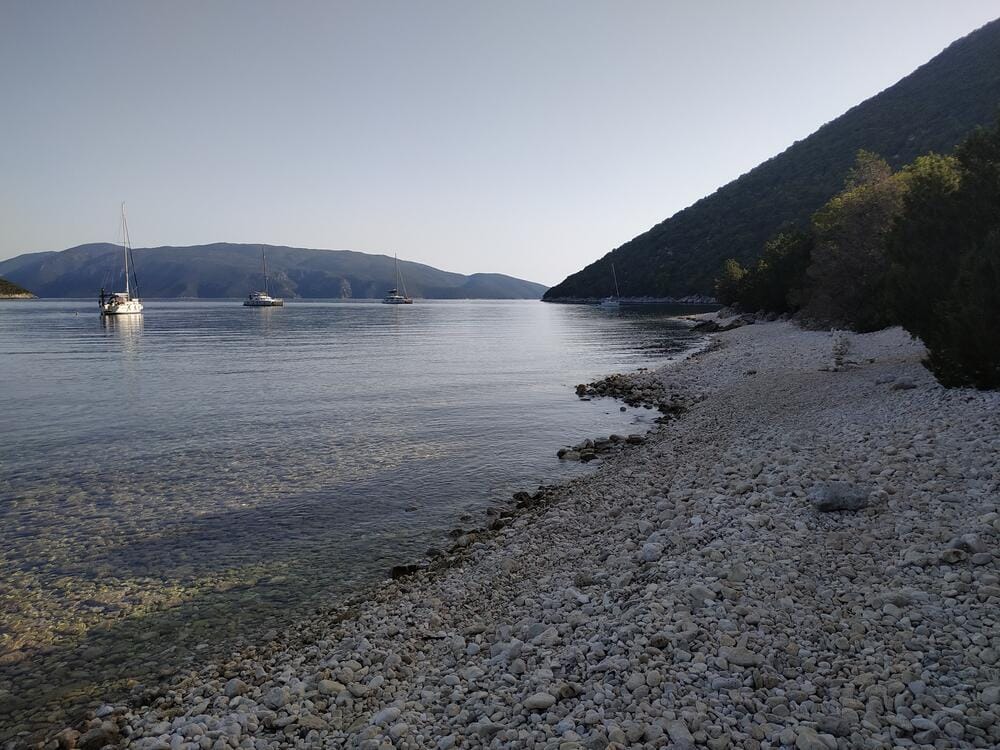
Antisamos Bay, Cephalonia
Later, we refueled in Sami (109 liters) after a smart maneuver using spring lines and bow-thruster-free pivoting. Our boat-handling confidence was definitely growing.
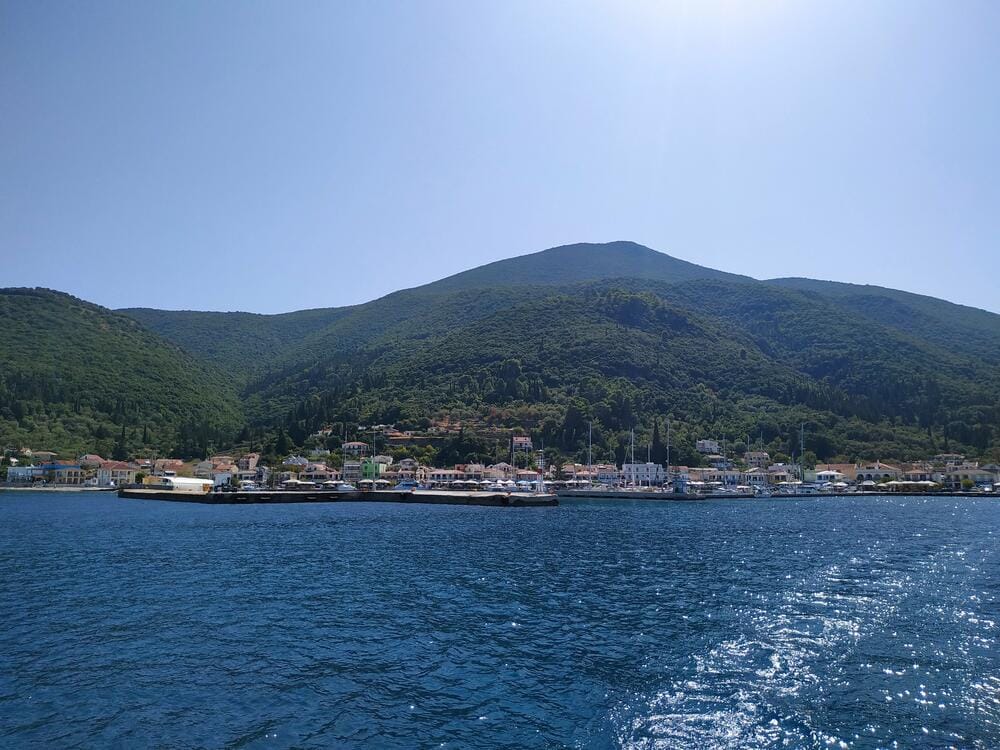
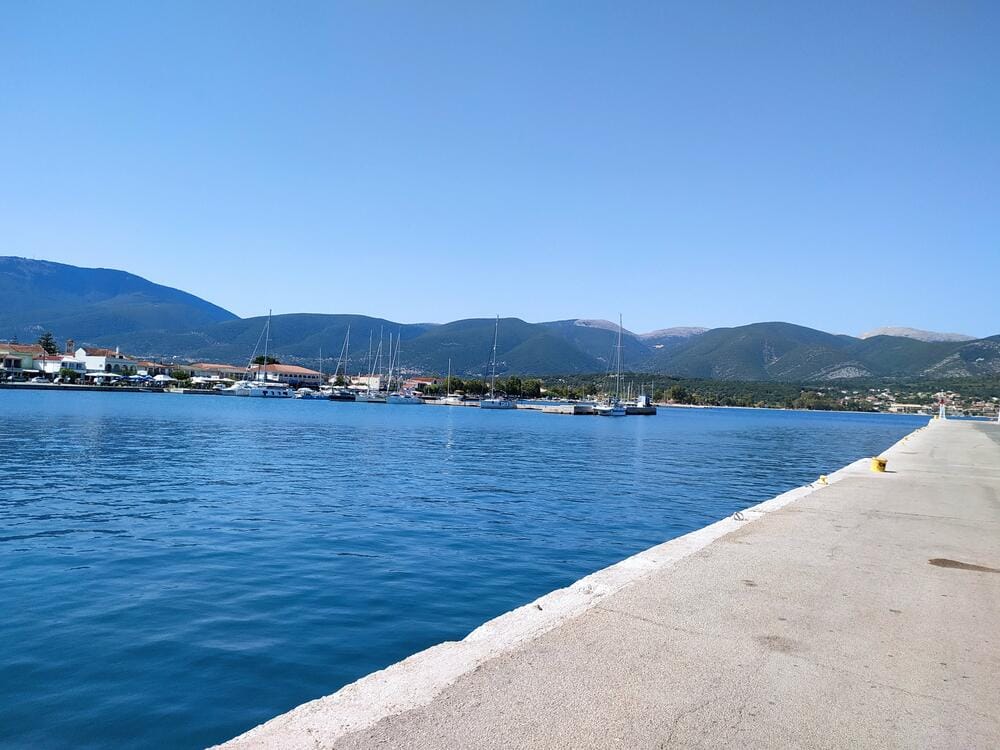
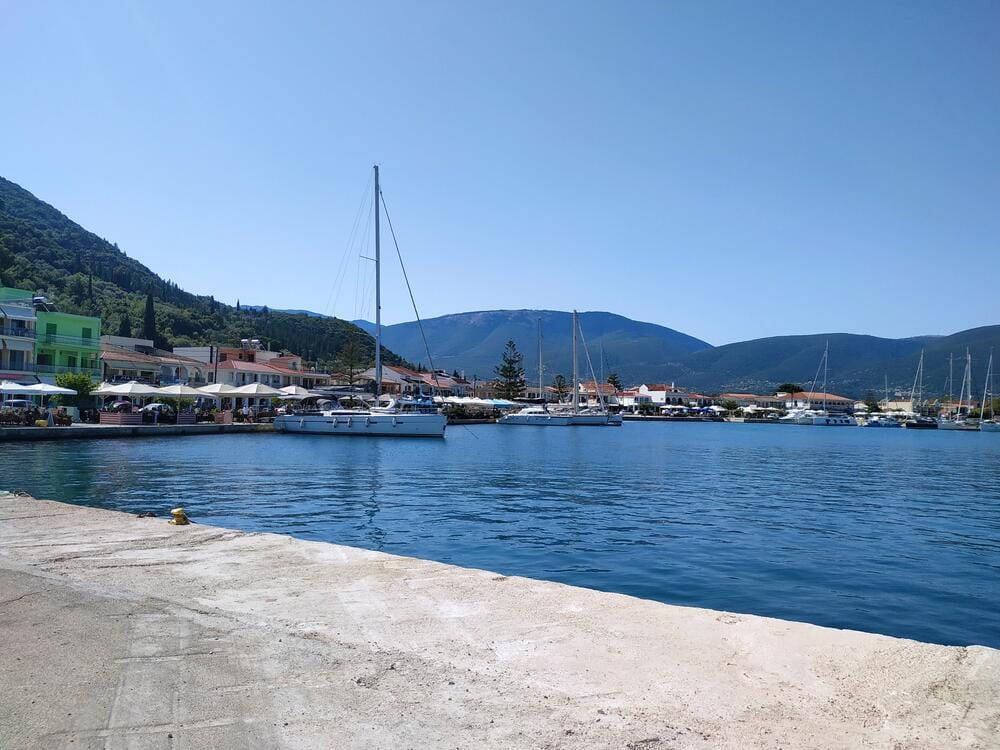
Sami, Cephalonia
Day 7 – Fiskardo
Fiskardo is one of the few towns in Cephalonia untouched by the devastating 1953 earthquake. It’s charming.
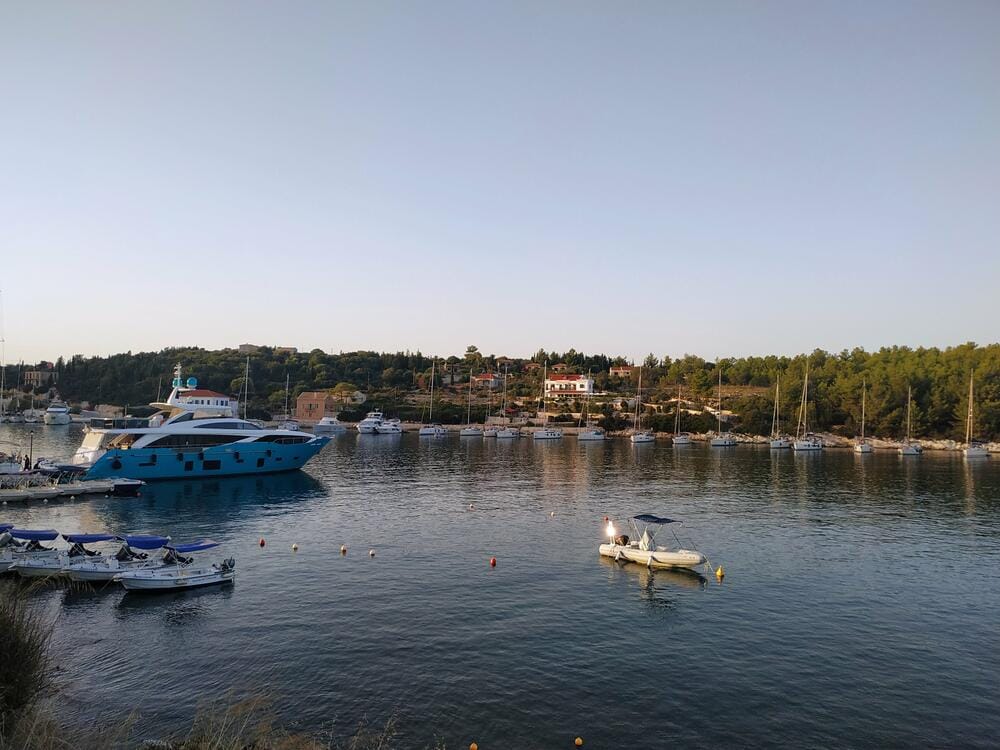
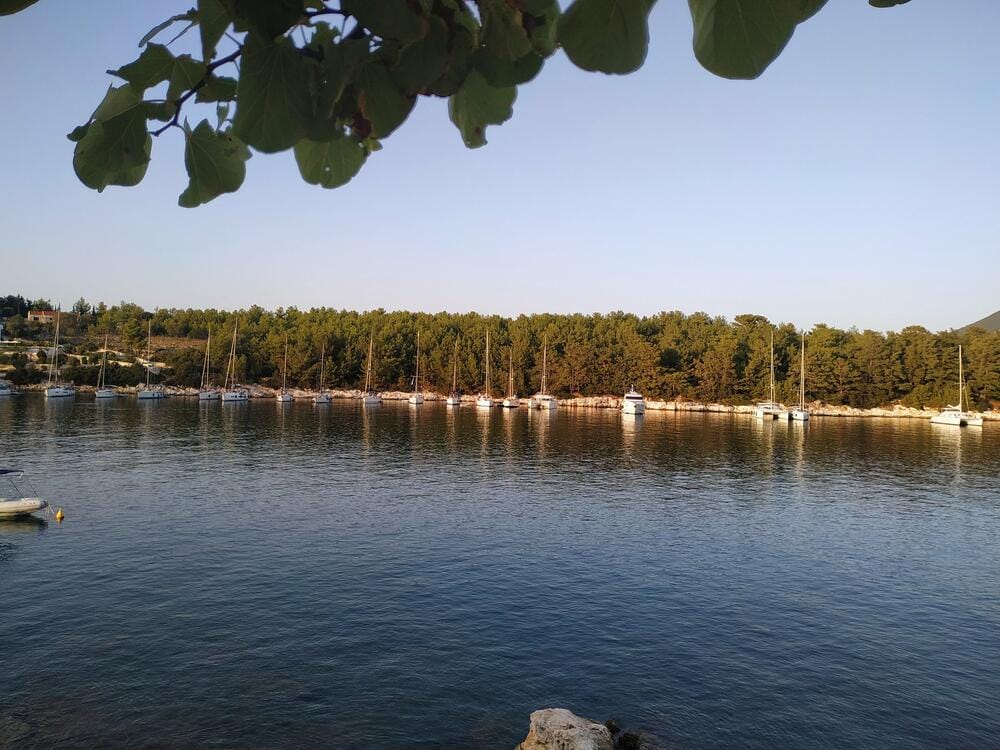
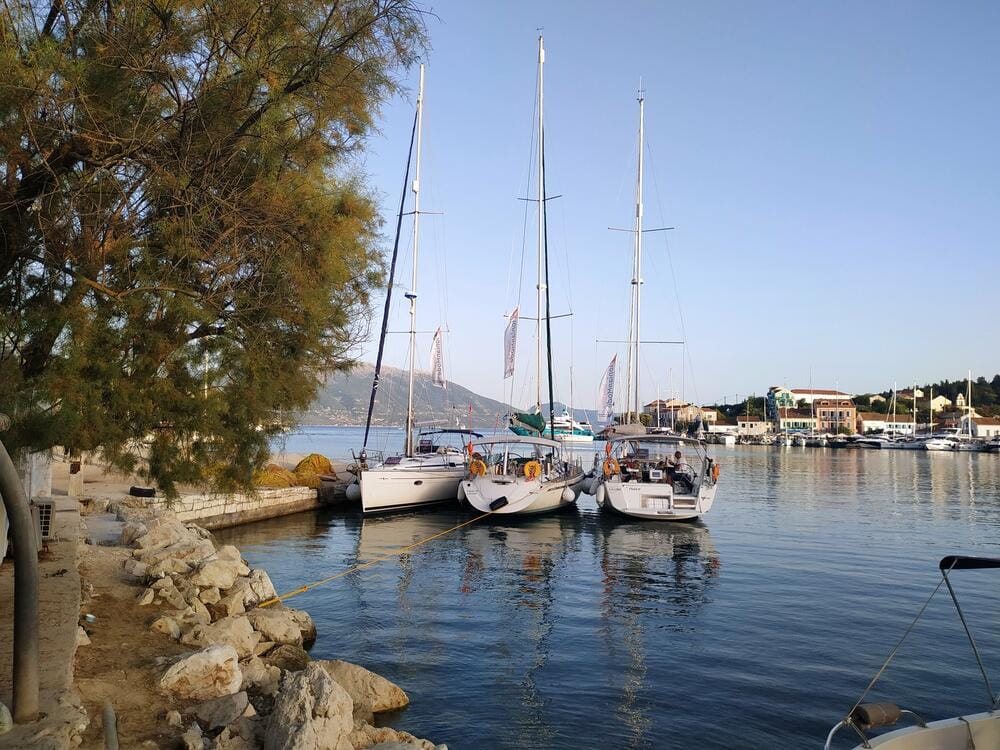
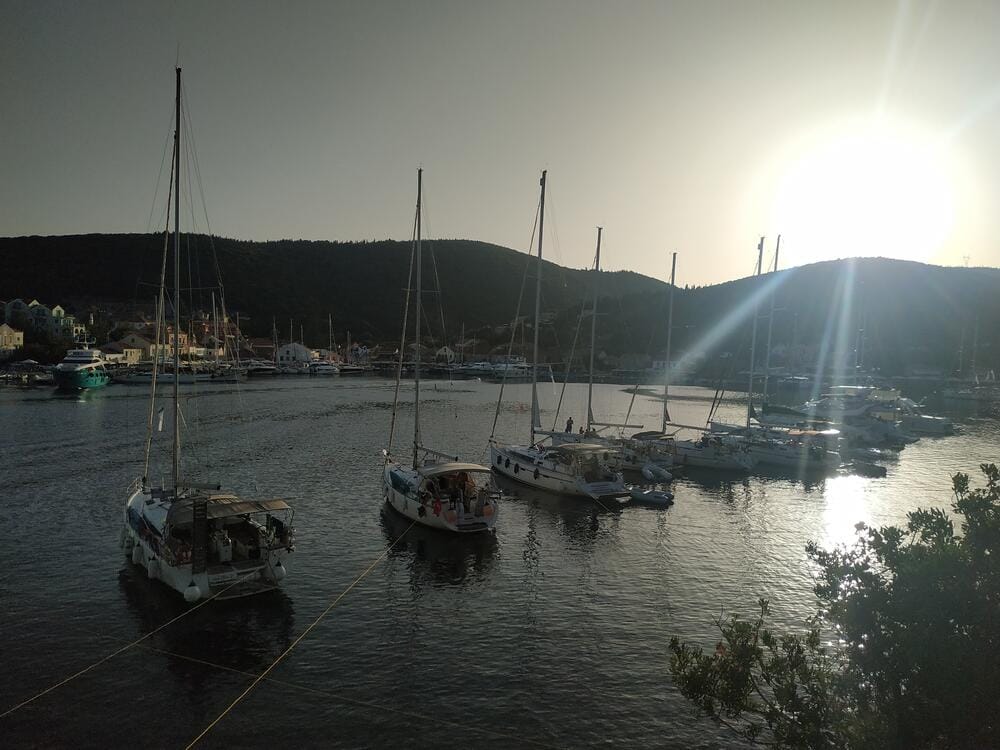
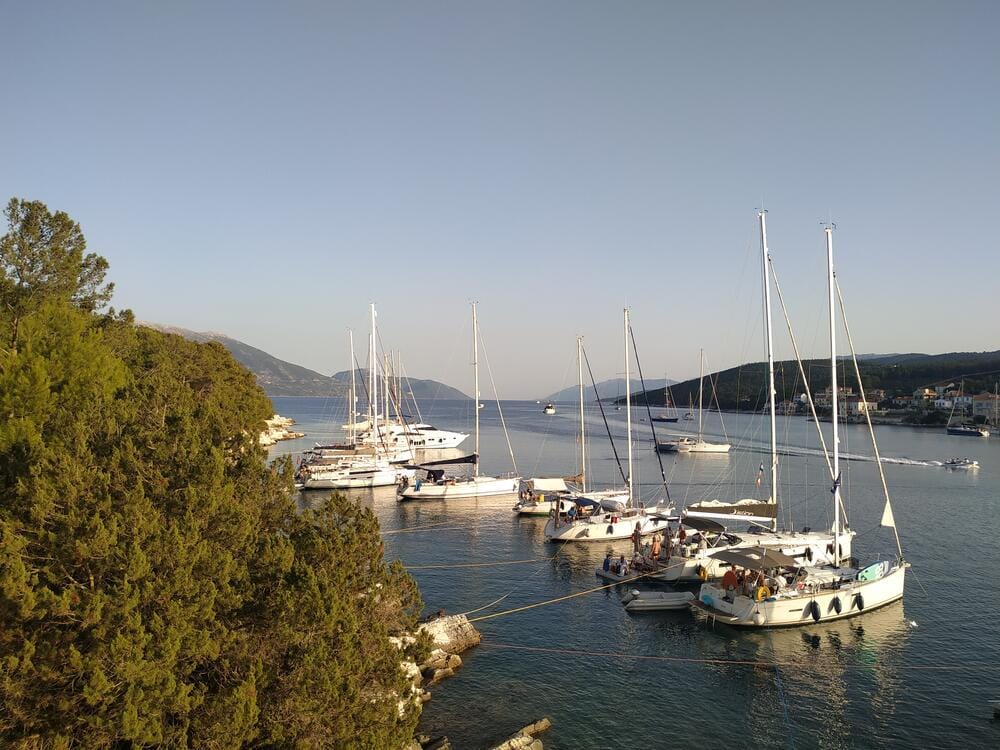
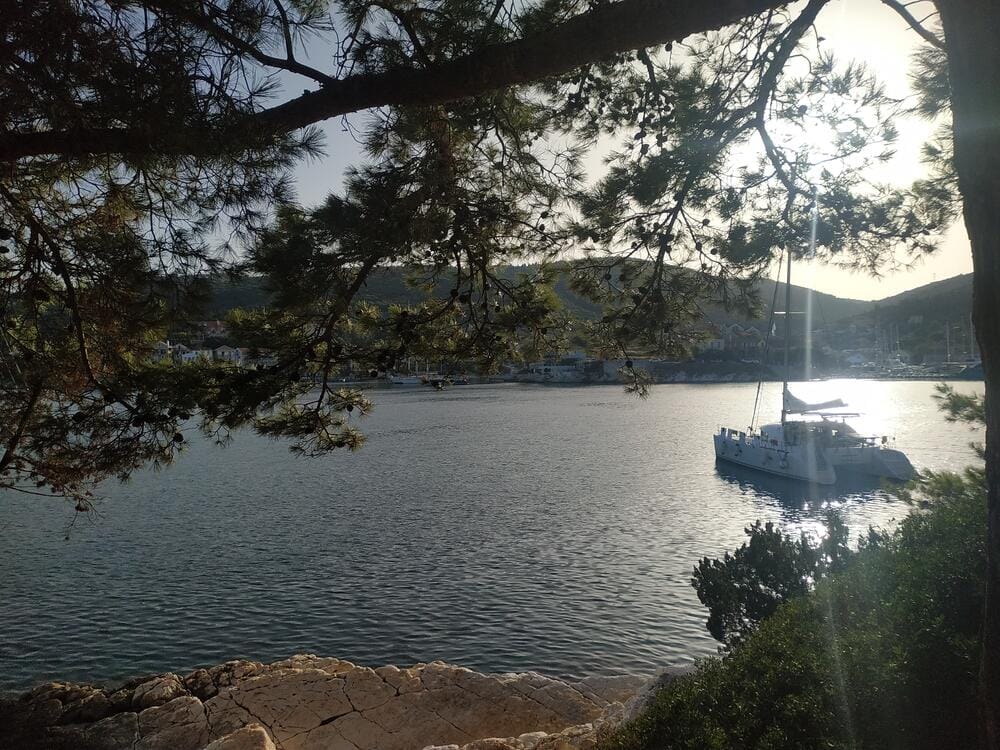



Fiskardo, Cephalonia
We made multiple approaches near the quay, measuring depths with a paddle — just not enough water. Several boats failed to dock and gave up. We did the same and anchored with a stern line to the northern shore. Challenging side winds and passing ferries added to the thrill.

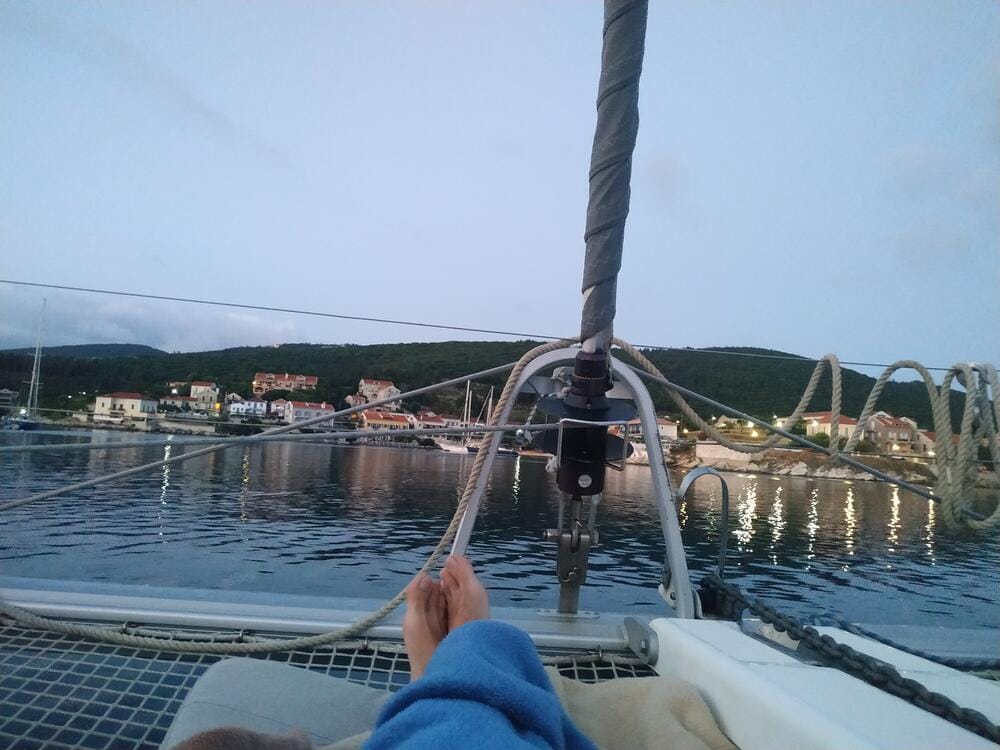
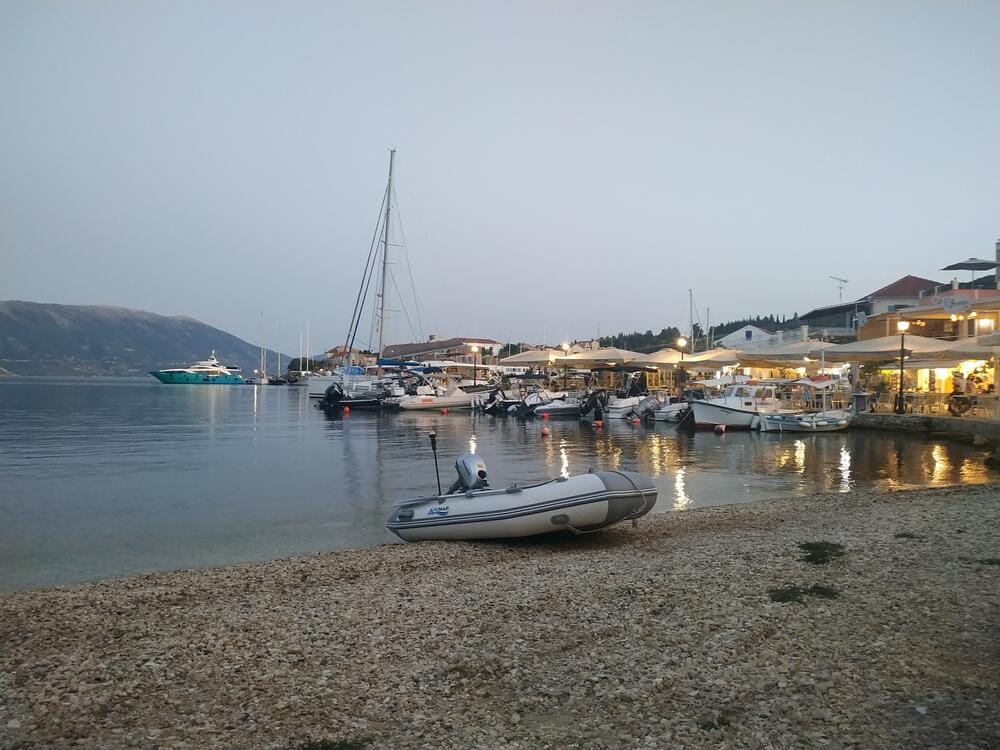
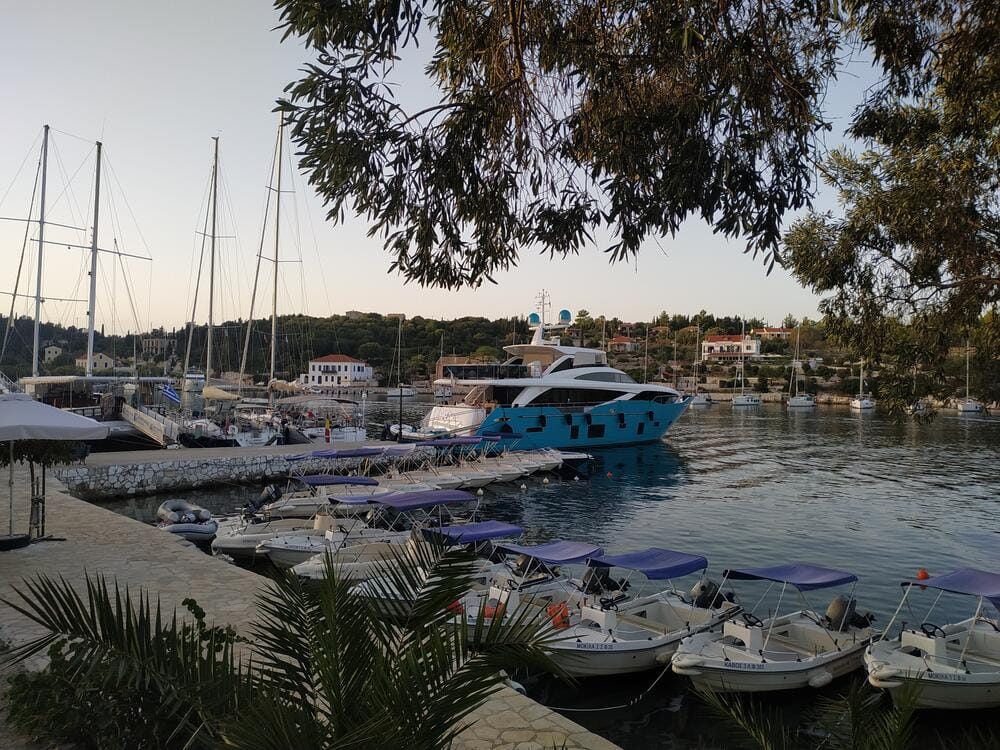
Fiskardo, Cephalonia
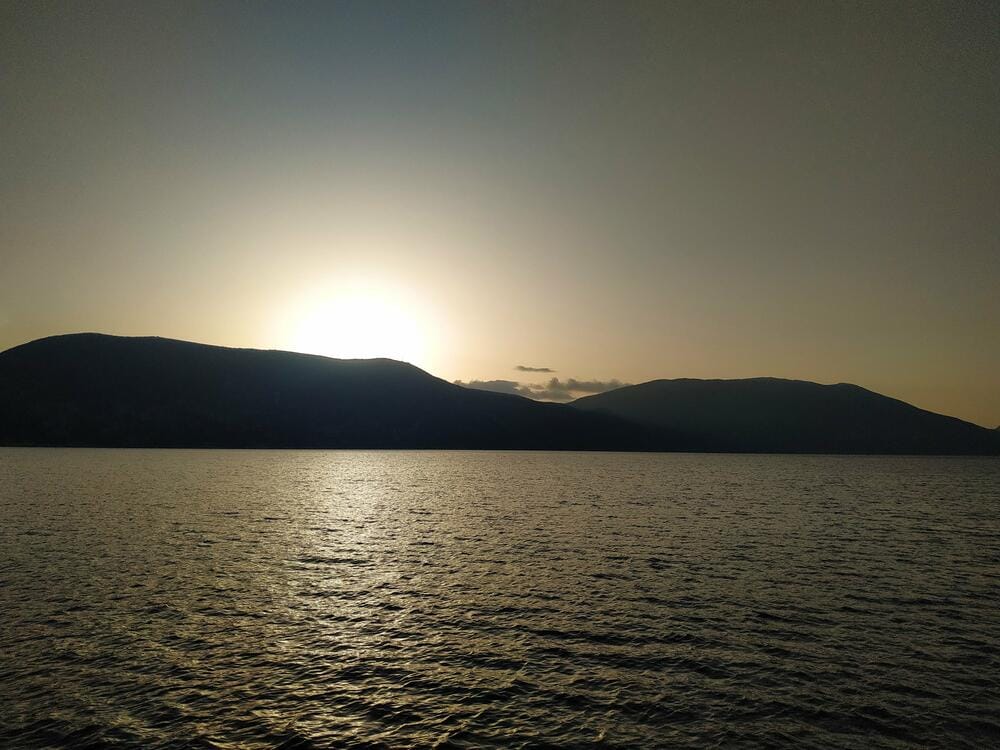
Day 8 – Sivota (Lefkada)
An orange weather alert was in the forecast, so we decided to secure a spot early. We arrived in Sivota first thing in the morning and moored side-to at one restaurant's pontoon. Two chartered catamarans were supposed to arrive after us by reservation — one of them showed up.
The restaurant itself was pretty overpriced — they charged €500 for a dinner for ten. Toilets and showers were on the opposite side of the bay. The nearby beach had strangely cold water, but we still managed to enjoy a SUP session.
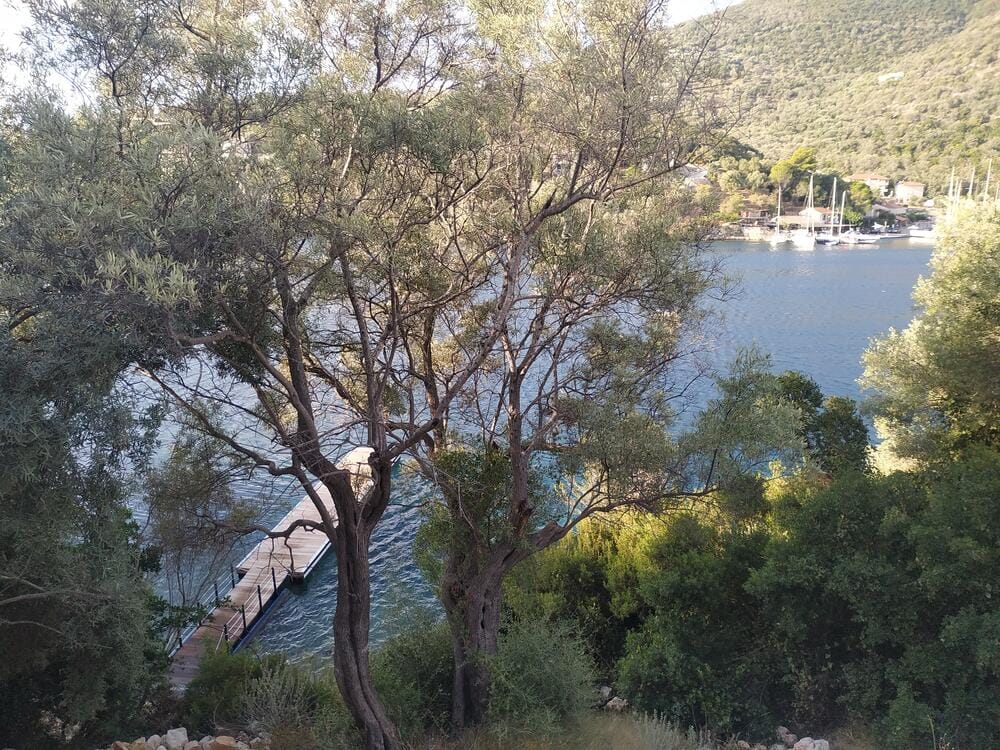
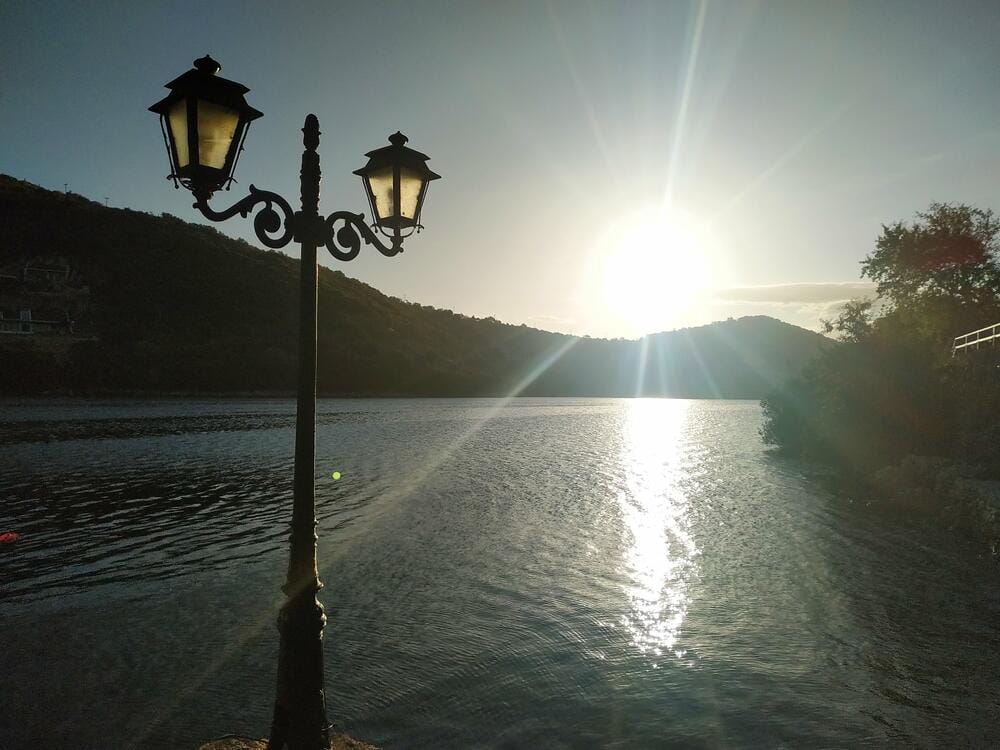
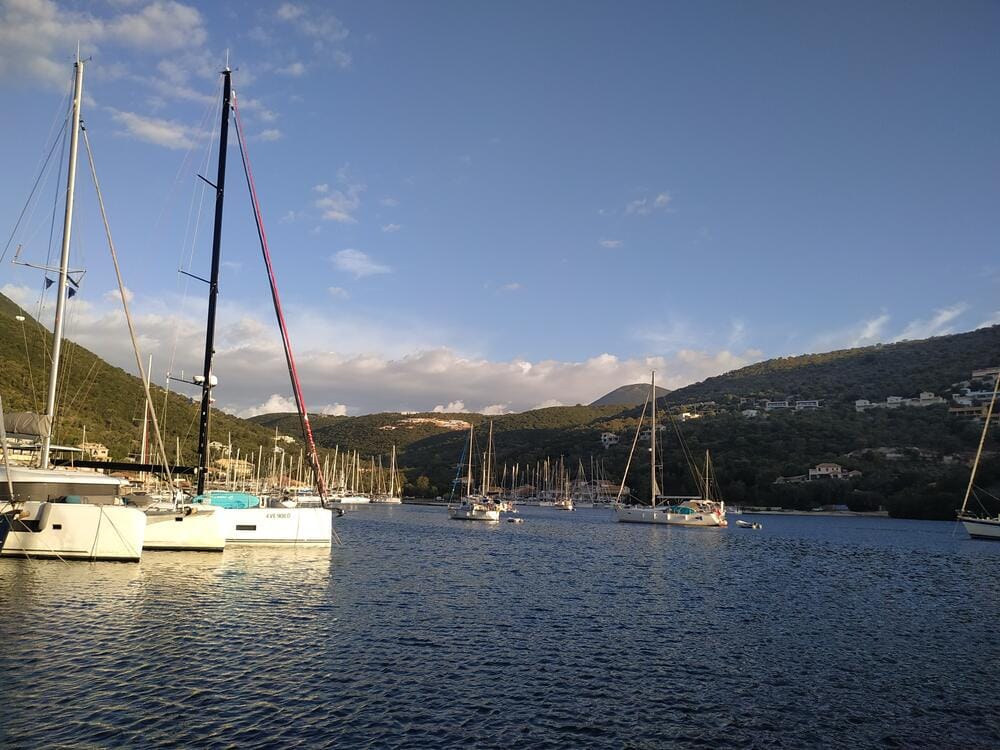
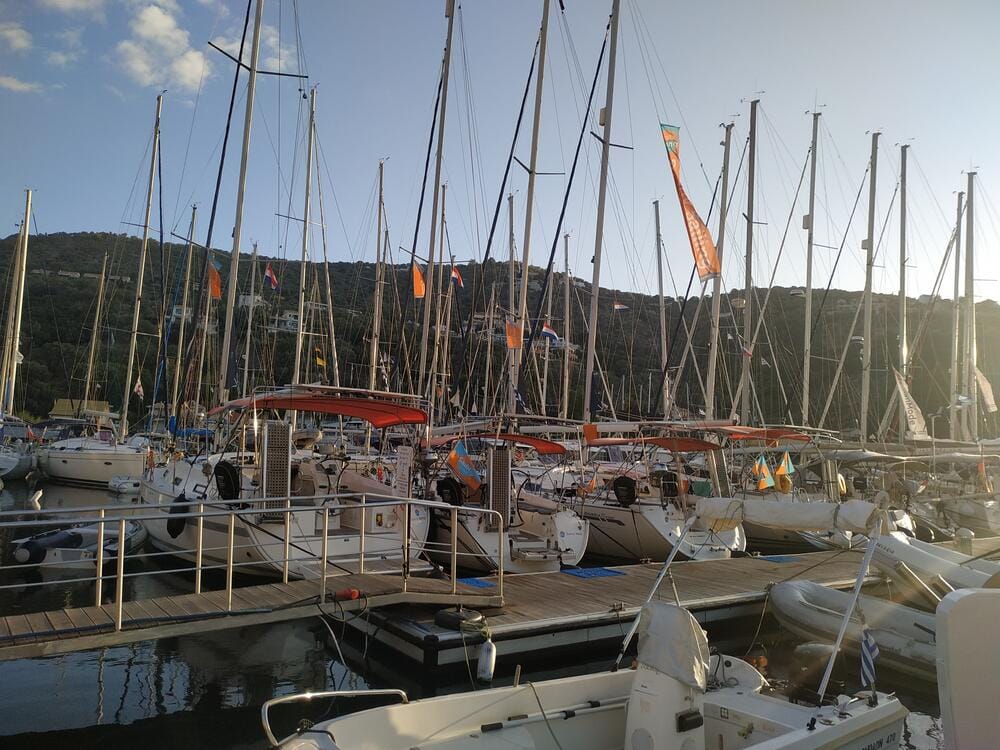
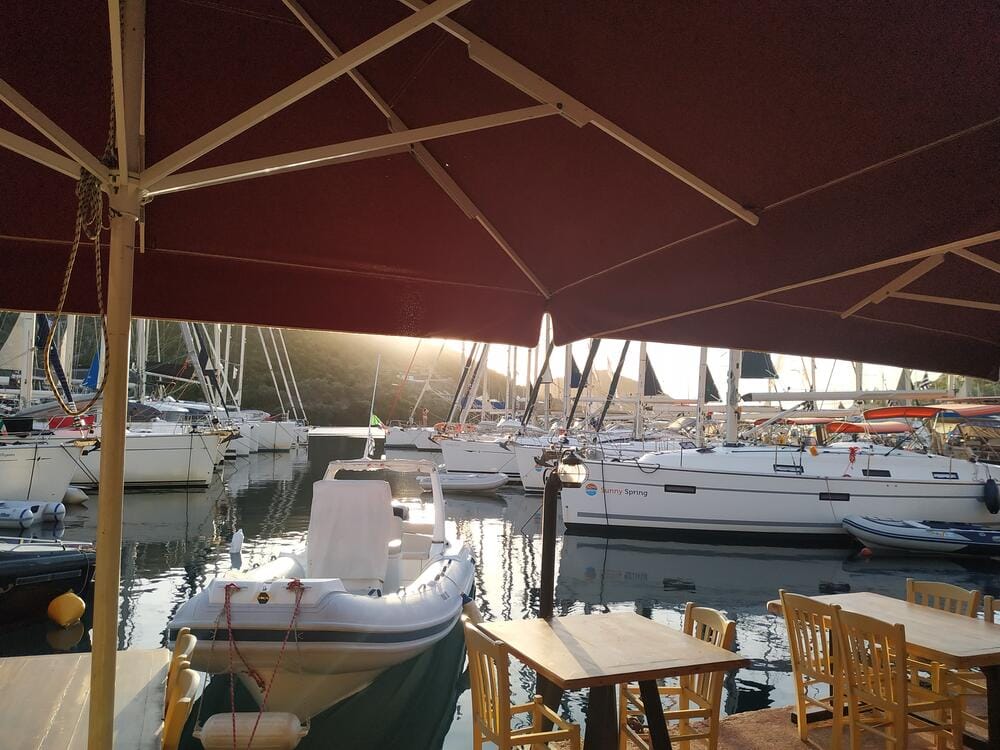
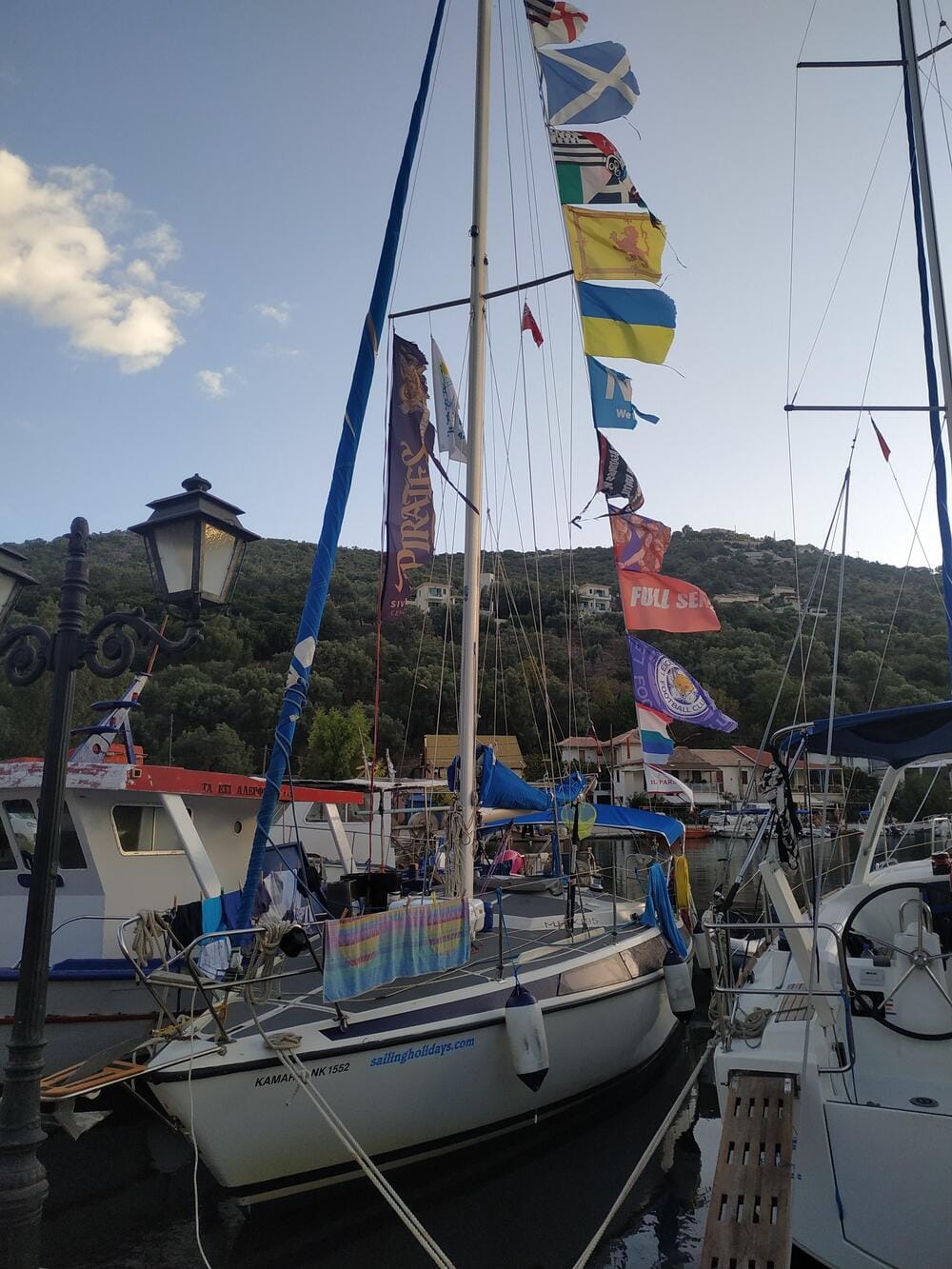
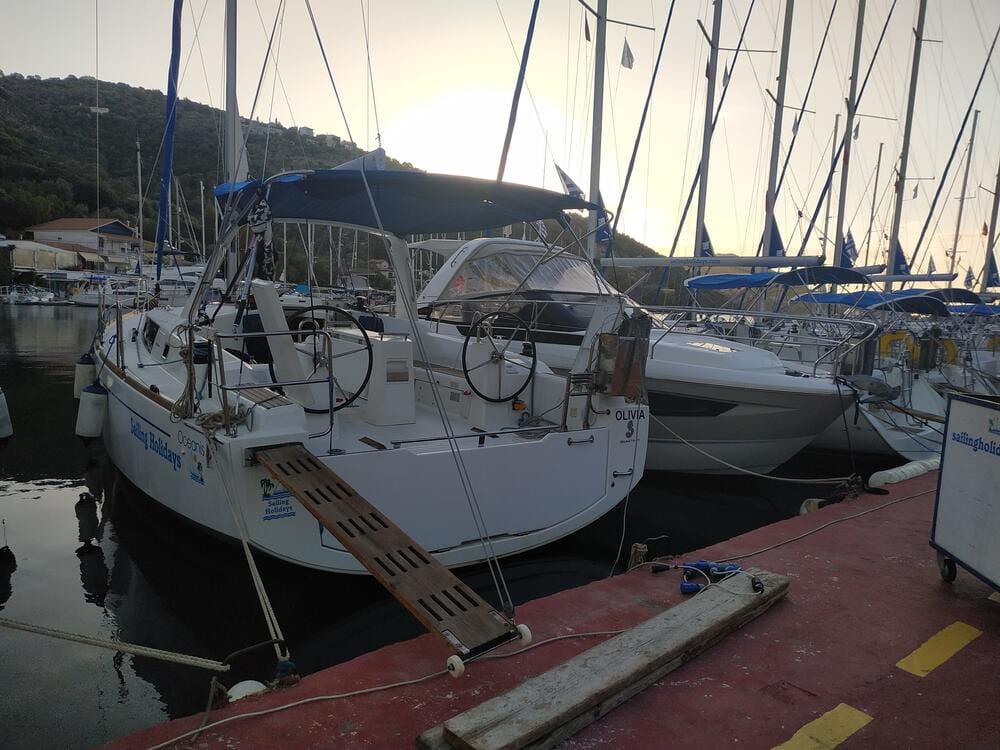
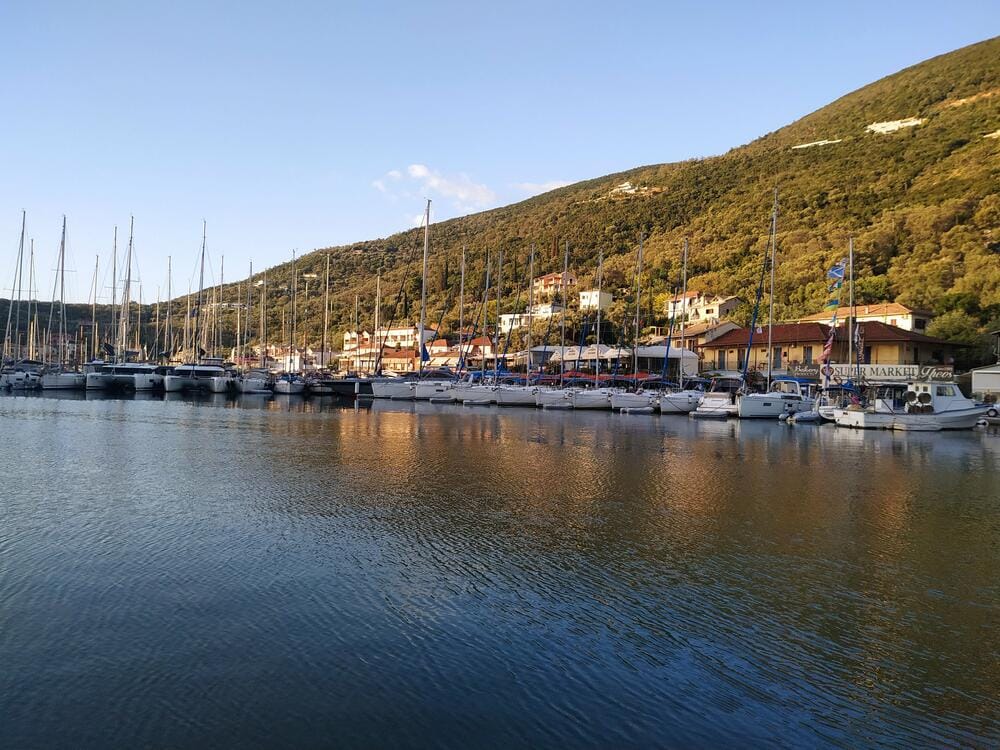
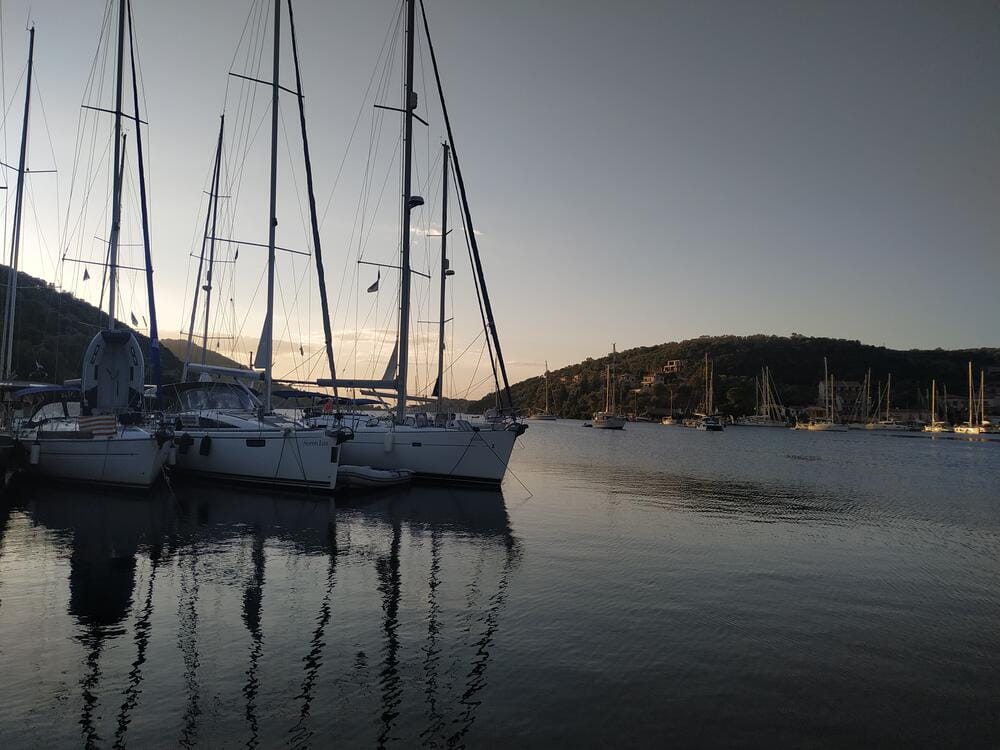
Sivota, Lefkada
The bay is beautiful and well-protected, though a bit smelly in places. In the afternoon, we hiked 4 km inland to visit the local Lefkaditiki Gi Winery for a tasting and a short tour. Their rosé, white, and semi-sweet wines were decent. They distribute all over Greece and export to the Netherlands.
That night, the wind picked up to 40 knots. We were glad to be safely moored.
In the morning, we had breakfast at the Sivota bakery — absolutely top-notch. We also managed a quick stop at the laundromat: €6 for 5 kg of laundry.
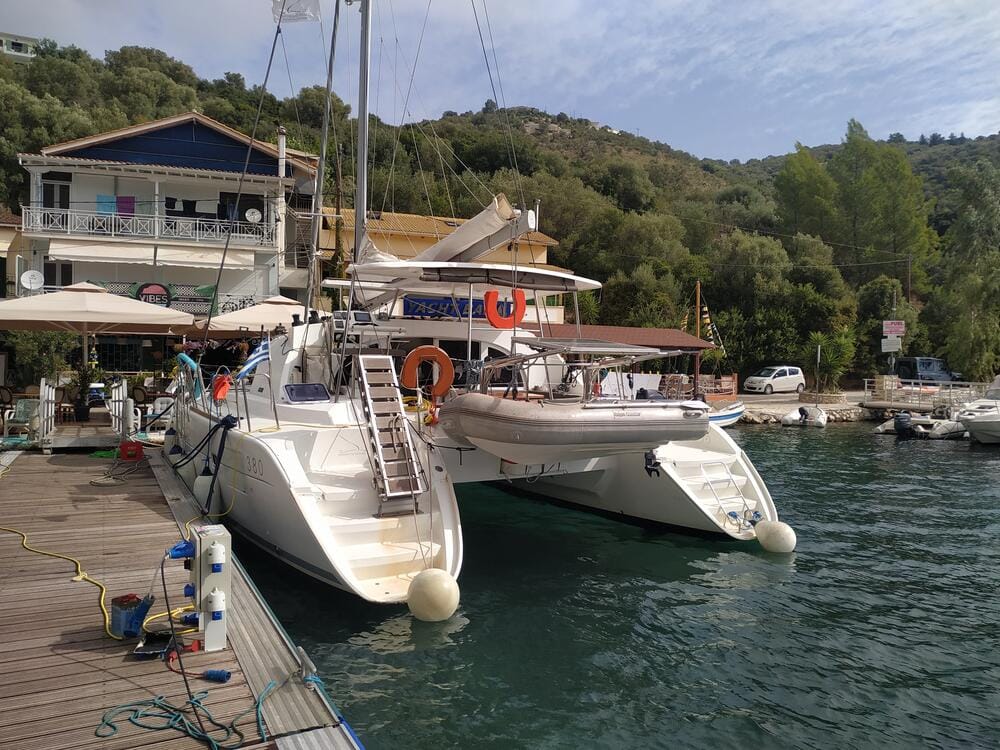
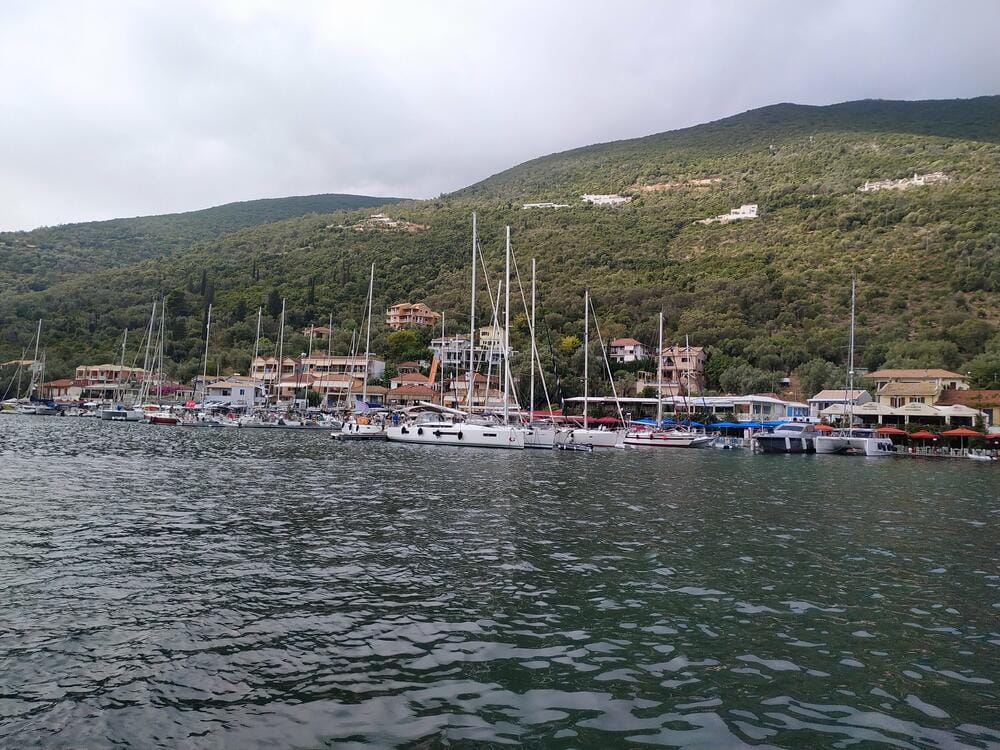
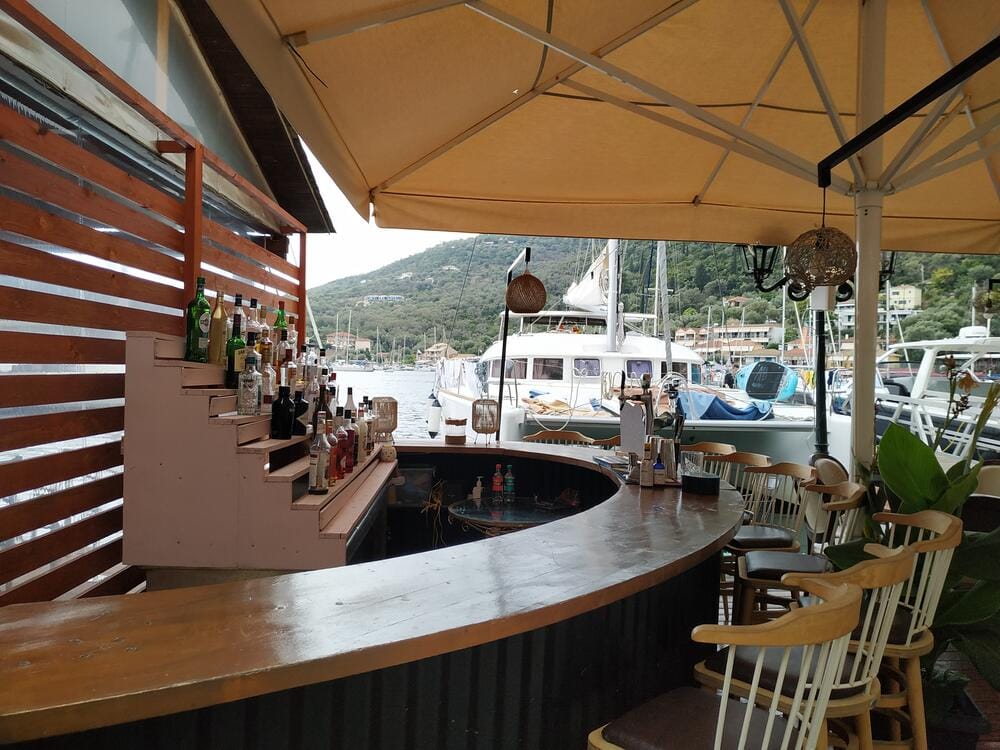
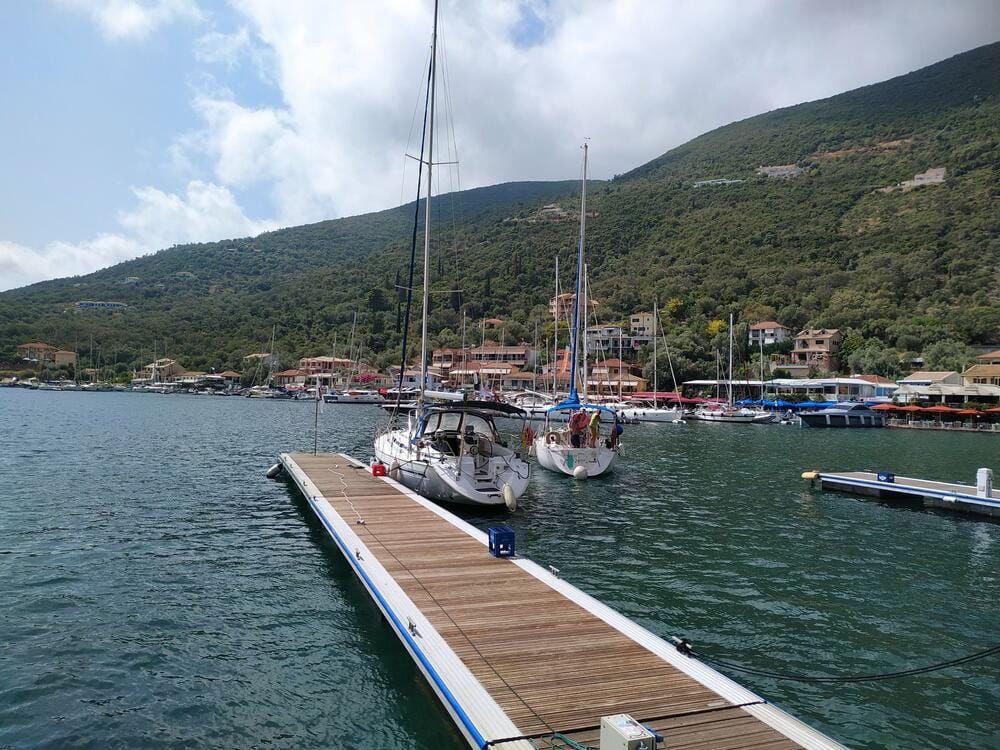
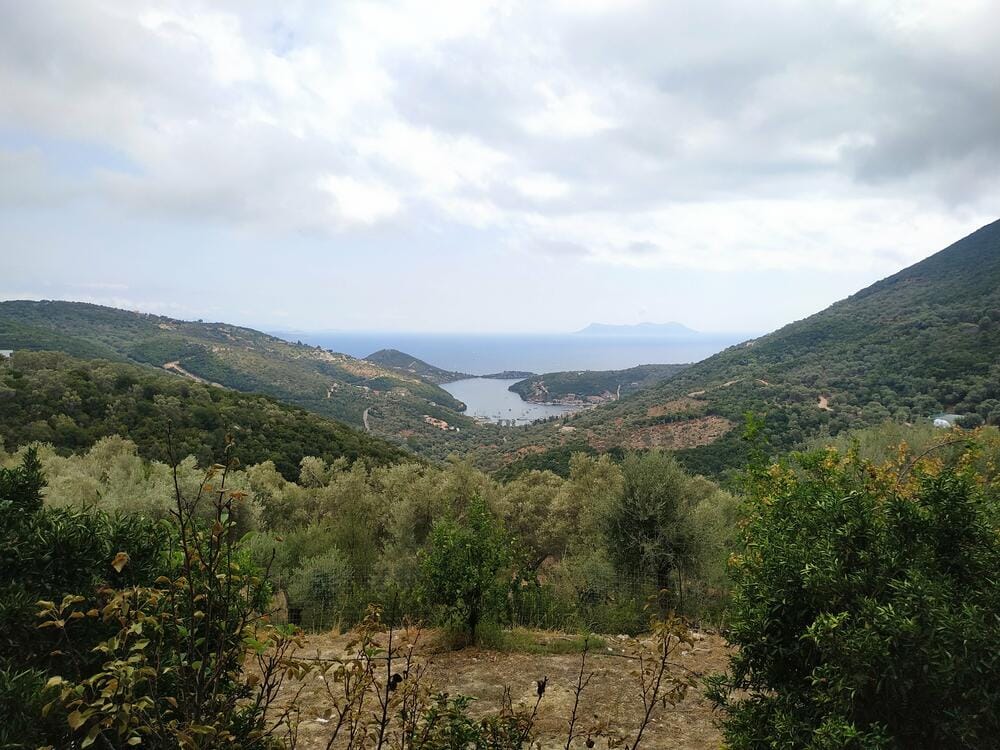
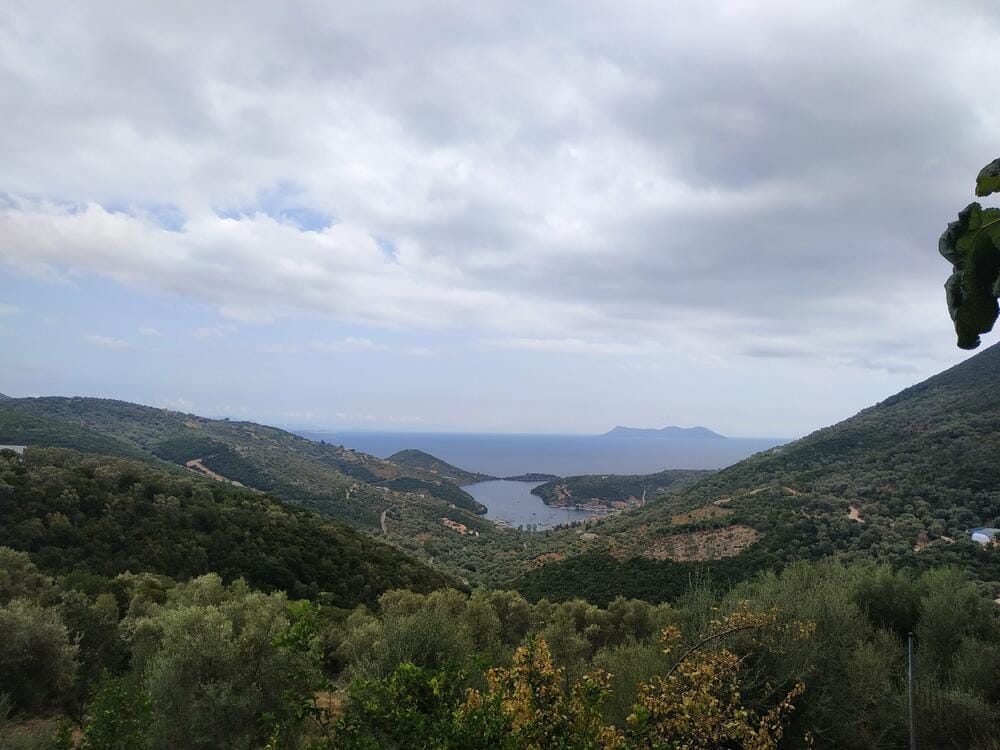
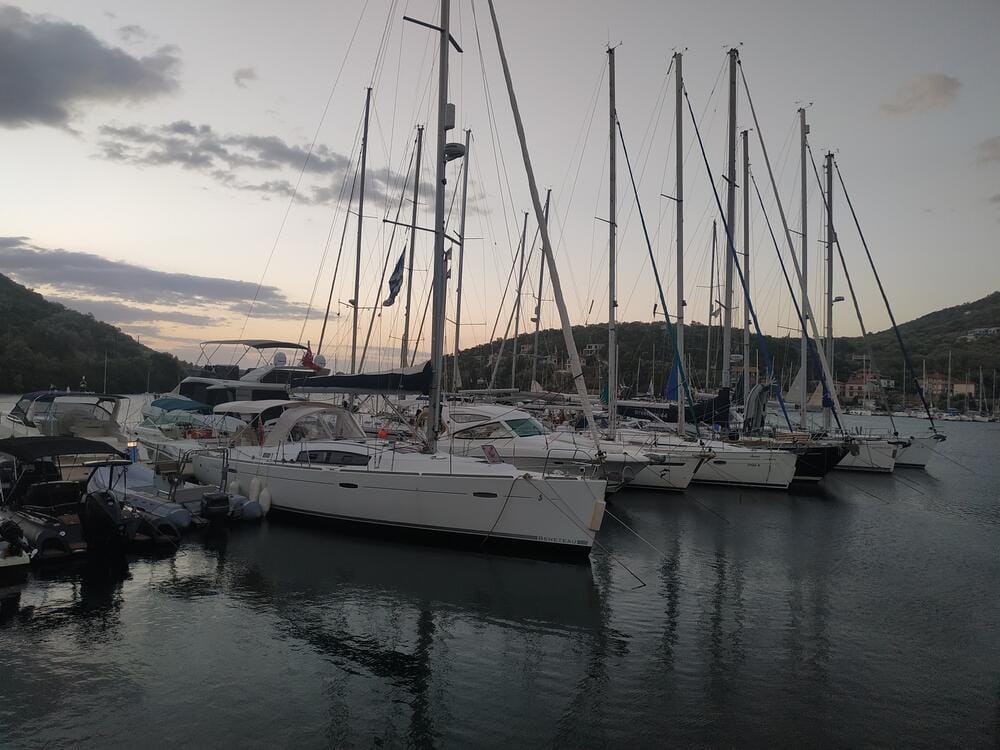
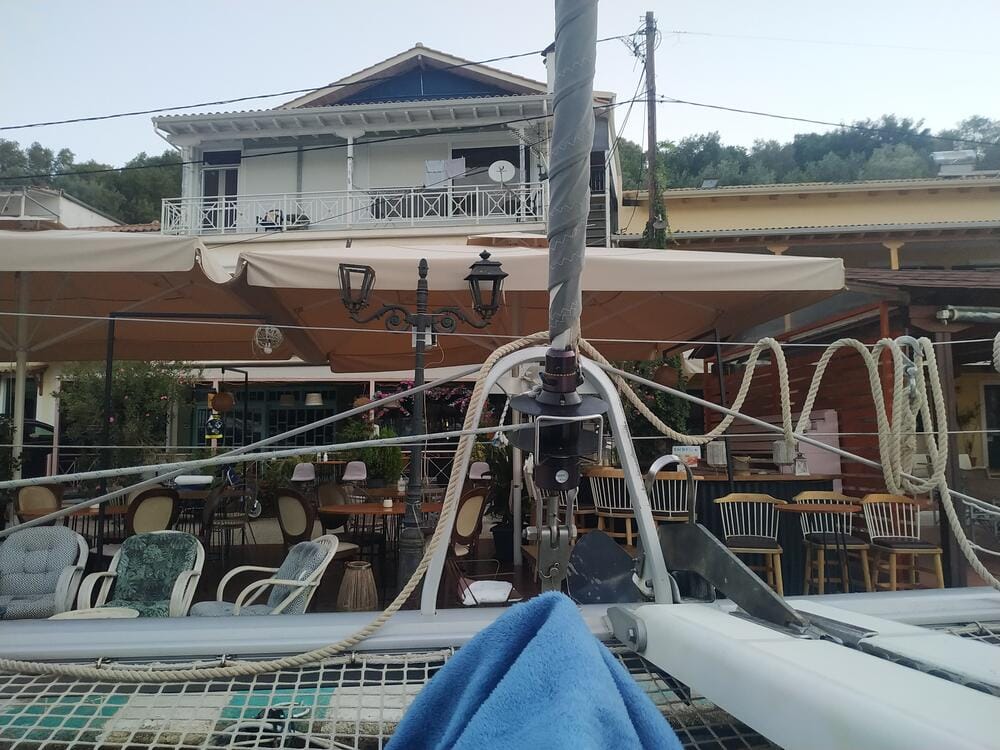
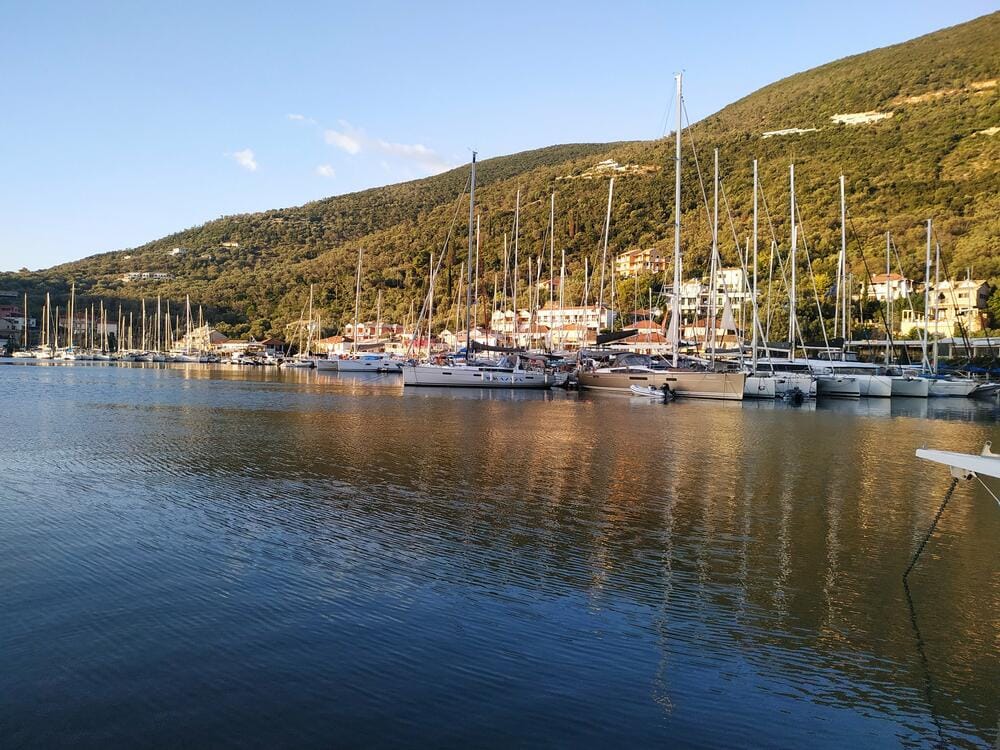
Sivota, Lefkada
With the forecast improving, we decided to leave. We asked the catamaran moored tightly next to us to move and then slipped out ourselves. We sailed downwind under genoa at about 4.5 knots toward the southern tip of Meganisi. After that, we turned into the wind and continued under engine. Apparent wind gusts reached up to 40 knots.
Day 9 – Meganisi
We anchored in Ormos Rementinou, a scenic northern bay east of Katomeri on Meganisi.
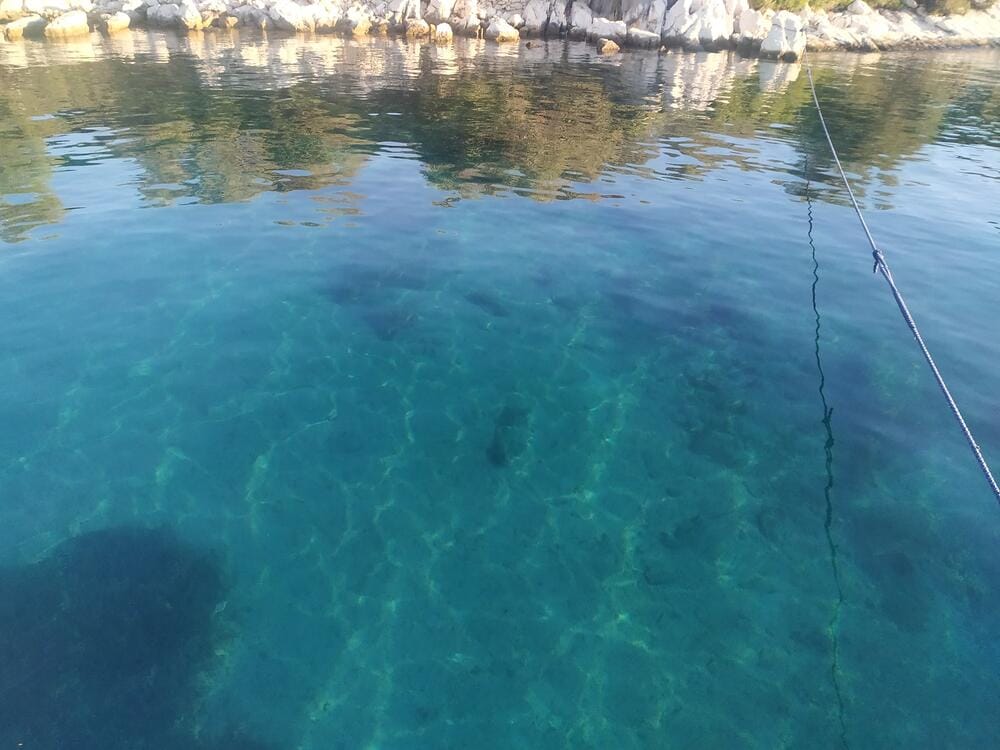
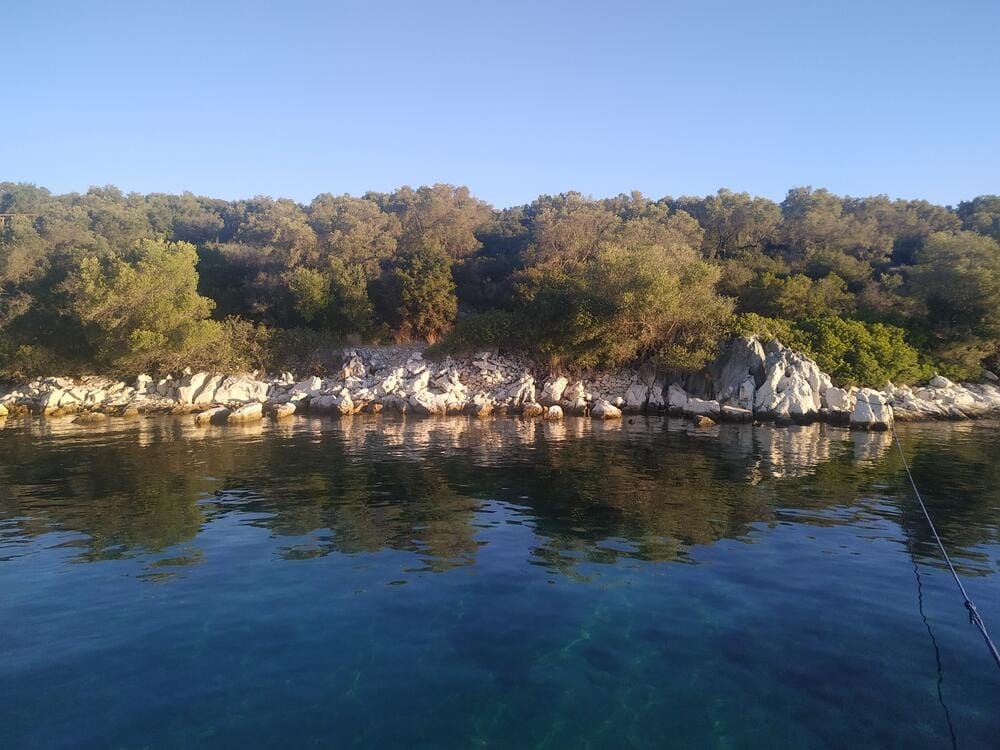
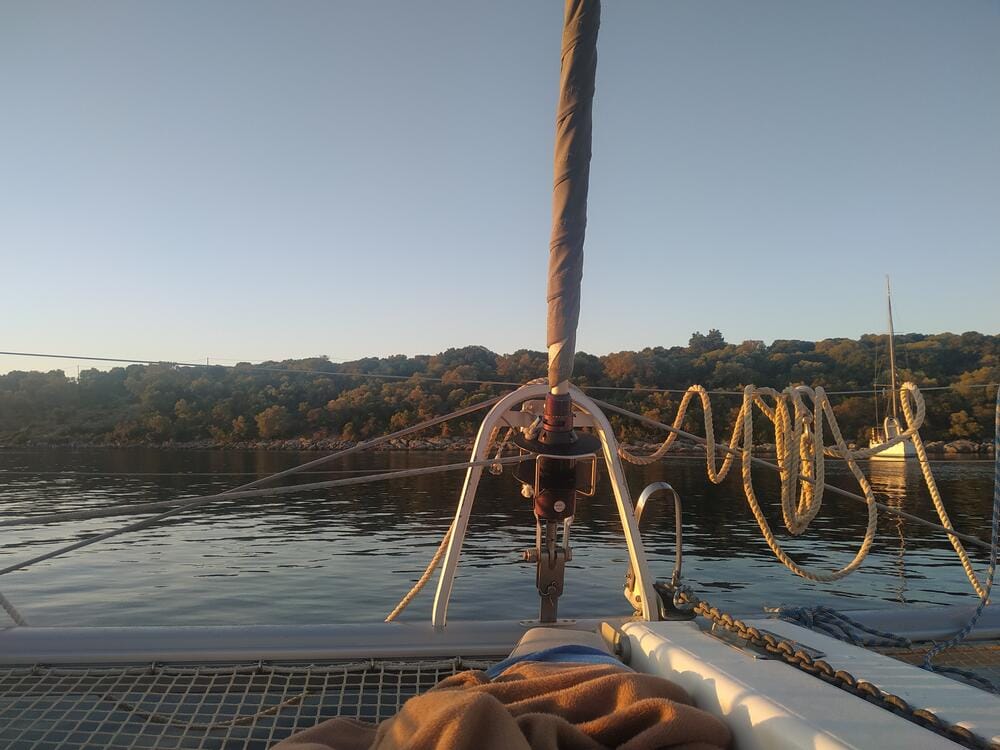
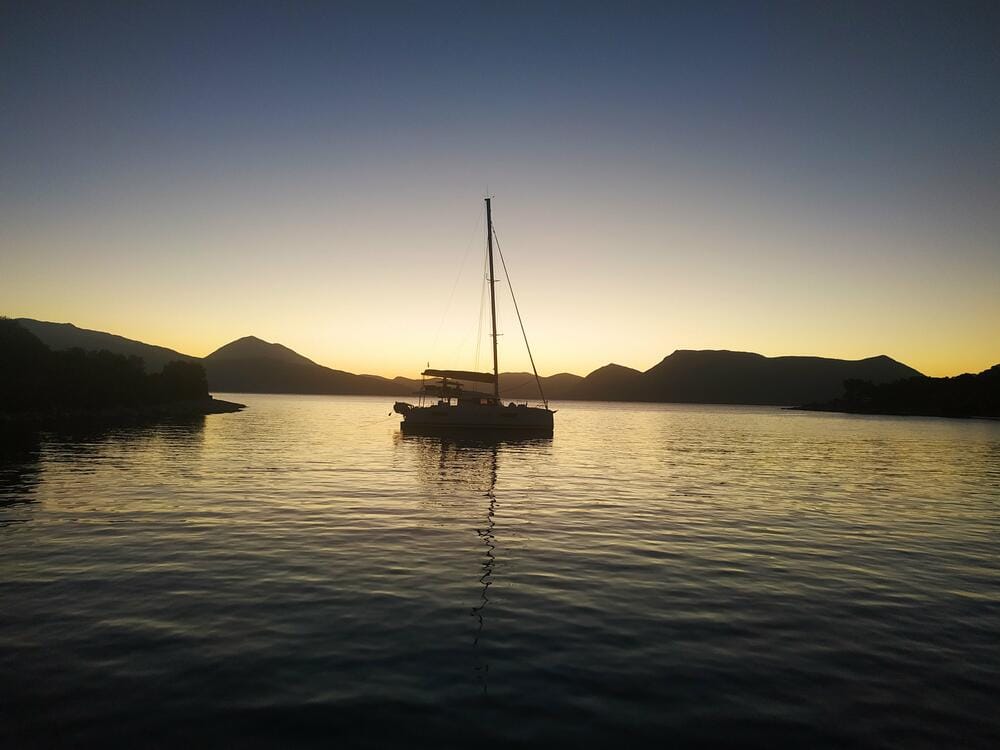
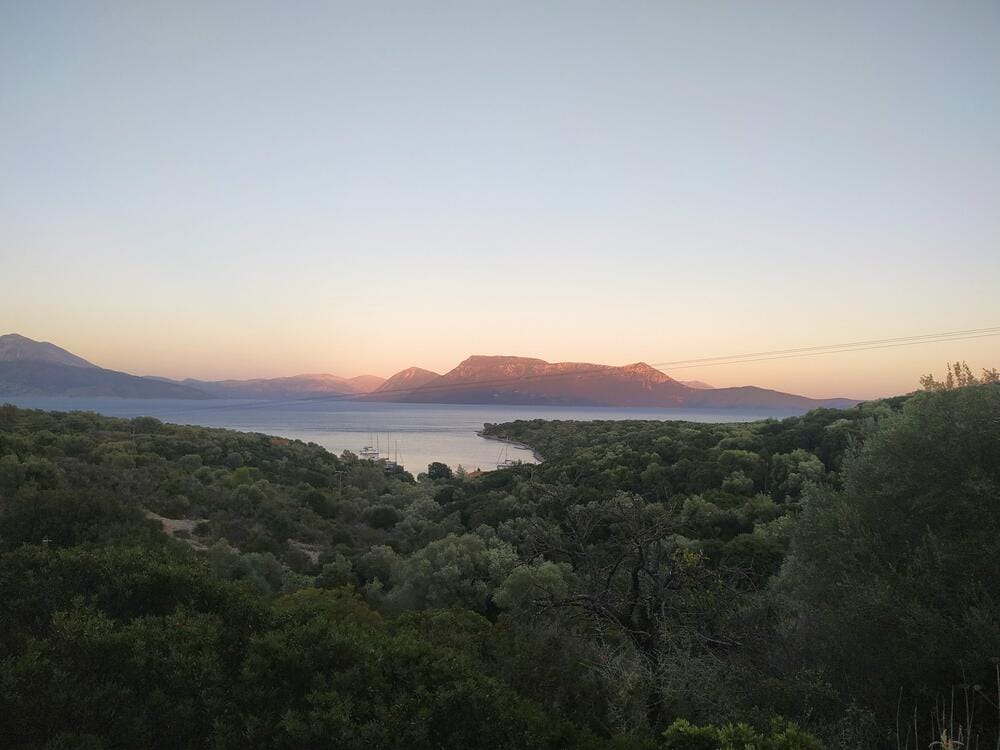
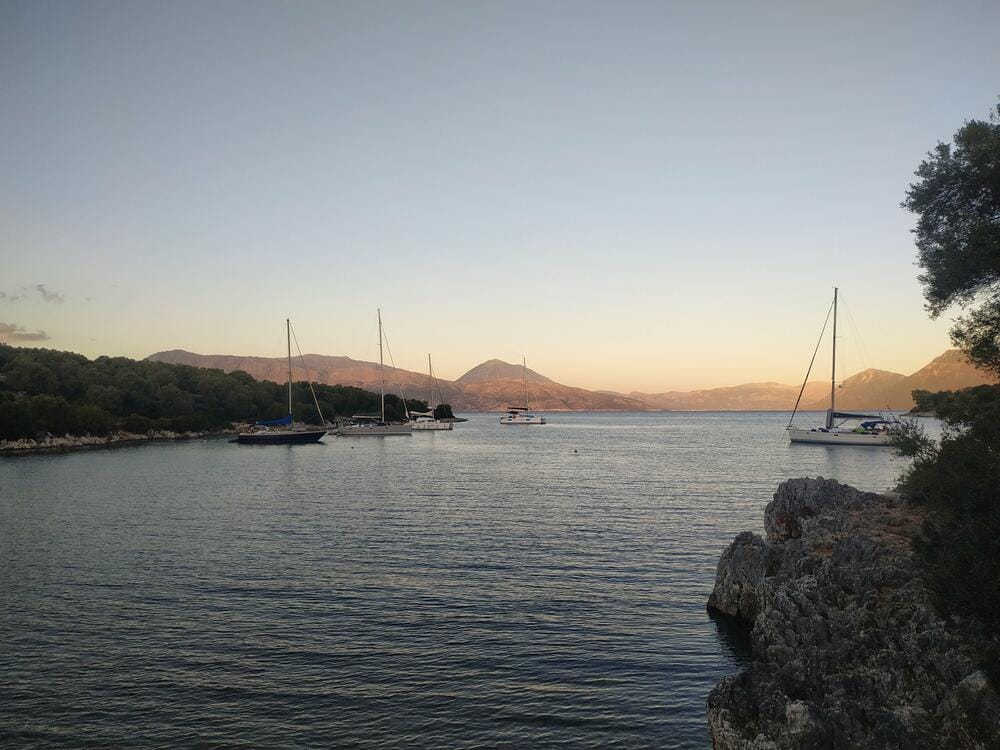
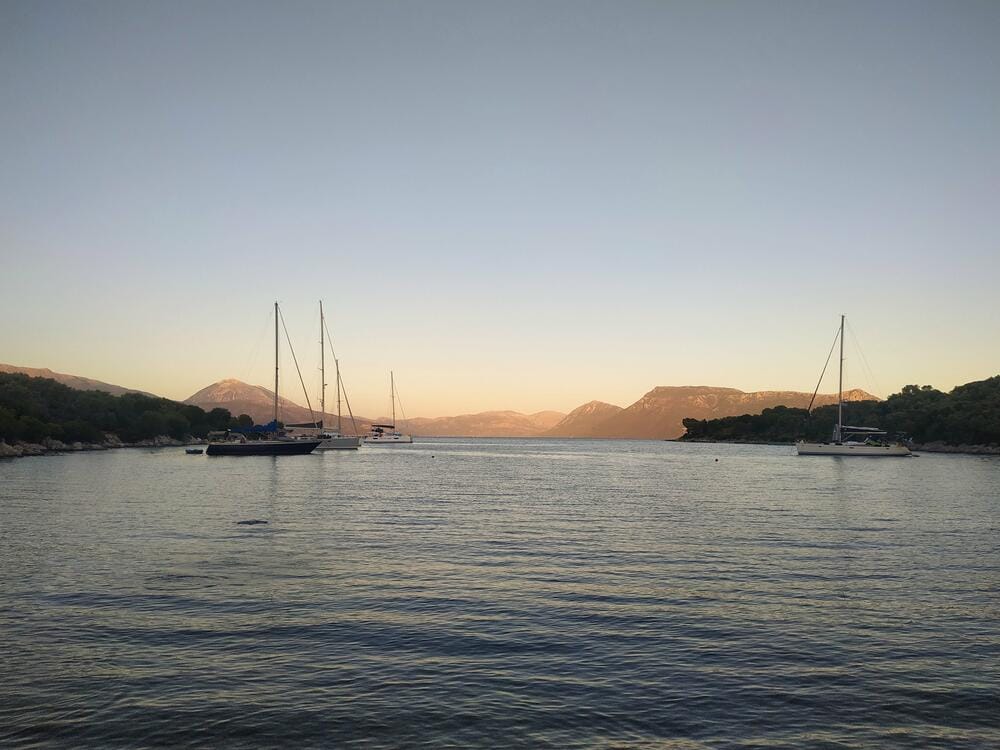
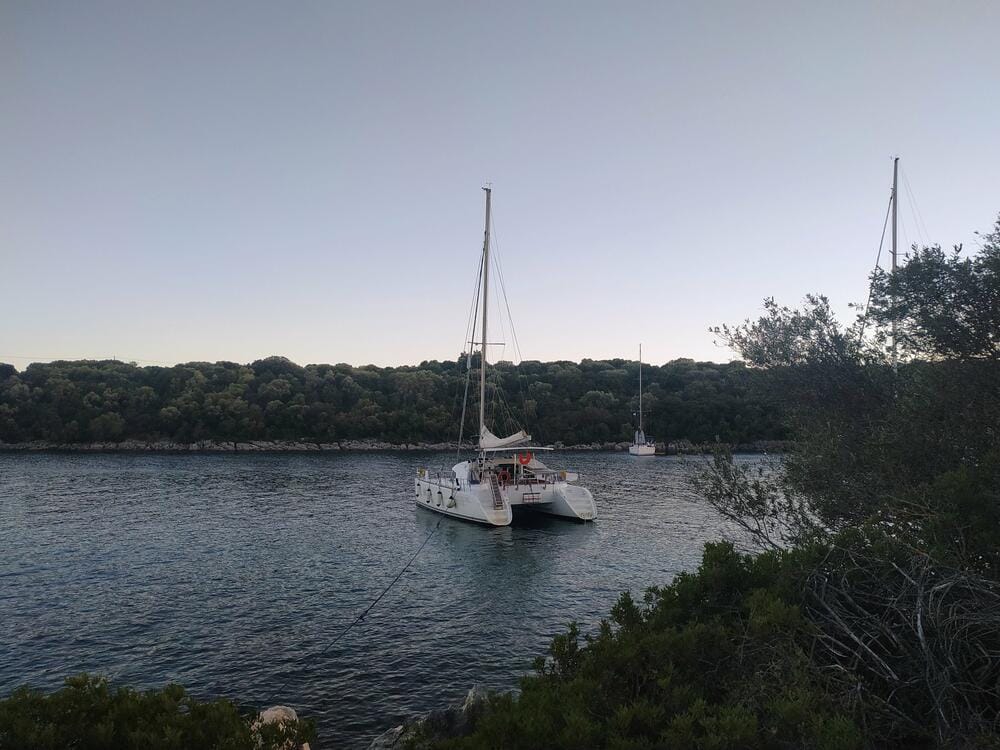
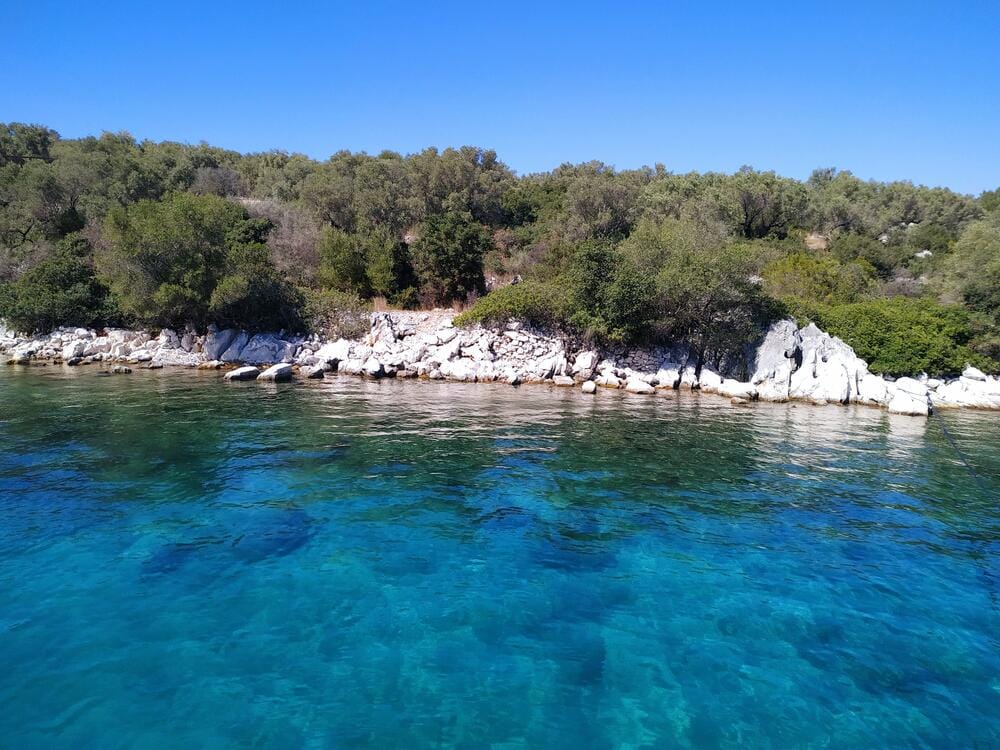
Ormos RementinouMganisi
A neighboring boat’s shore line came loose — they nearly drifted into us. A reminder: always double-check your lines.
The bay was beautiful, with turquoise water and calm surroundings. In the evening, we hiked to Katomeri for dinner. The wine was okay, the food… not so much.
On our way to Lefkas, we made a quick stop in Nydri to see the waterfall. The anchorage was jam-packed.
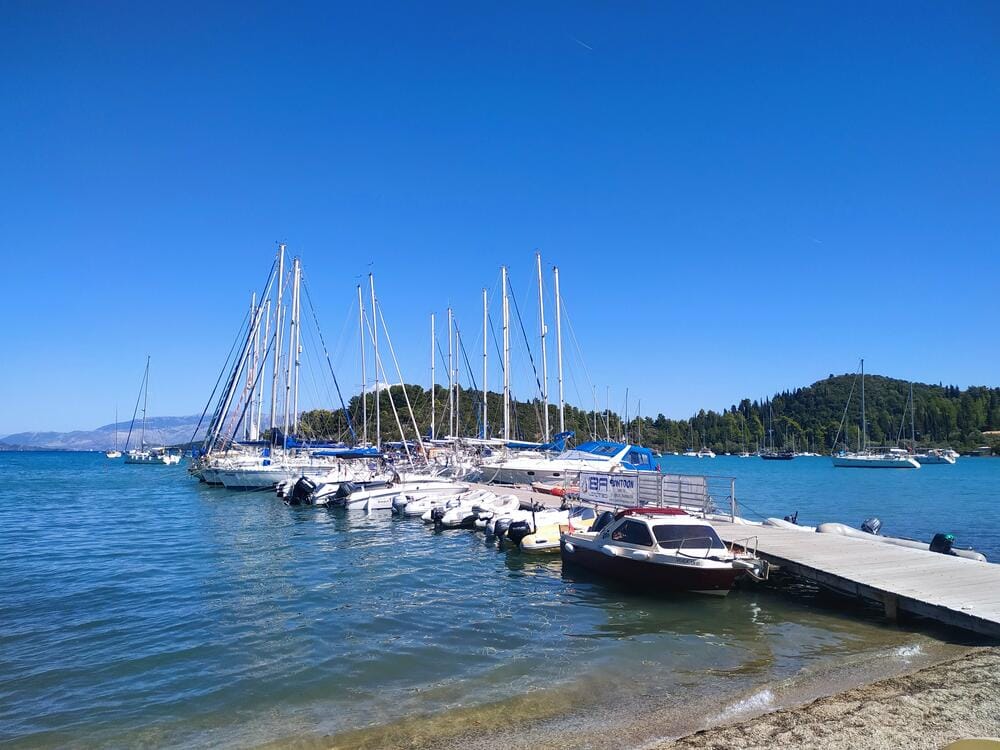
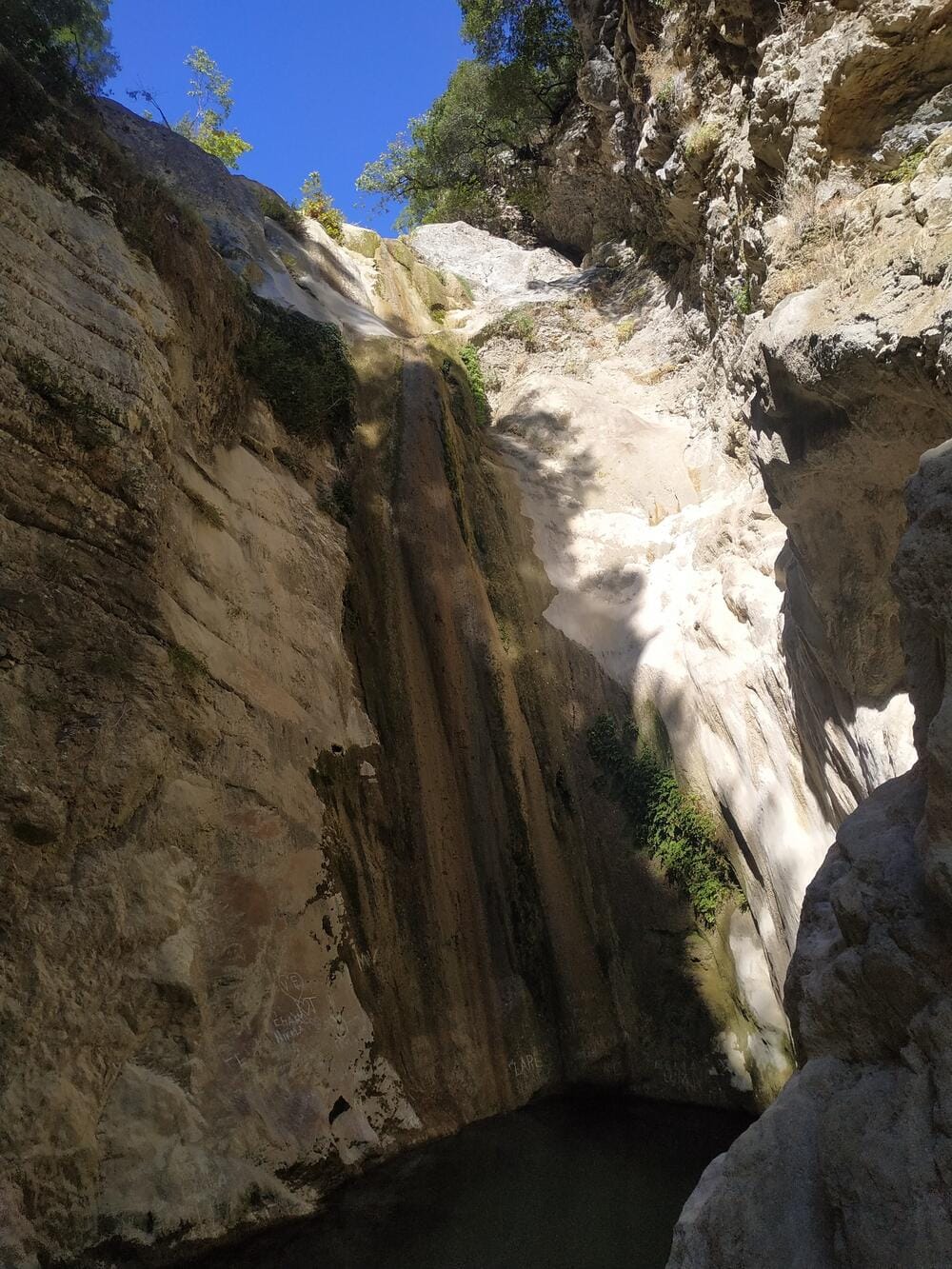
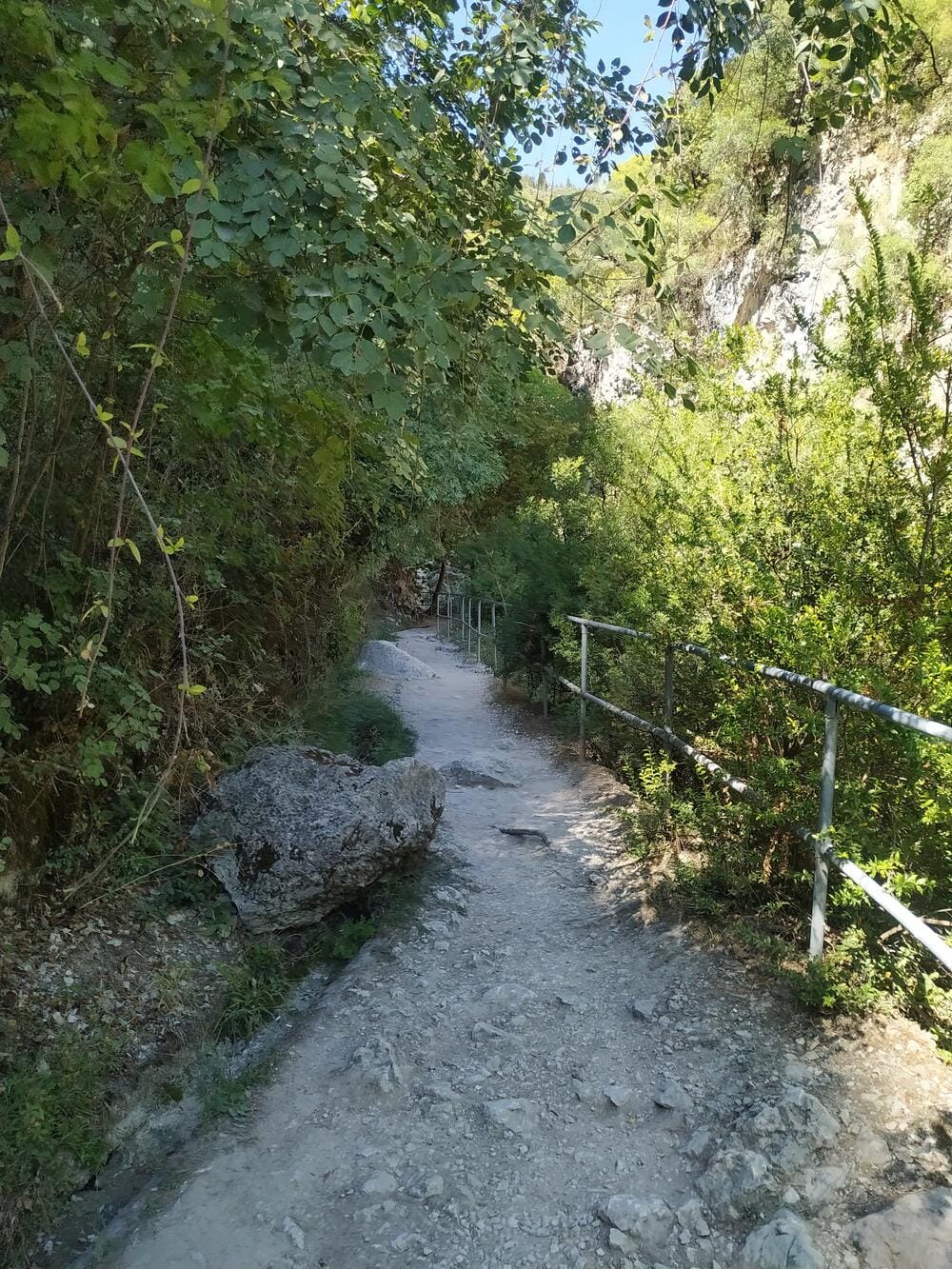
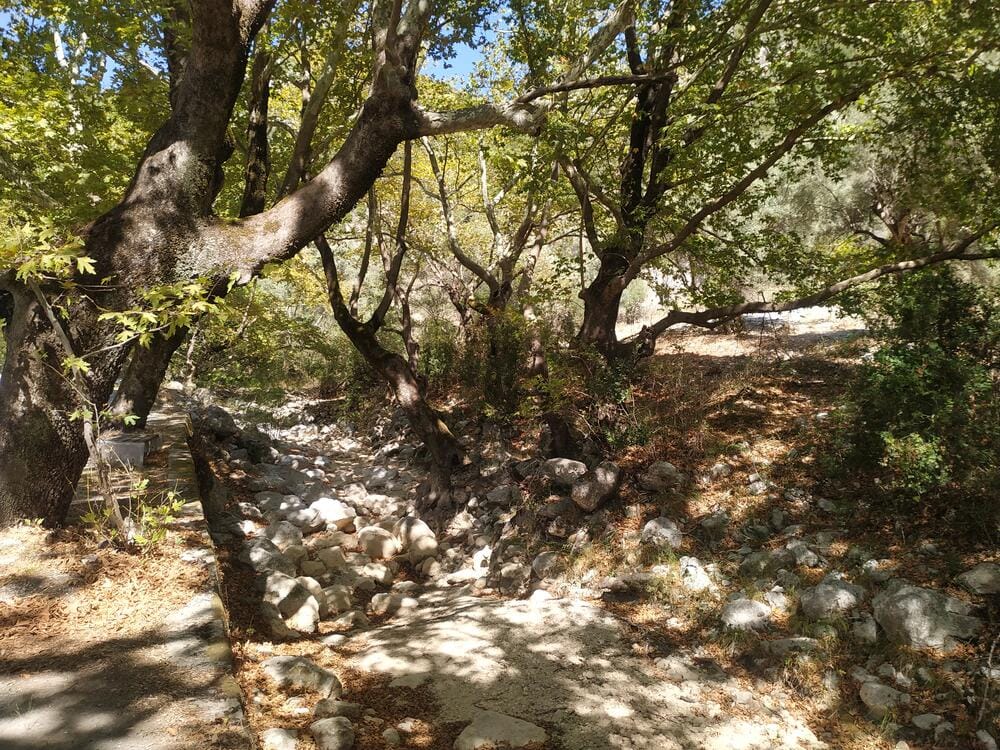
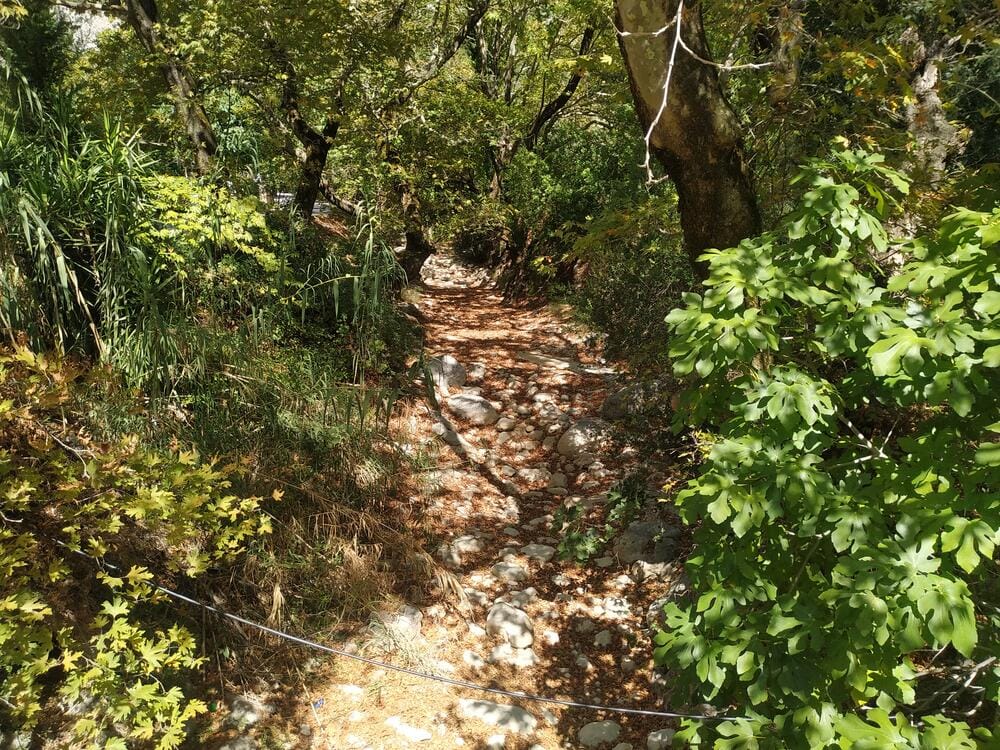
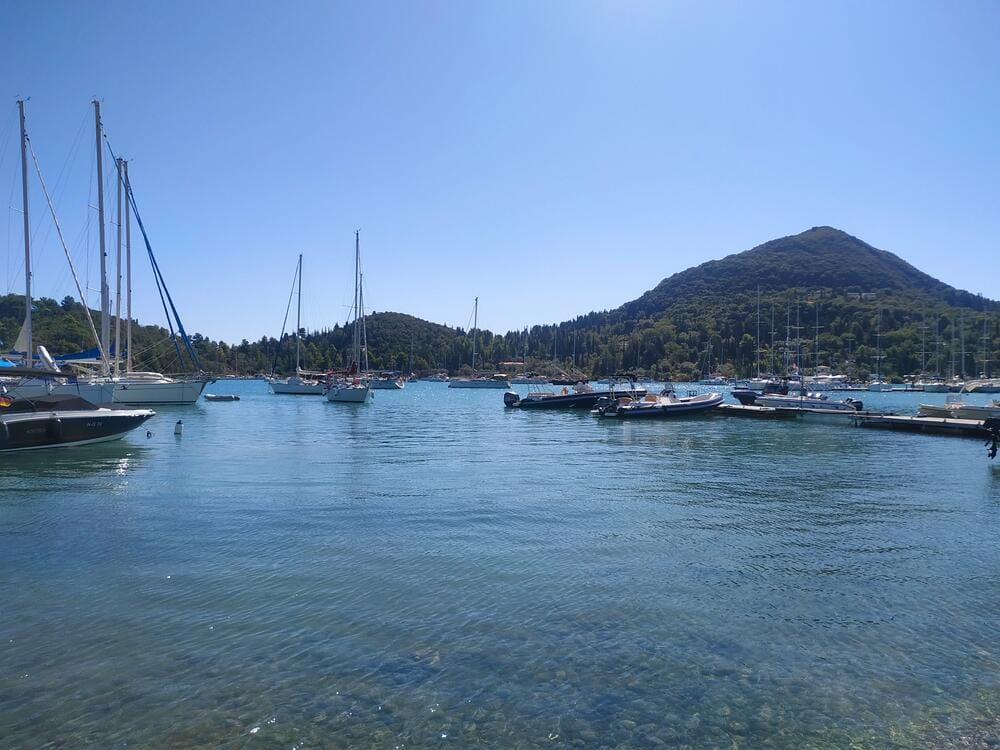
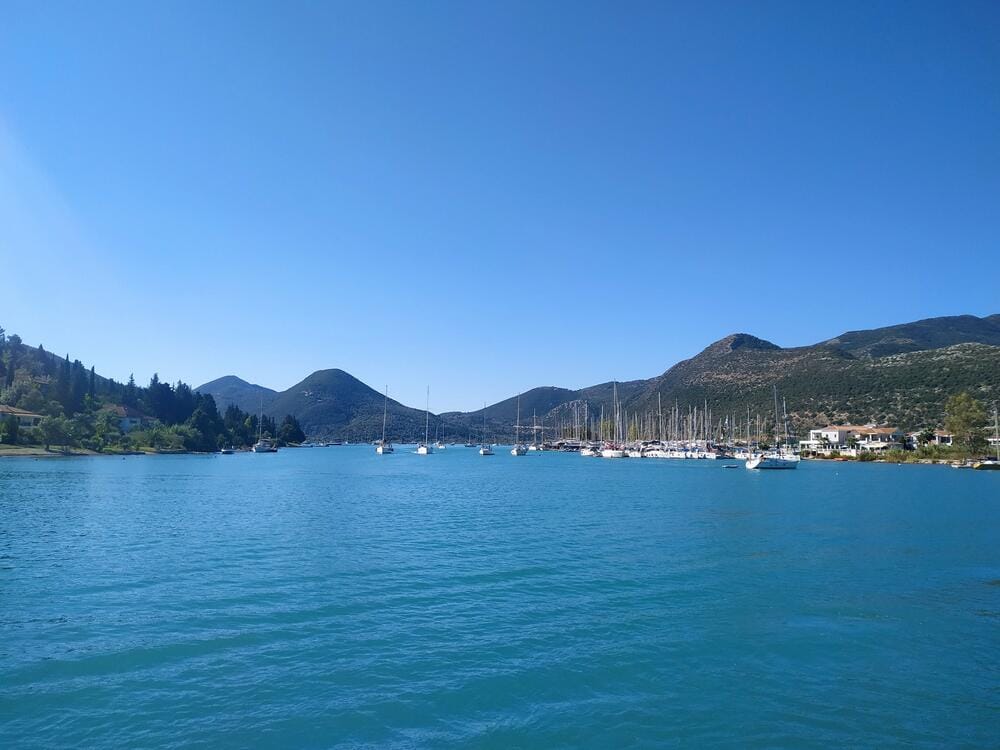
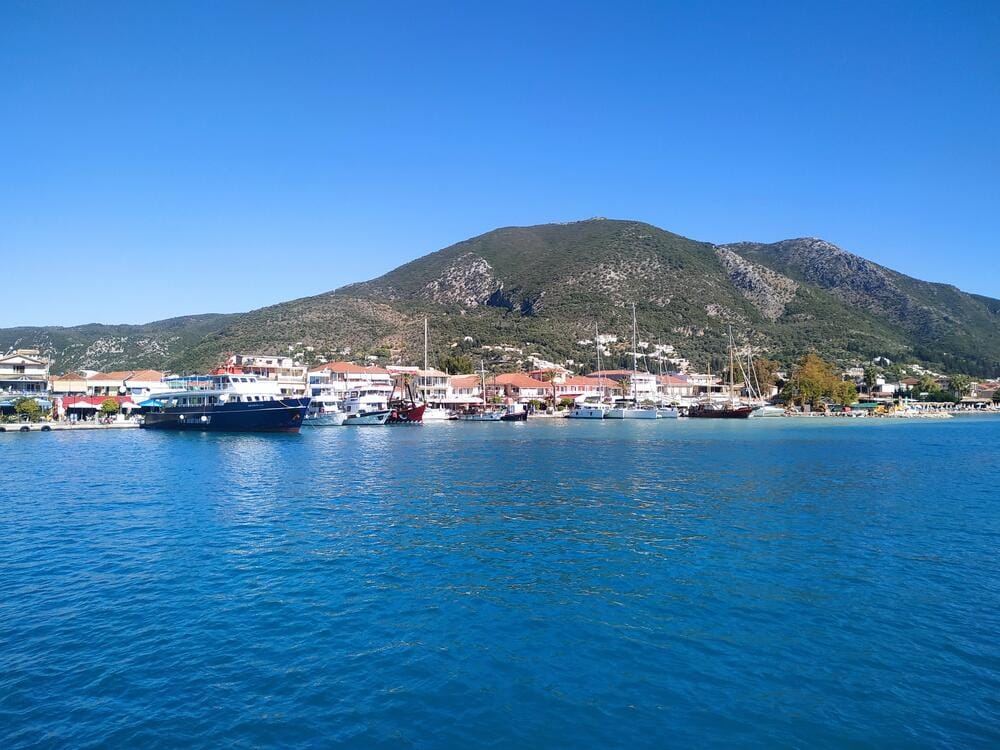
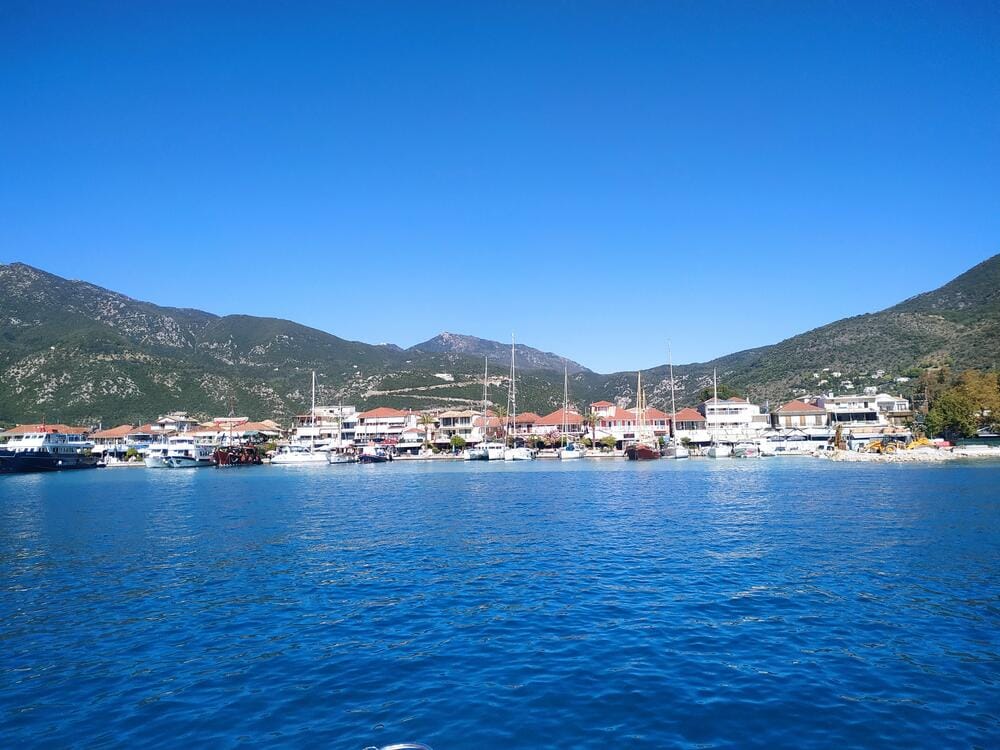
Nydri
Day 10 – Lefkas
No marina for us — they wanted €123 plus extra for water, showers, and electricity. Instead, we moored at a private pontoon north of the marina and filled our tanks for free. Always nice to win the provisioning game.
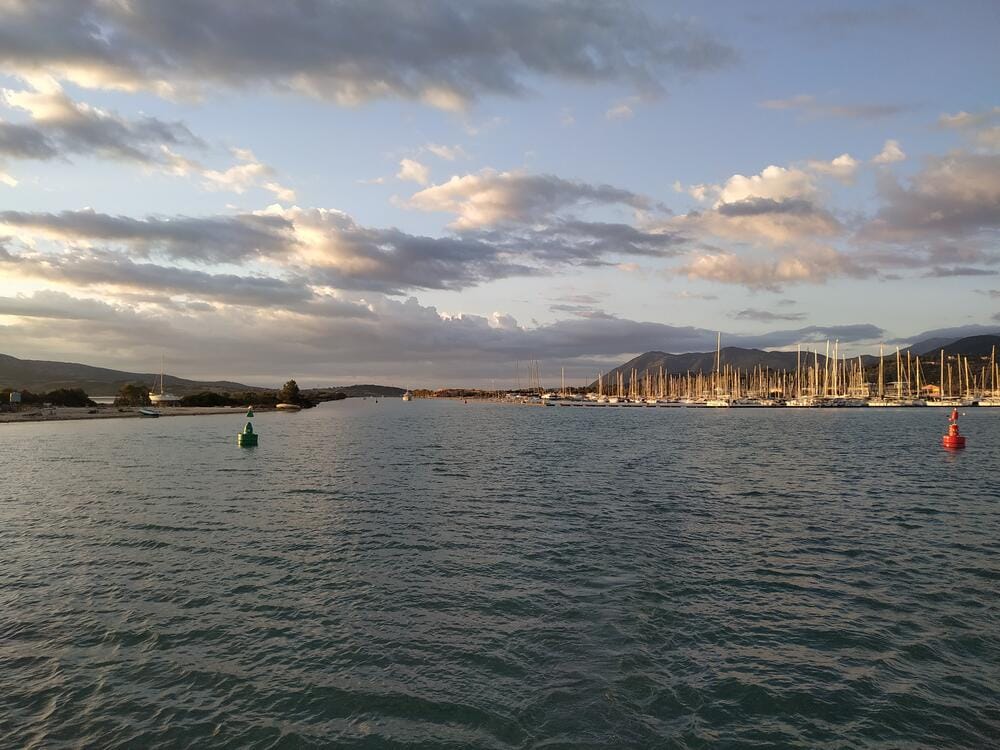
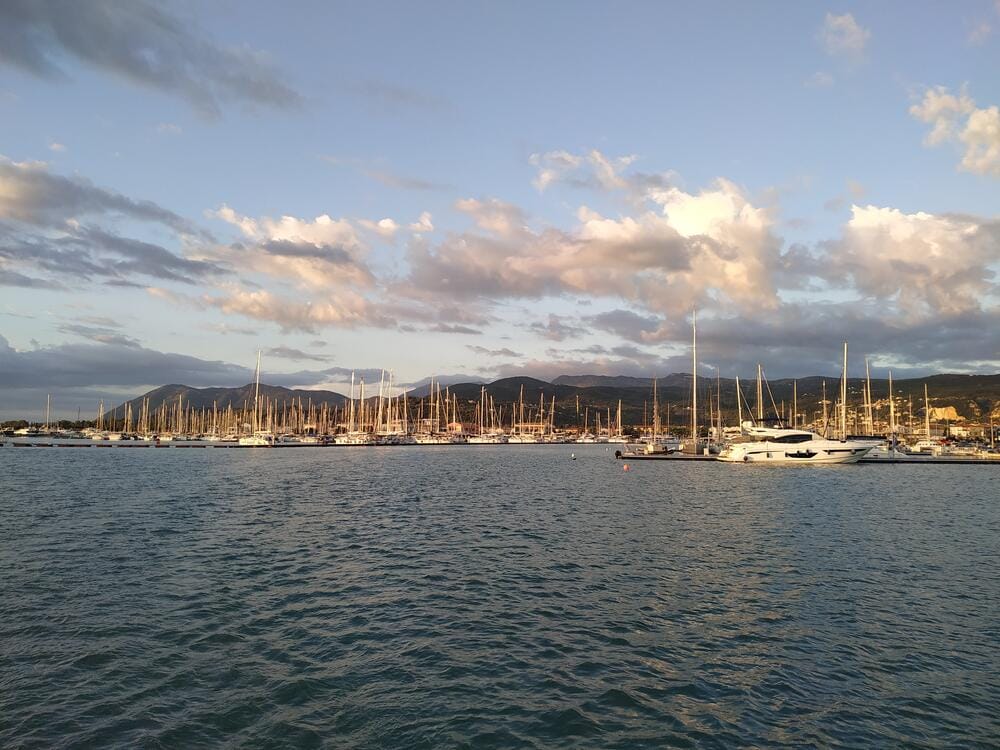

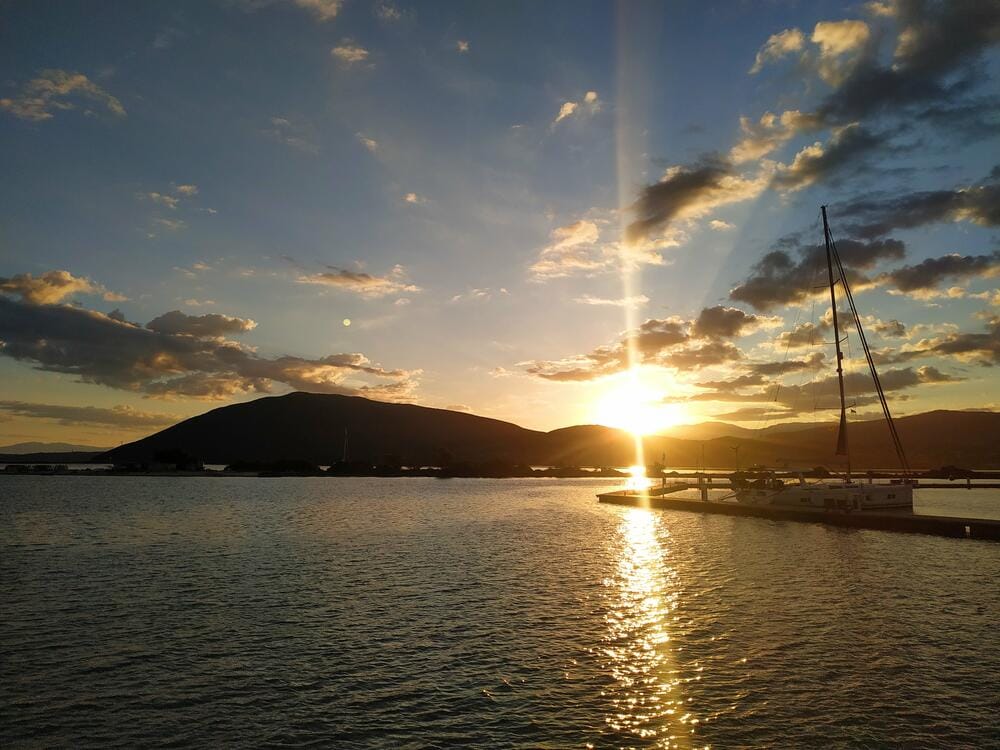

Lefkas
Day 11 – Leaving Lefkas and Arriving in Mongonisi
We left the Lefkas Marina and navigated through the Lefkas Canal for the second time, crossing once again over the floating bridge "Agia Mavra."

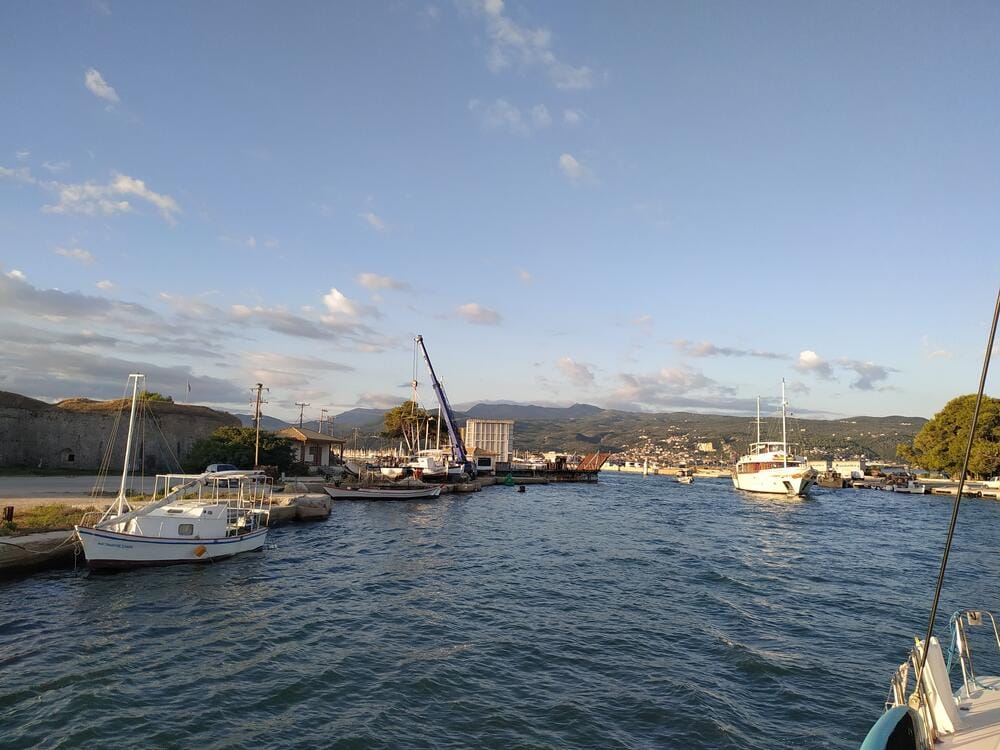
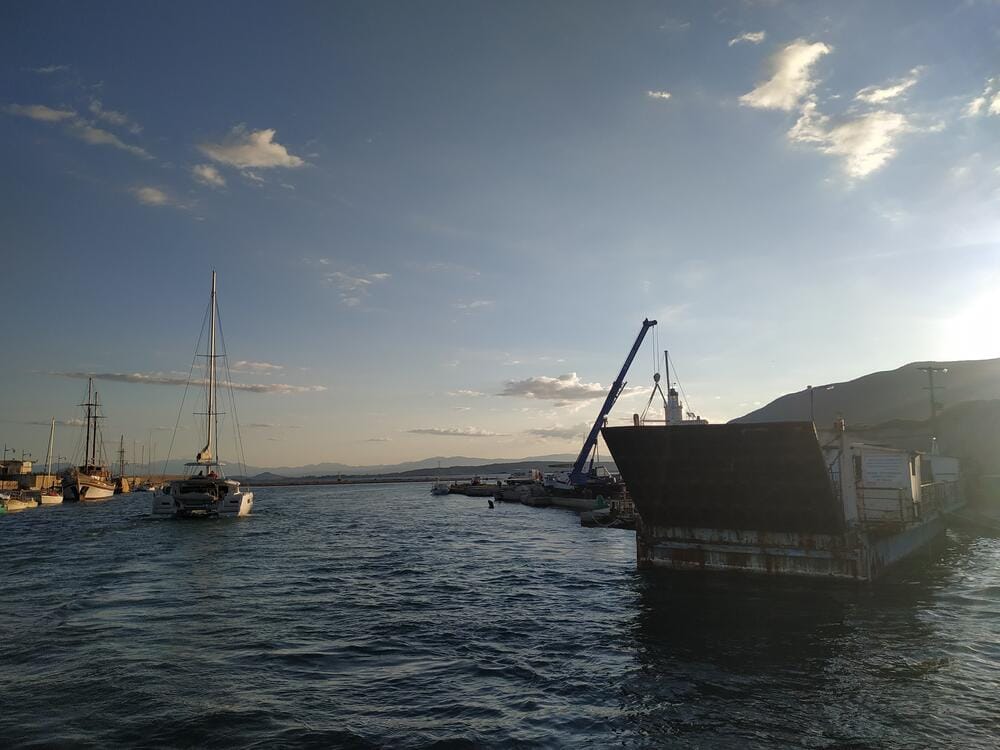

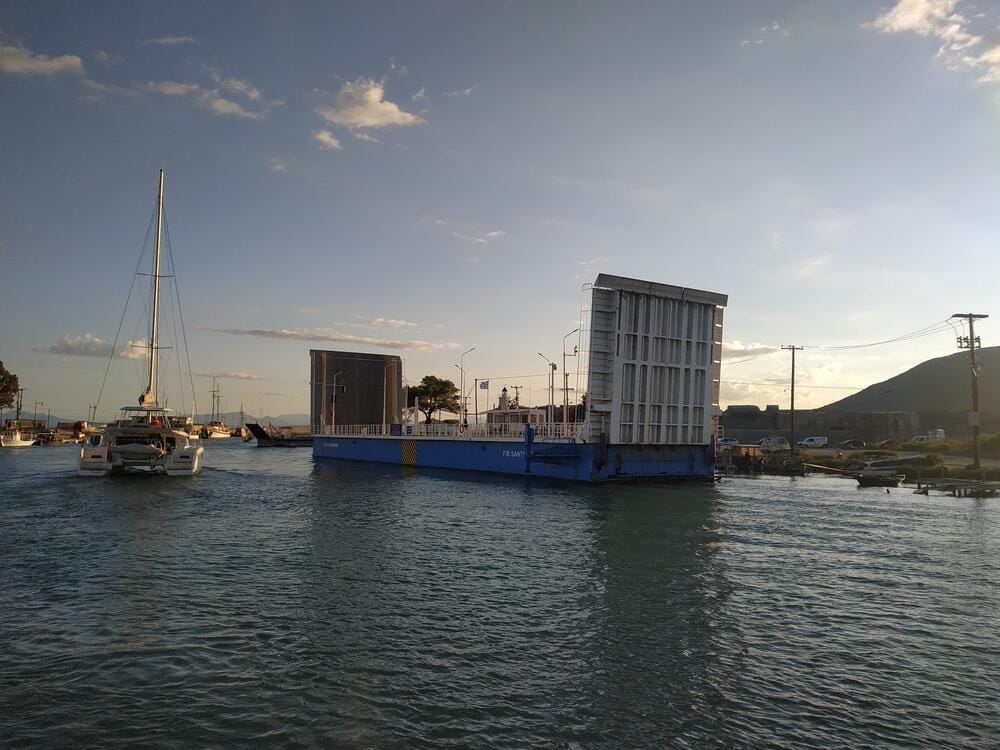
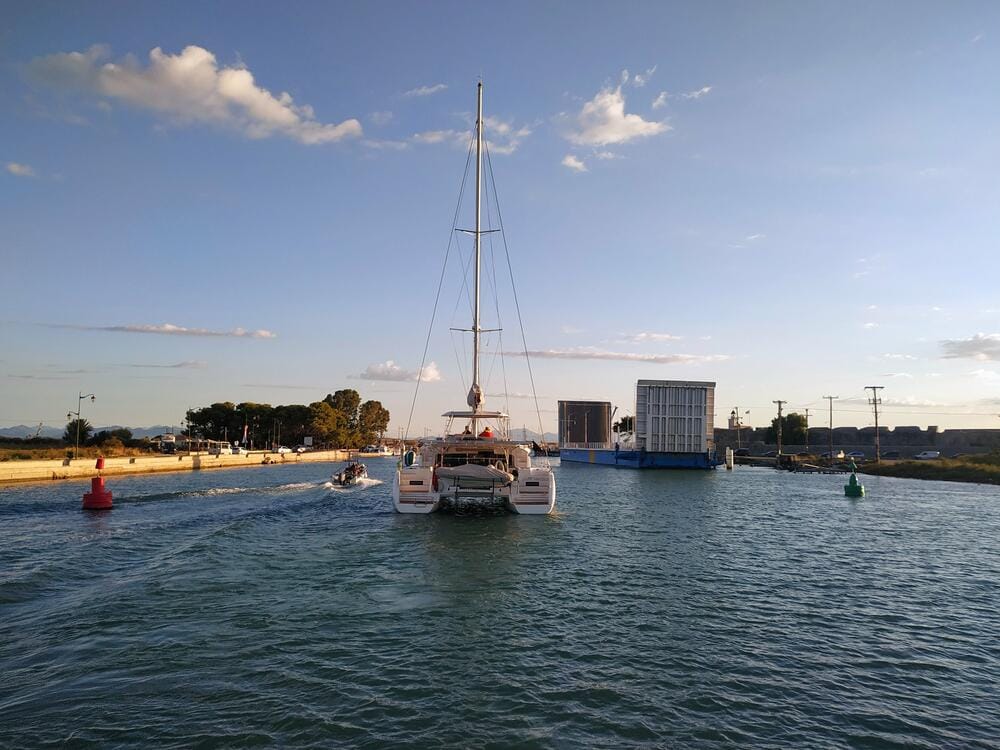
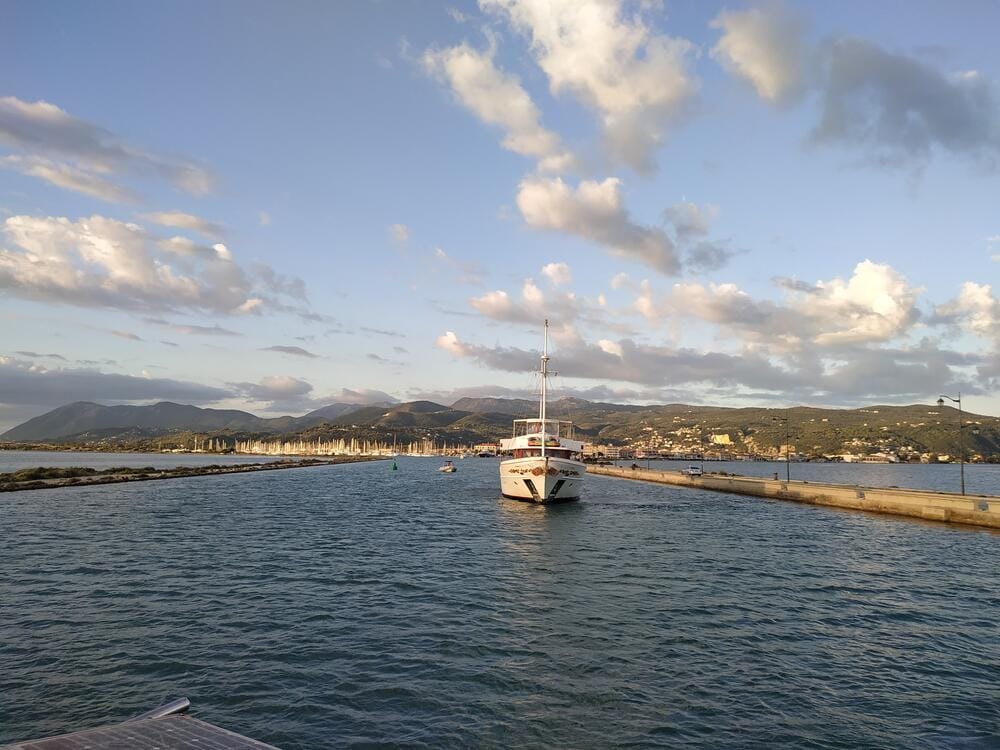
Lefkas Canal
Our original plan was to dock in Gaios, entering from the south. However, the depth at the entrance was only about 2 meters, and most of the piers were occupied by gulets that typically clear out after 5 PM. Numerous signs forbade mooring between 10 AM and 5 PM, and since we couldn’t find a suitable spot, we continued through Gaios and headed further south.
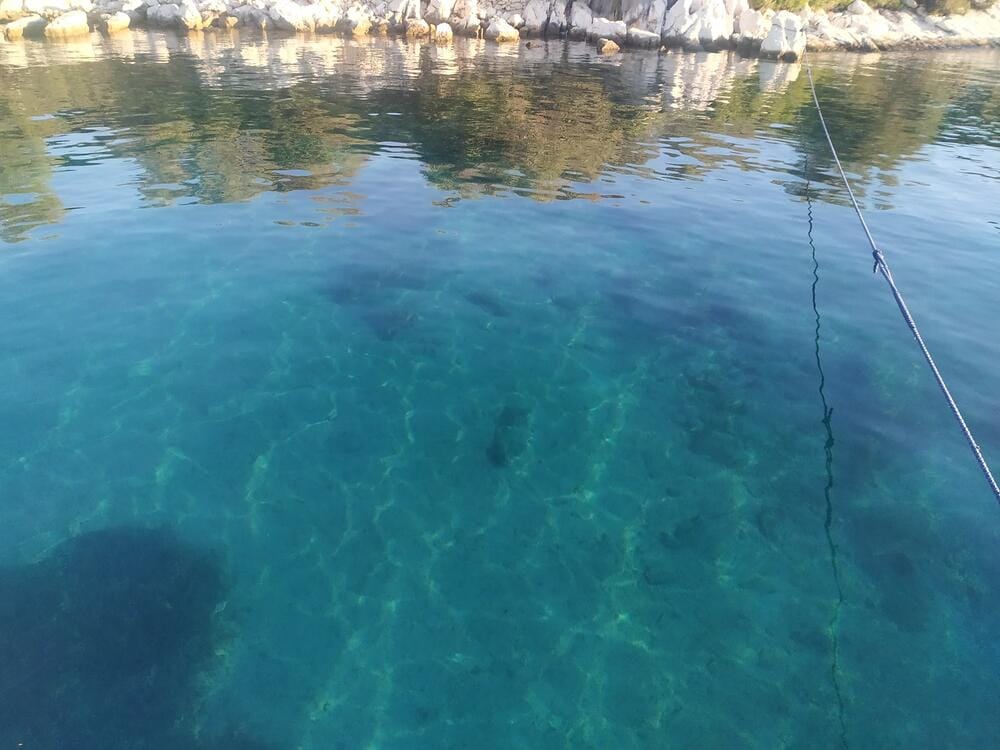
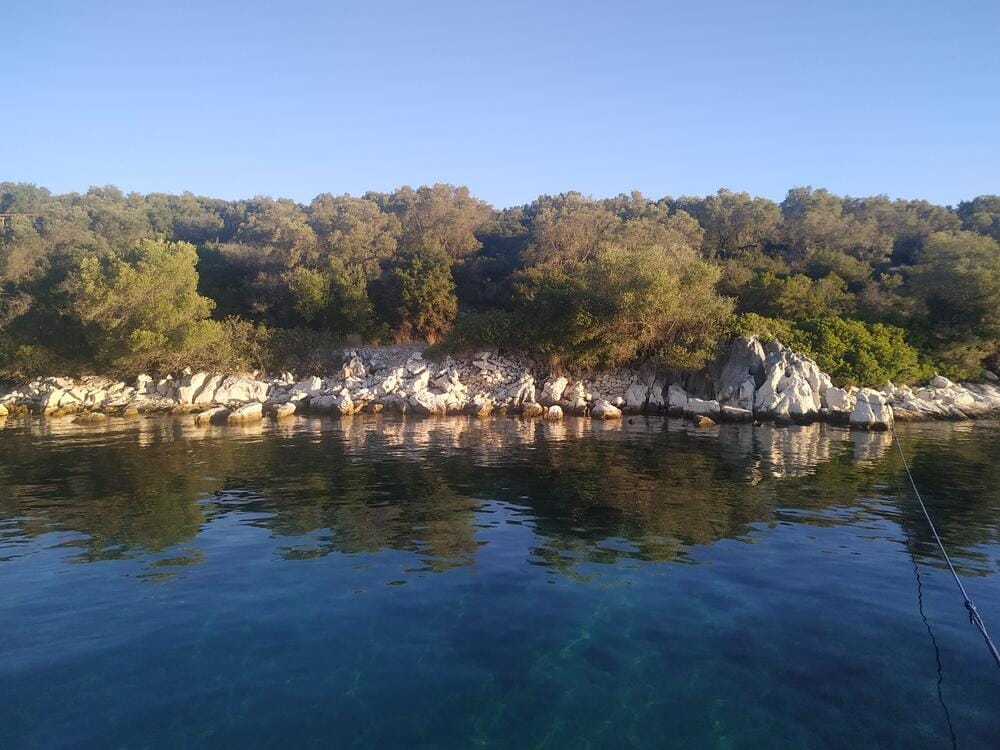
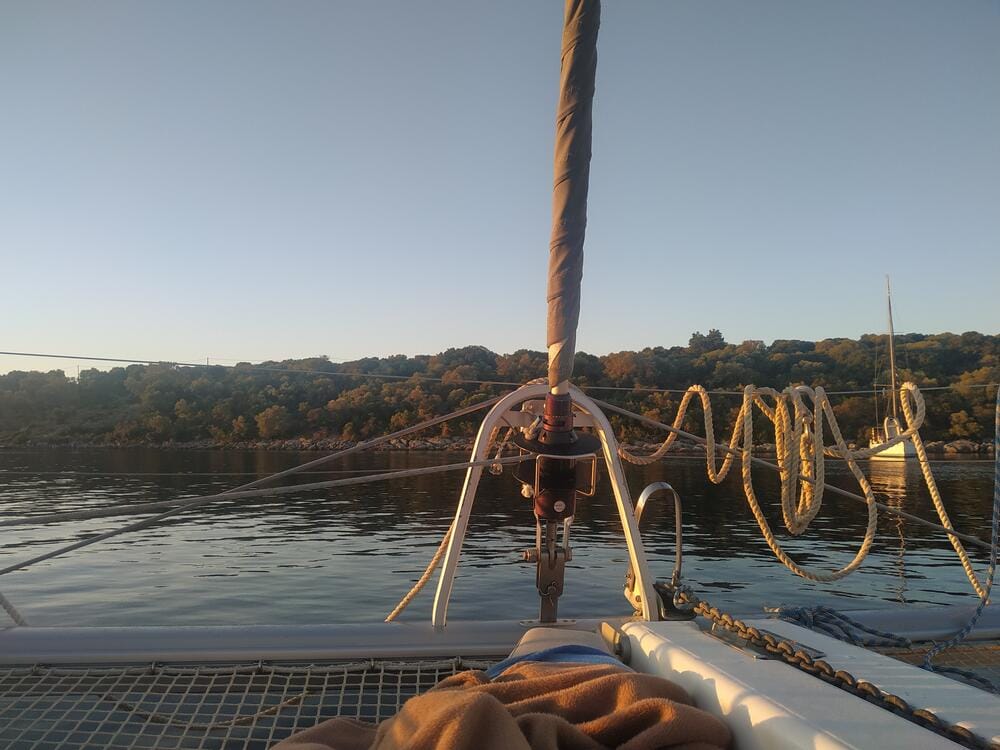
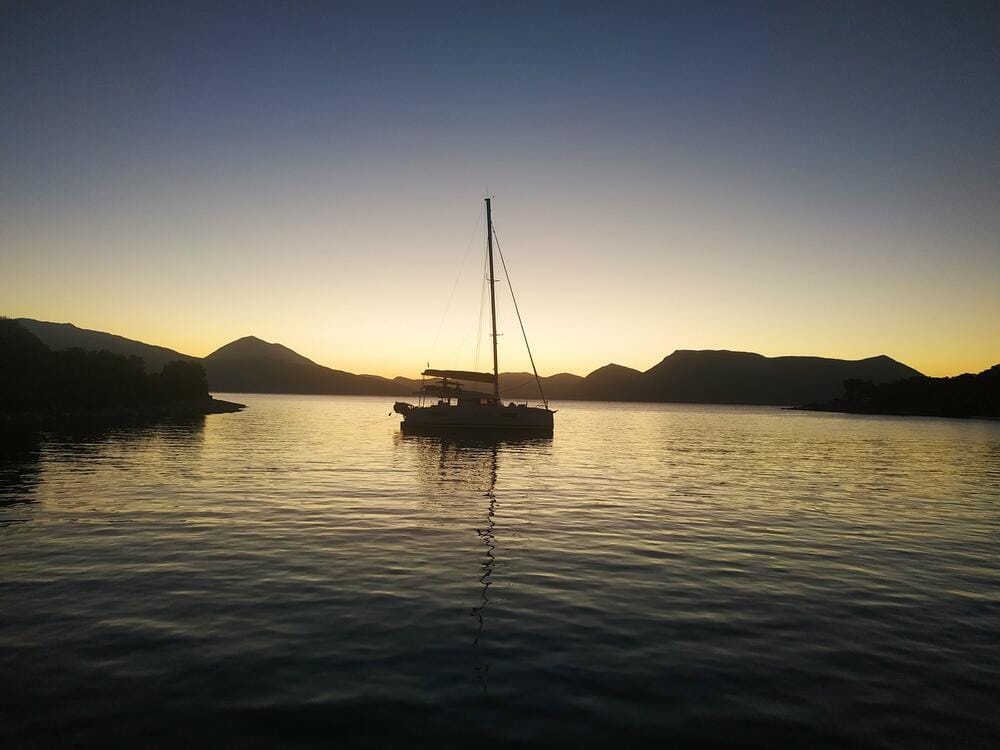
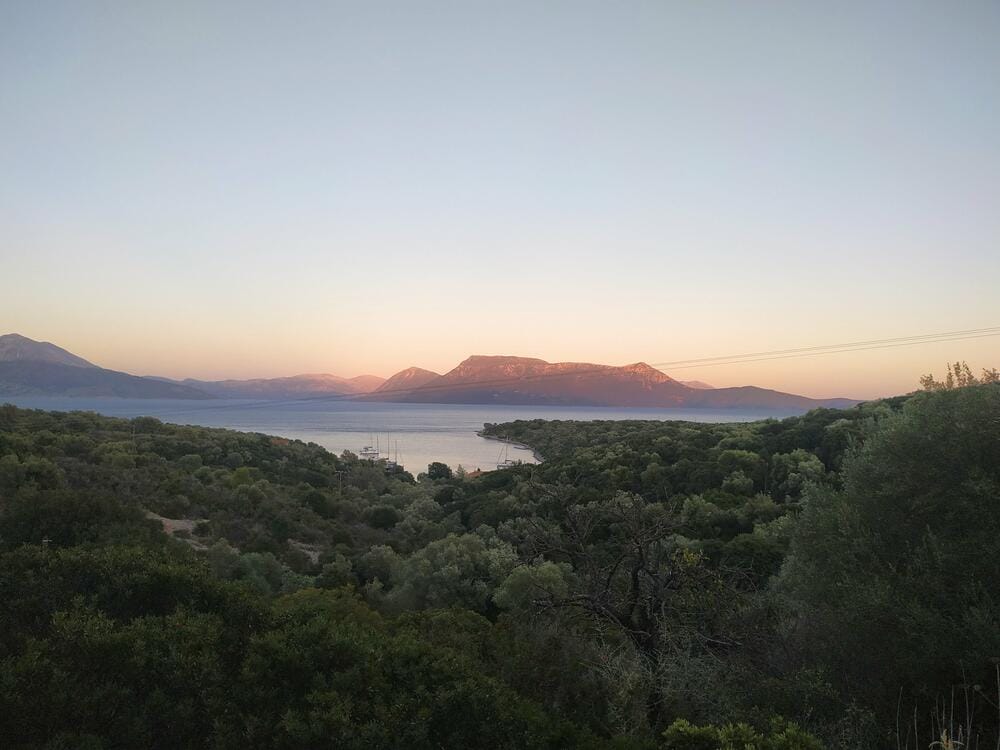
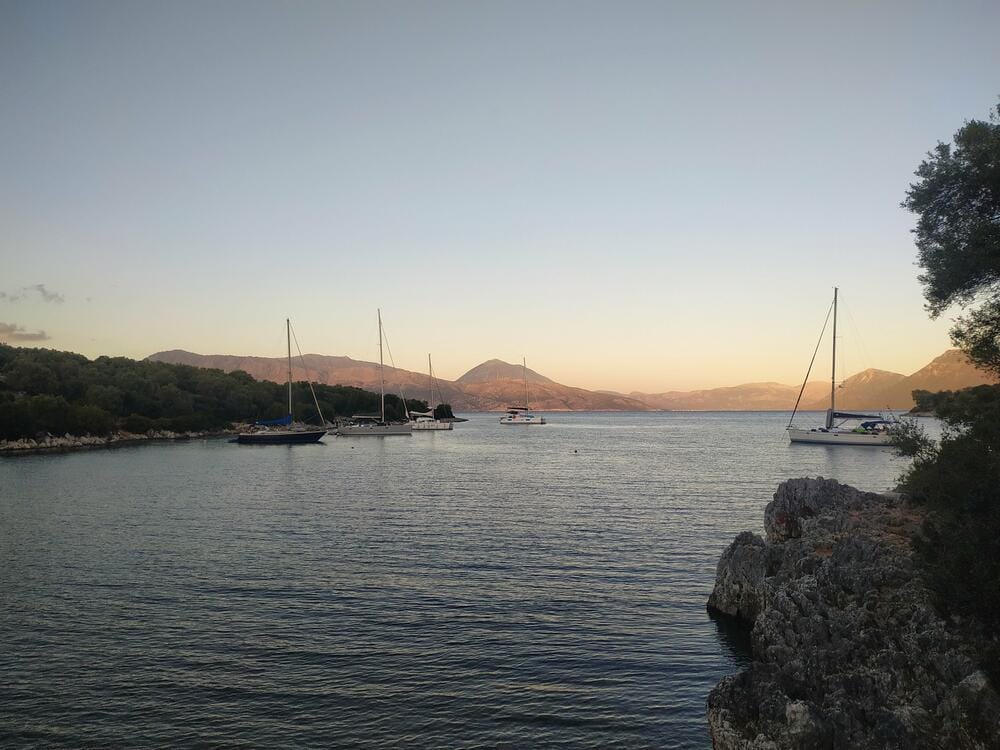
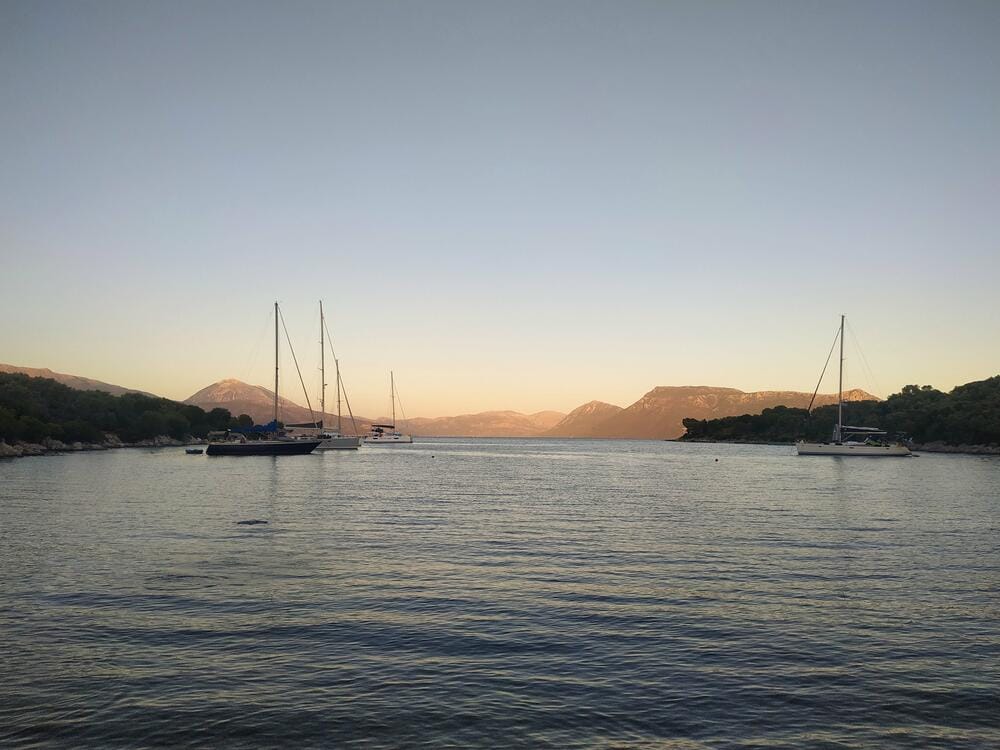
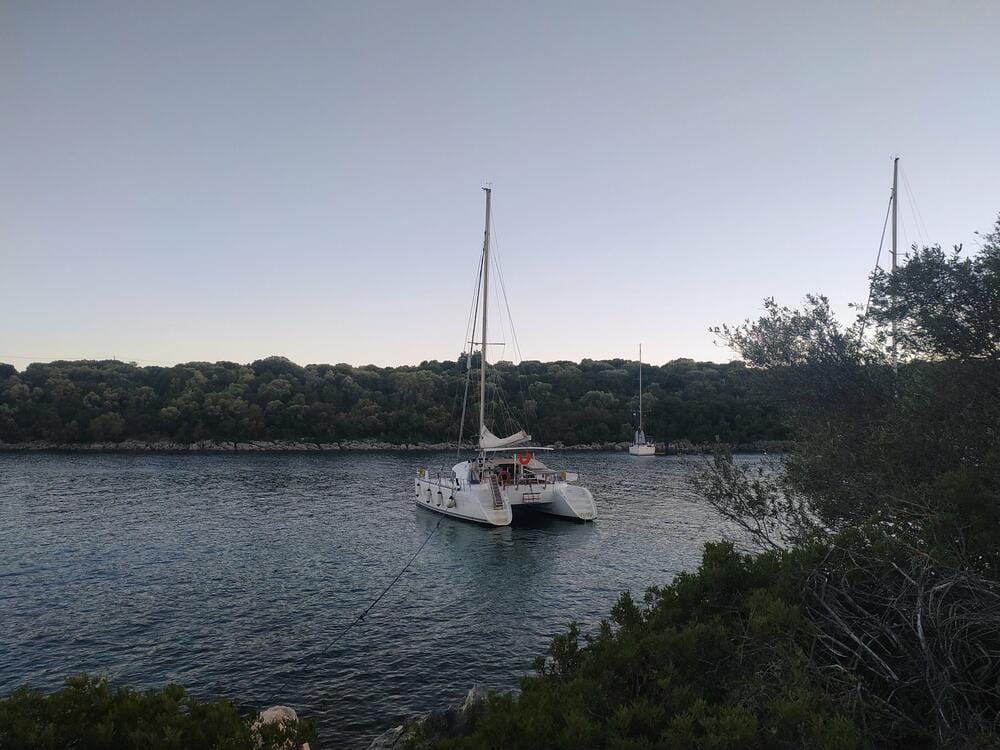
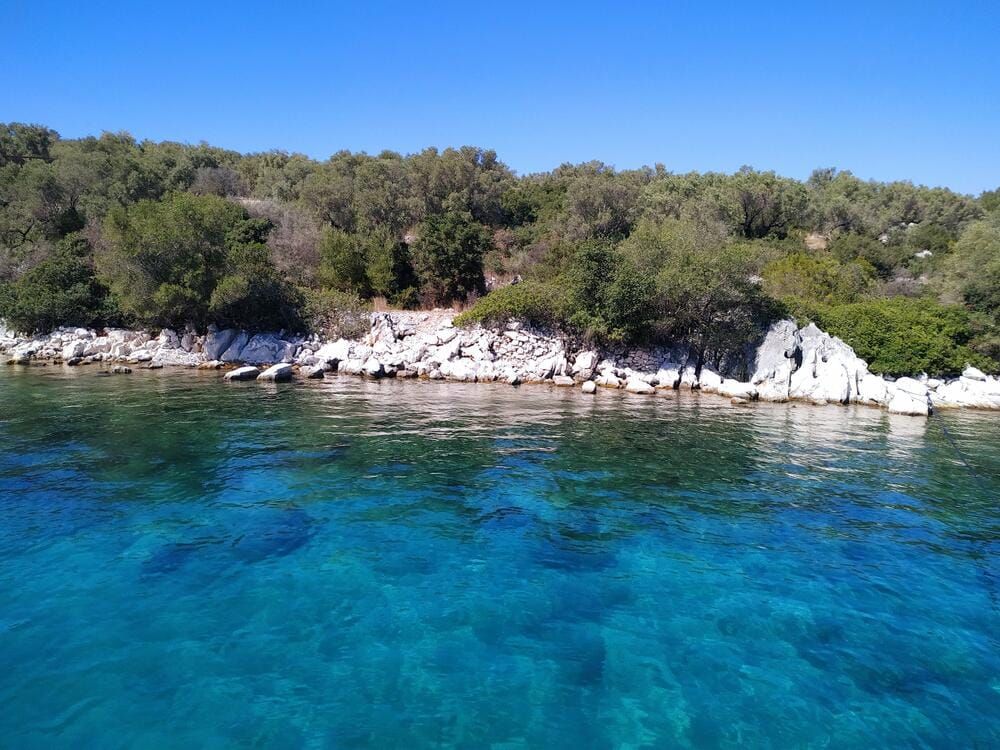
Mongonisi
We eventually settled in Mongonisi, a small peninsula connected to Paxos by a narrow isthmus. Nearly the entire quay was taken, as a flotilla was expected that evening. We were lucky to get a spot — the owner of the pier personally helped us moor.
There’s a great little story about this place: the owner's father was a clever man who, back in 1946, bought the island (yes, it’s technically an island) for just €2000. He made his first money selling fish and slowly developed the property. Today, progress is slow due to tight government regulations, but the pier is expected to expand next year.
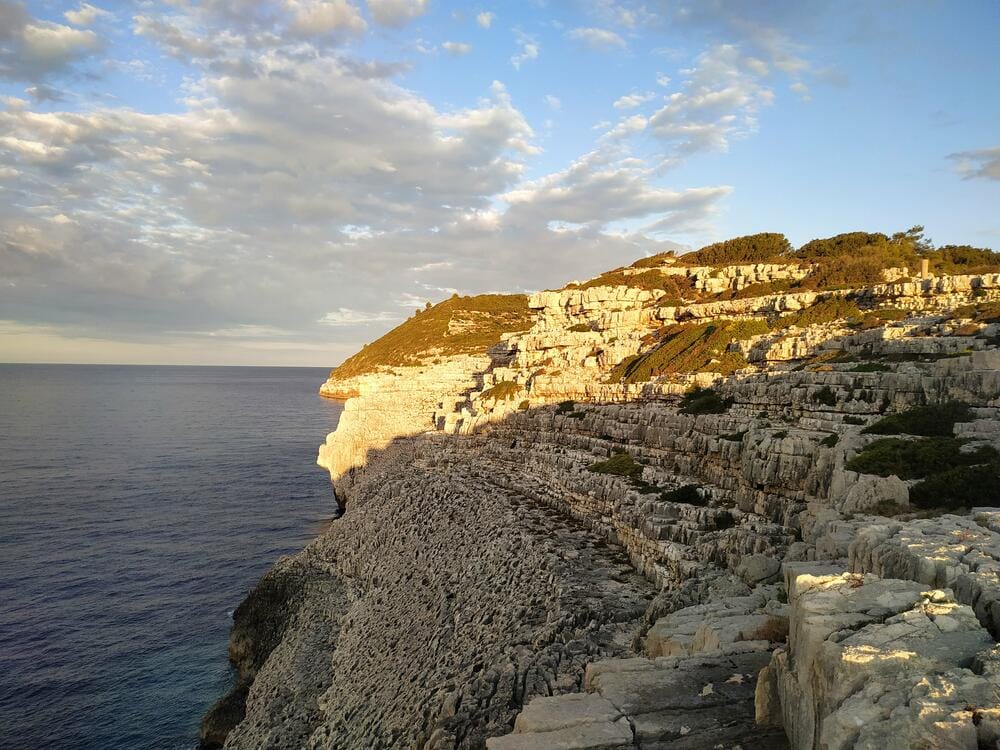
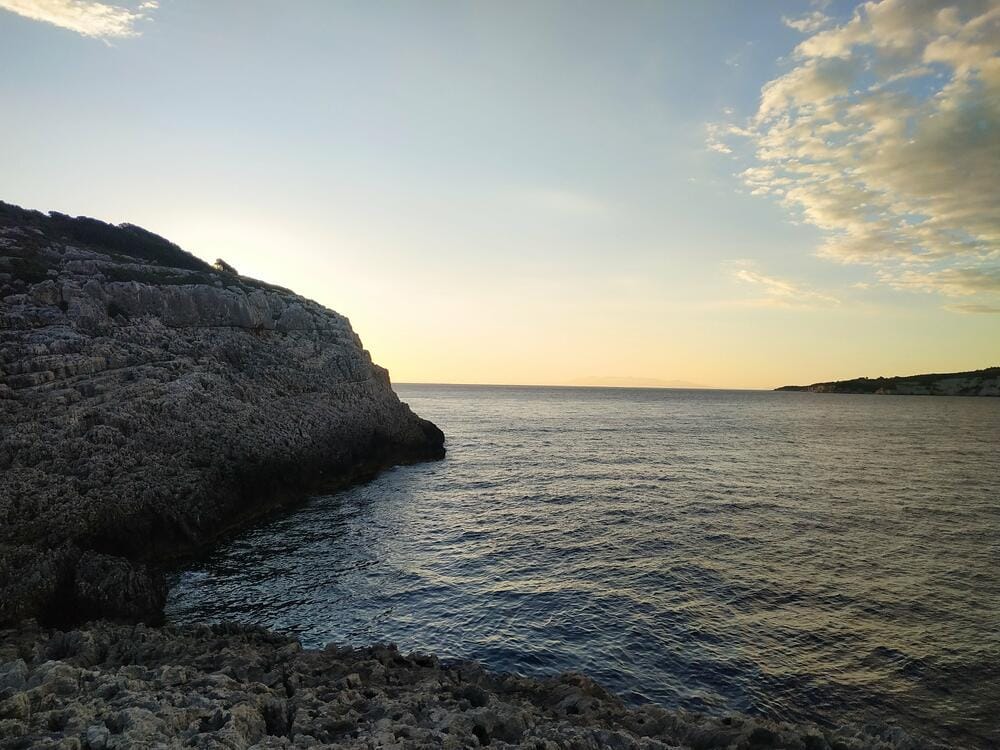
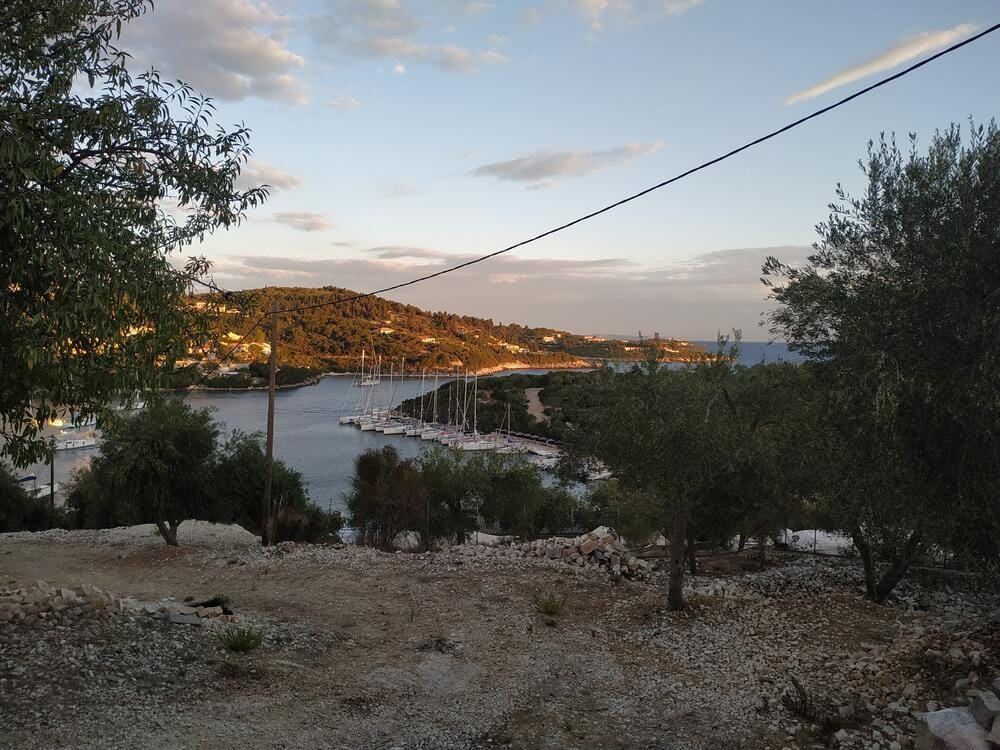
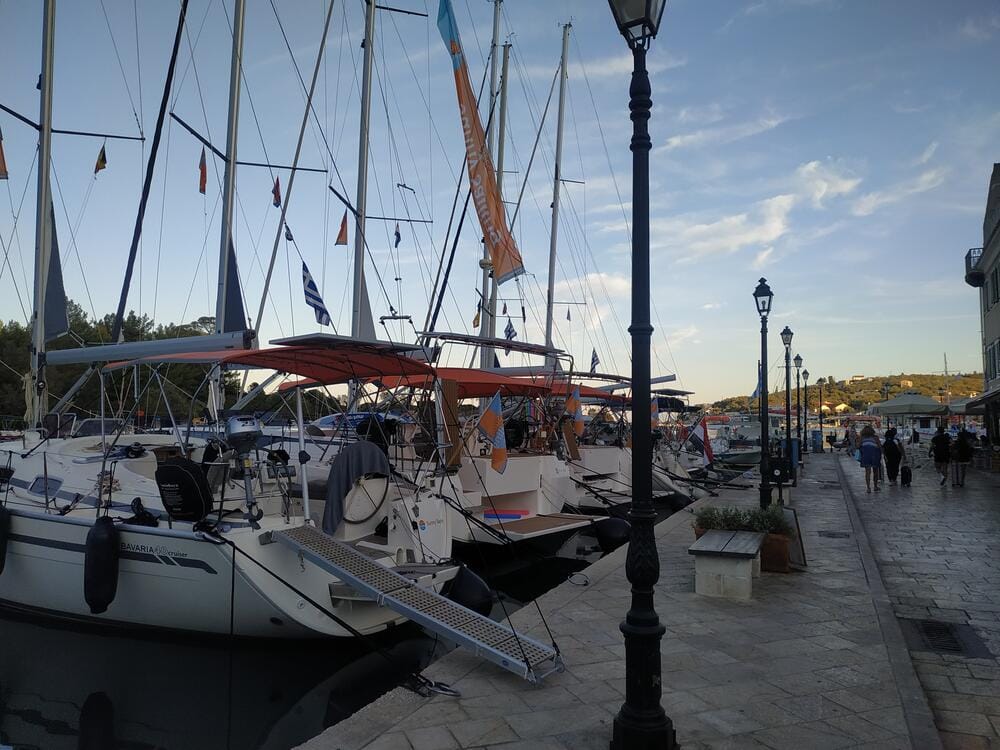
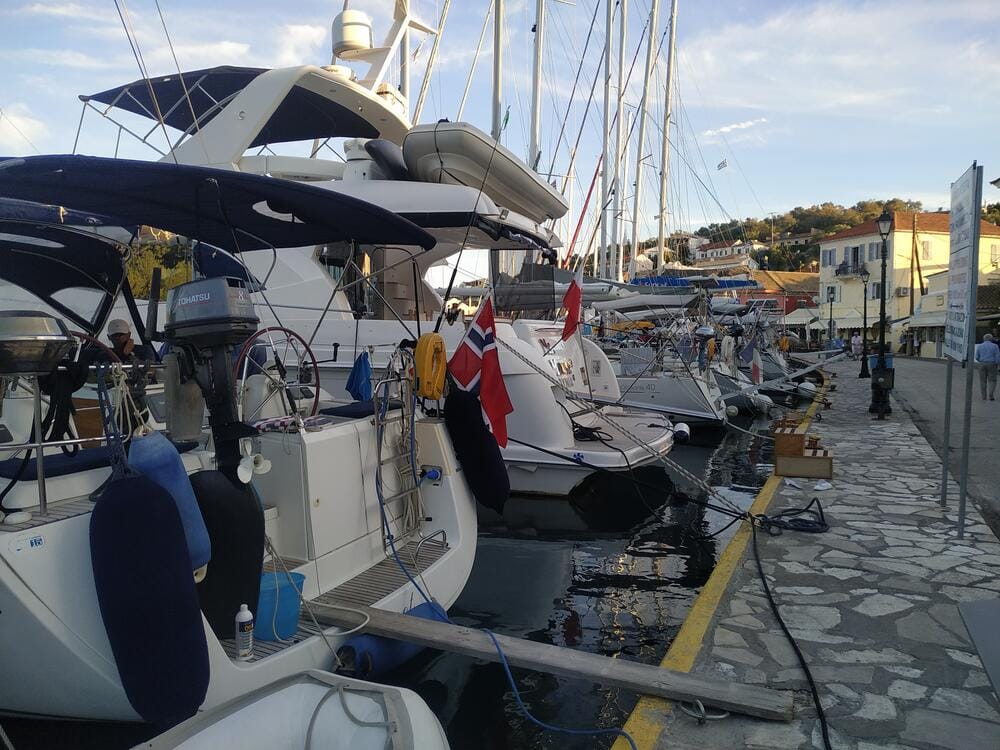
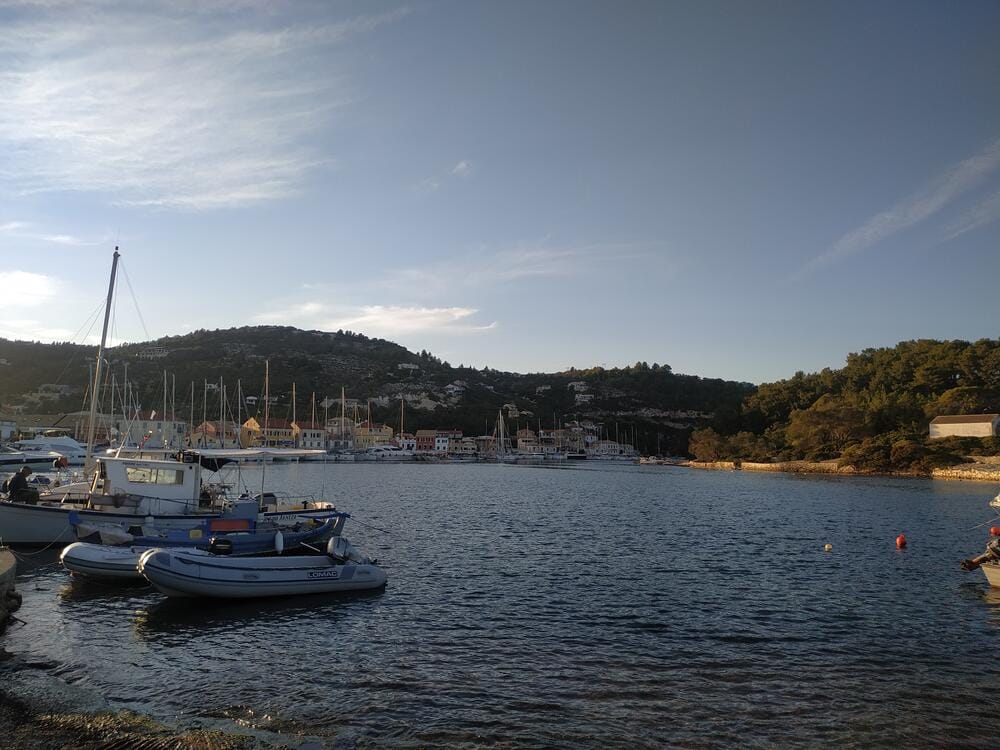

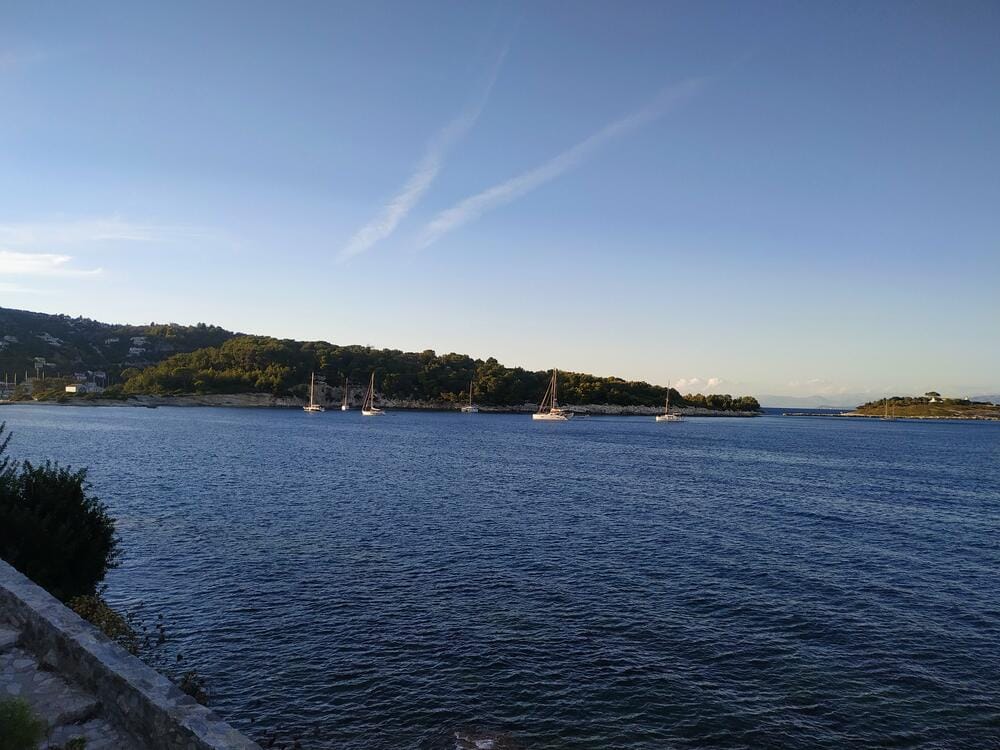
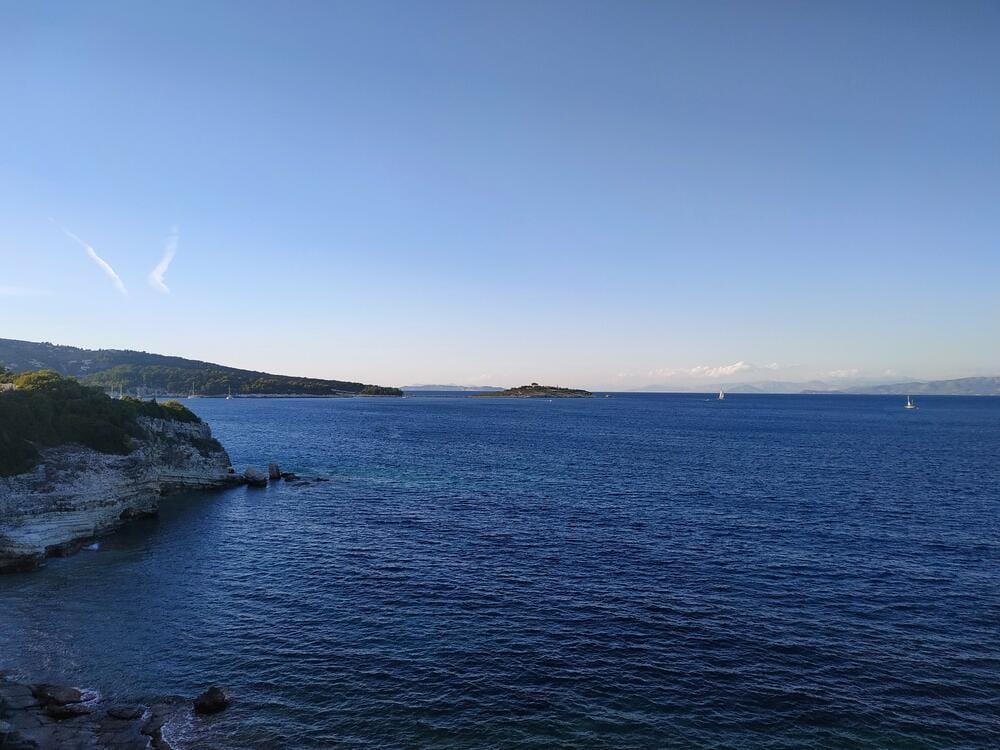
Gaios
In the evening, we walked back into Gaios, which offers a stunning view and is dotted with charming villas. A helicopter flew overhead — probably dropping off some lucky guest. We enjoyed an Aperol Spritz and took note that the black-and-yellow painted piers are privately owned.
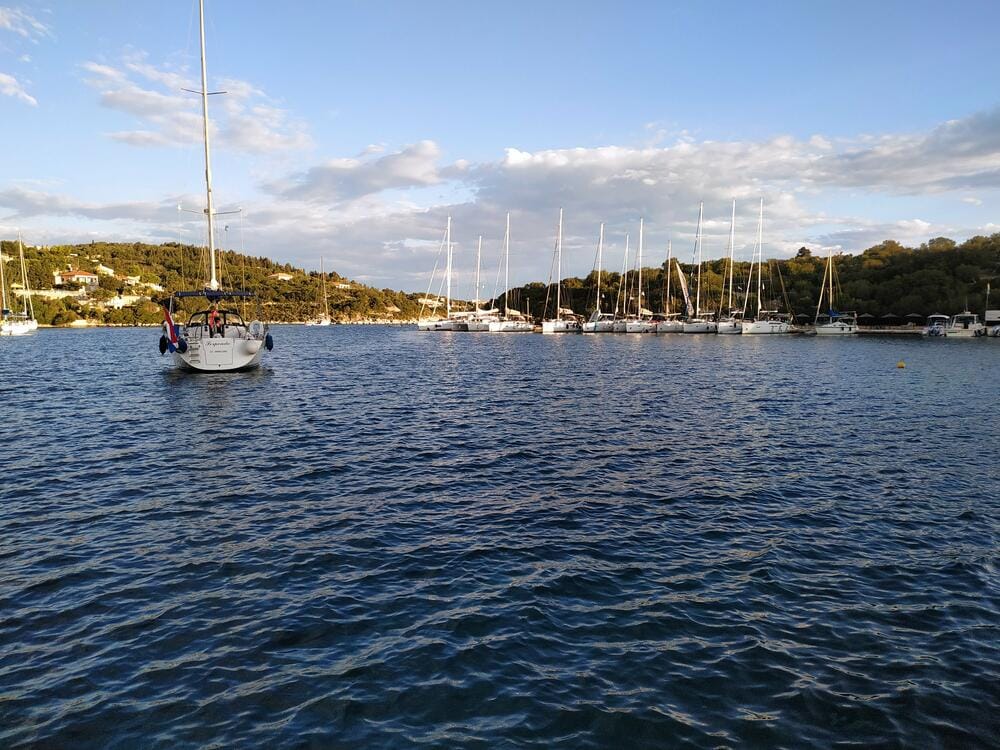
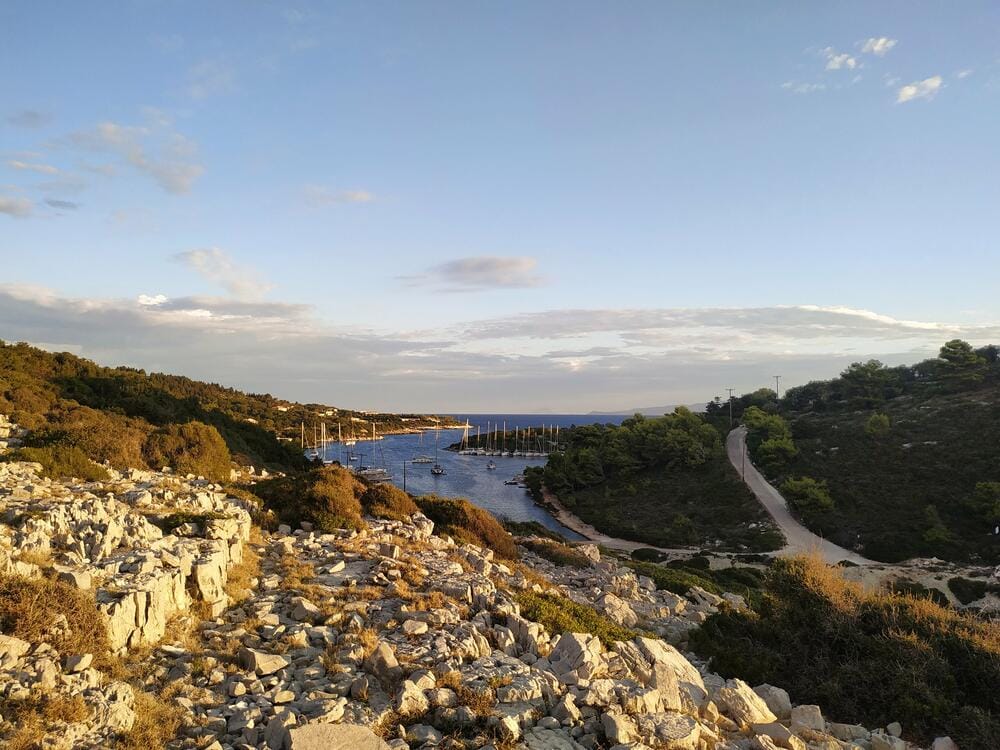
Gaios
Day 12 – Sivota (Karvouno Beach)
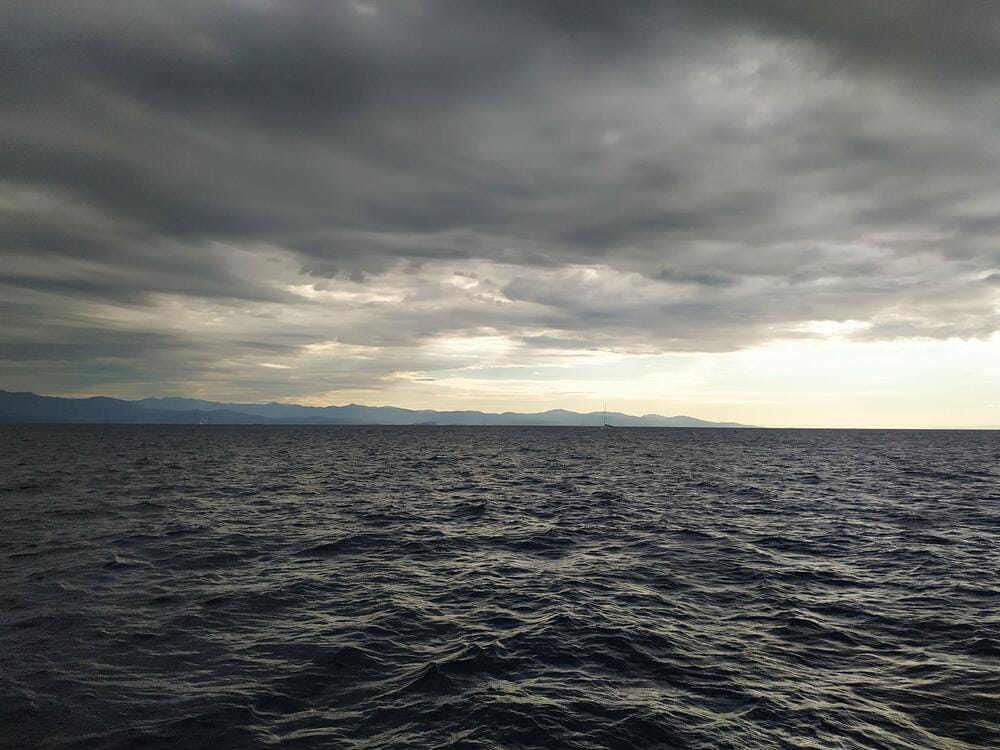
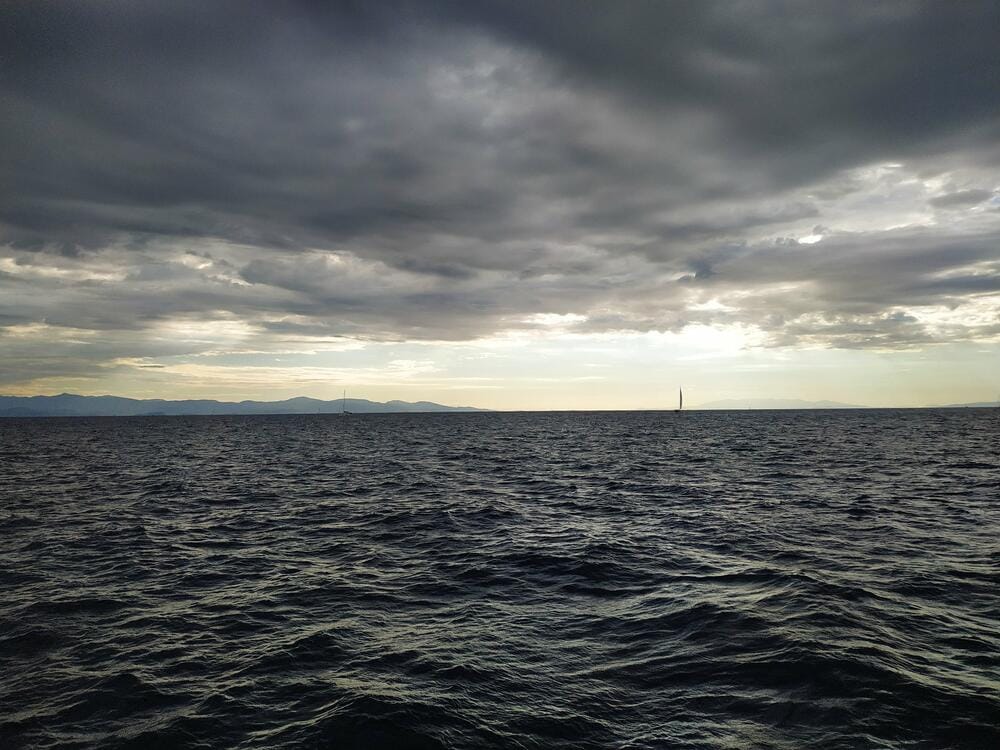
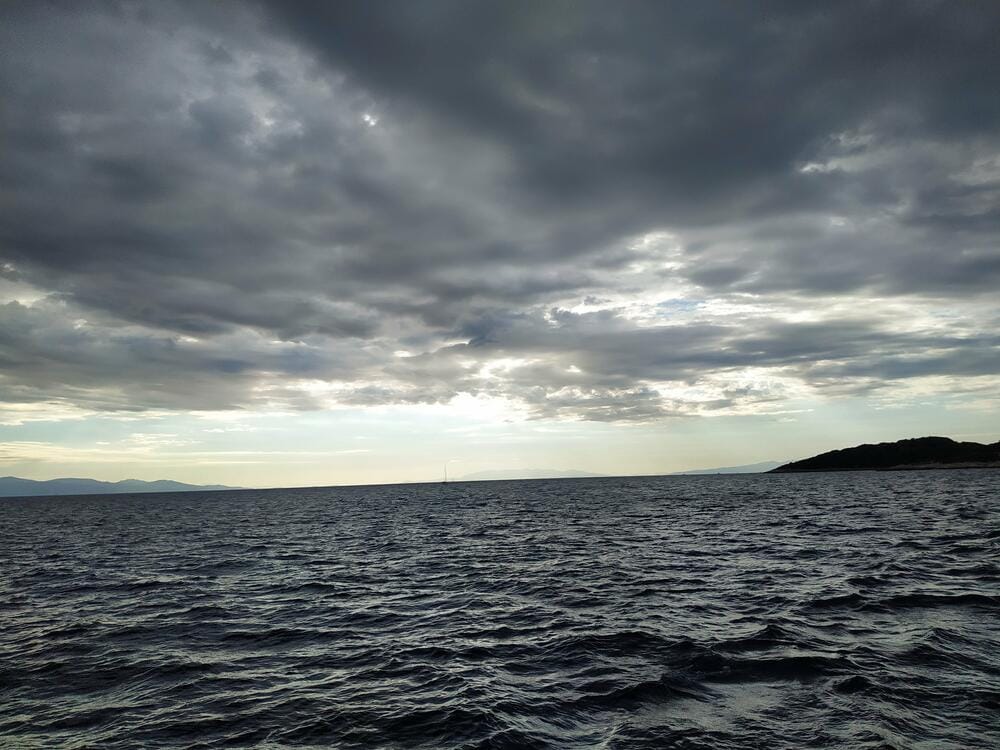
Approaching cyclone
With a cyclone approaching, we reserved a spot at Karvouno Beach, just outside Sivota.
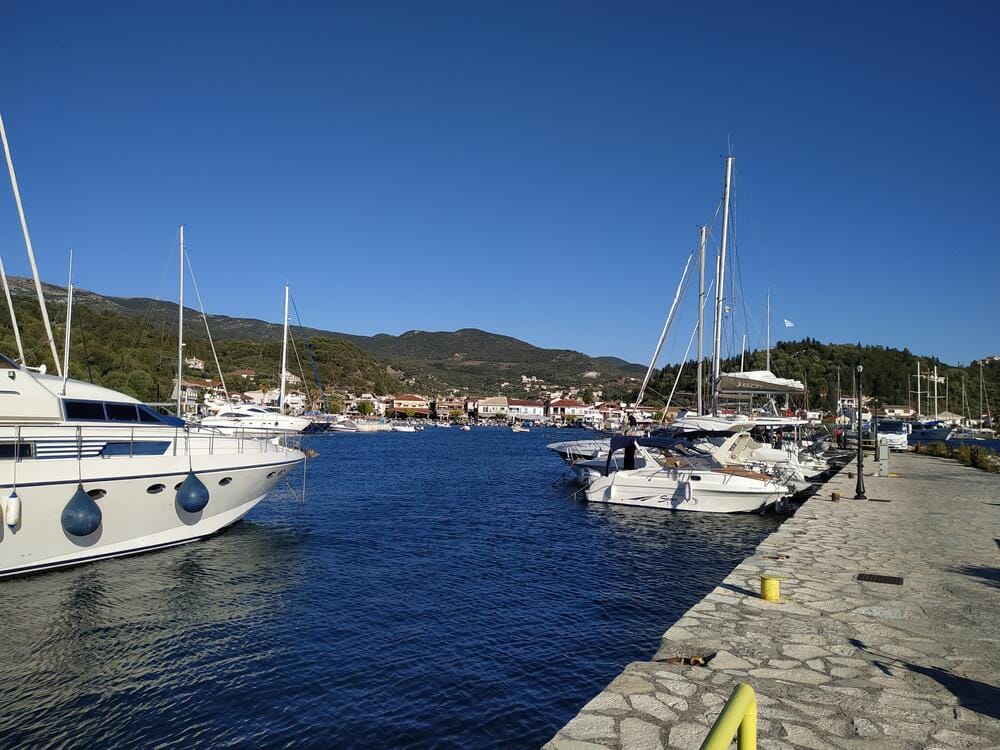
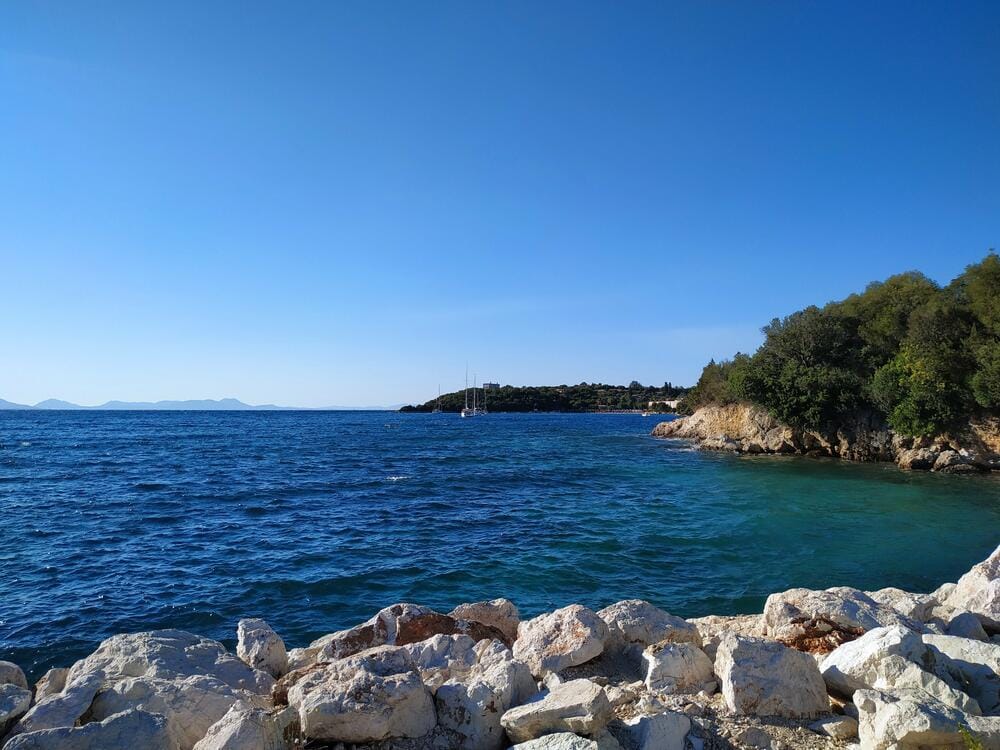

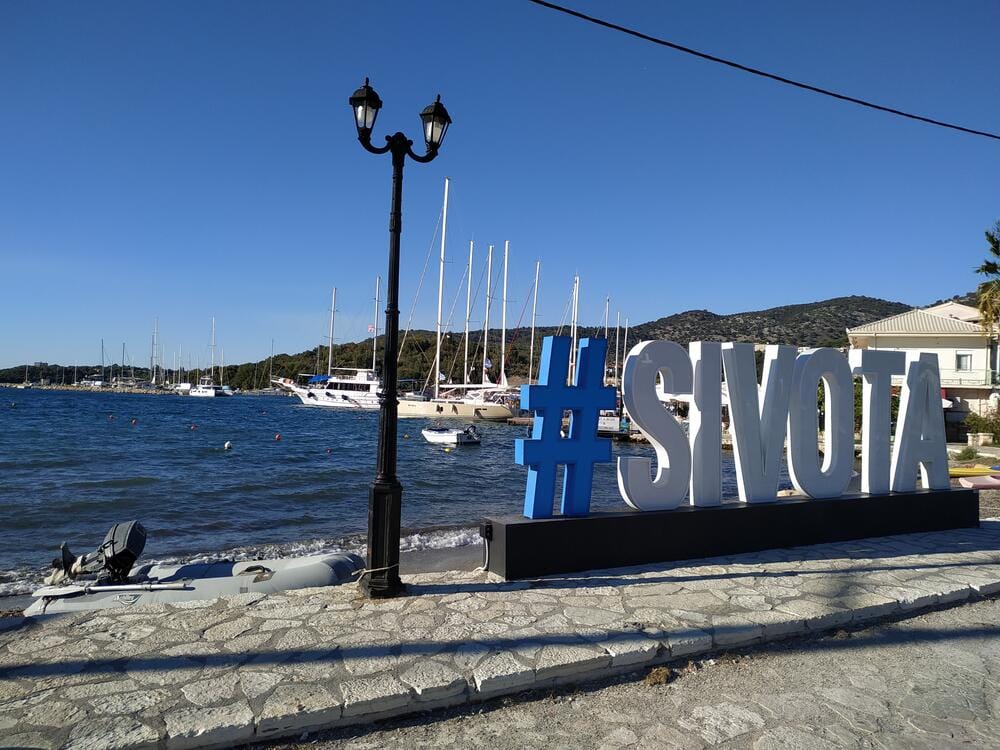
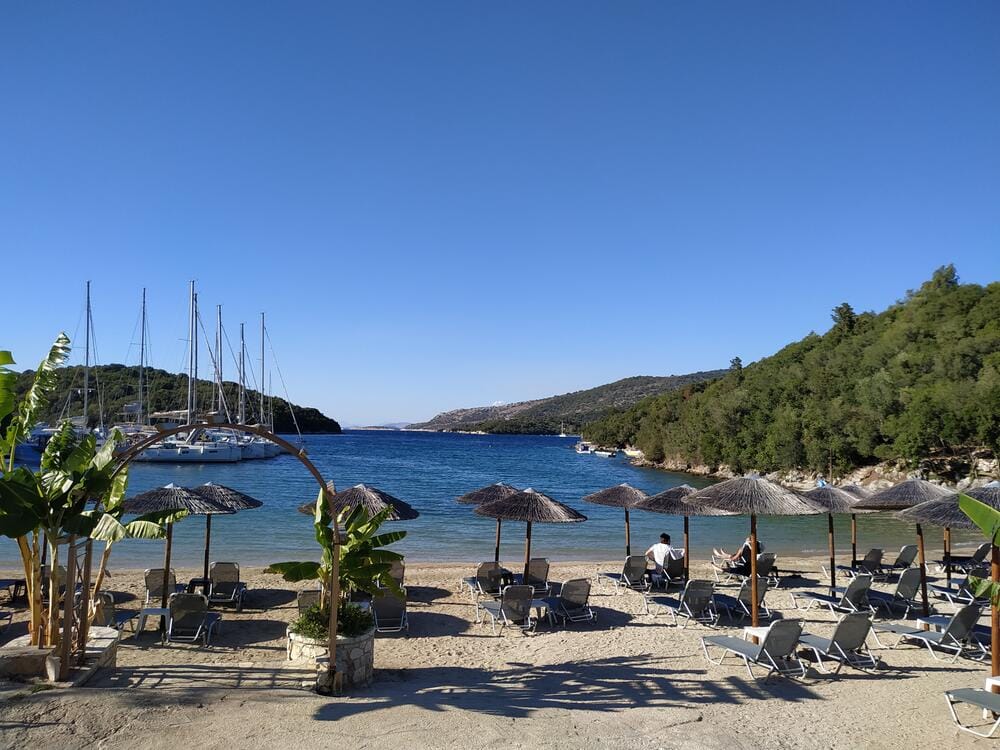

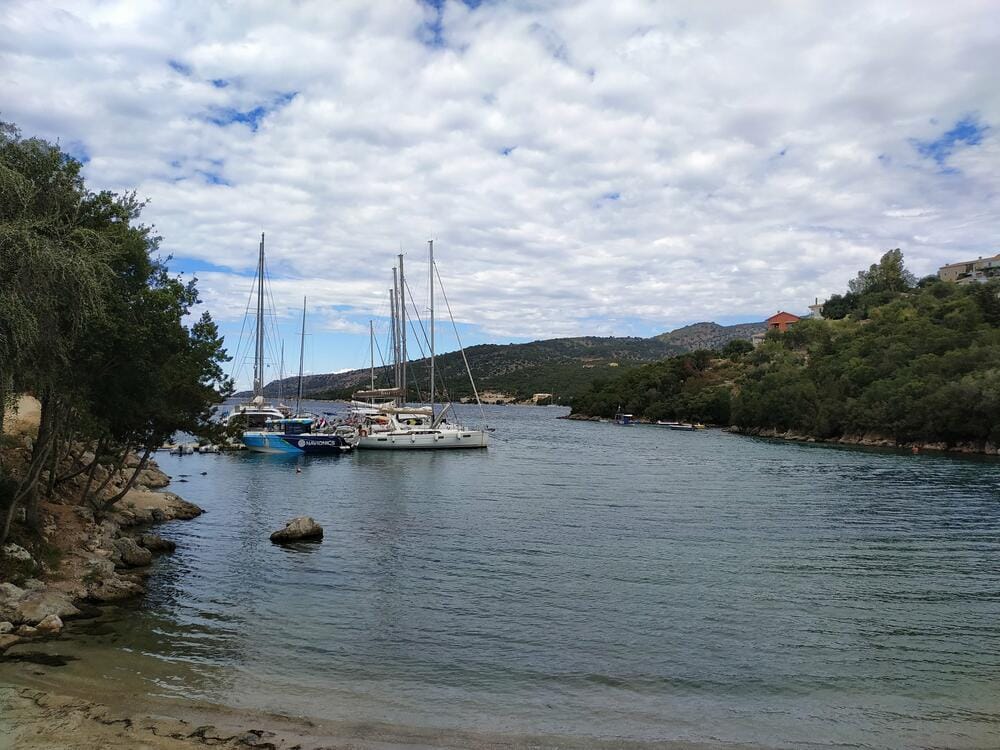
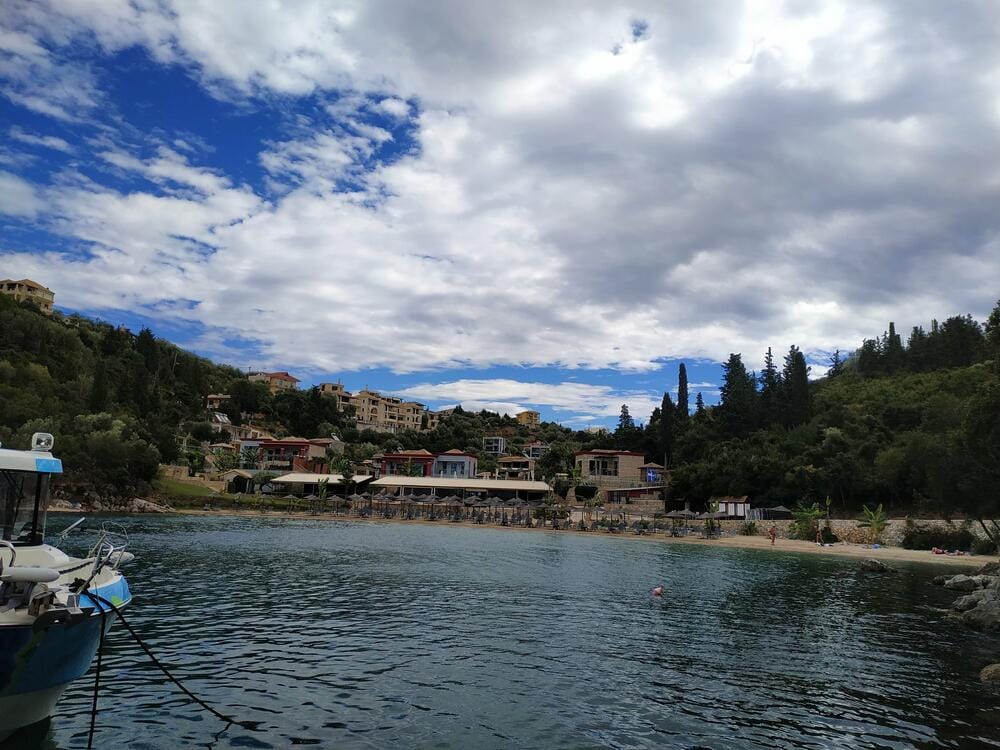
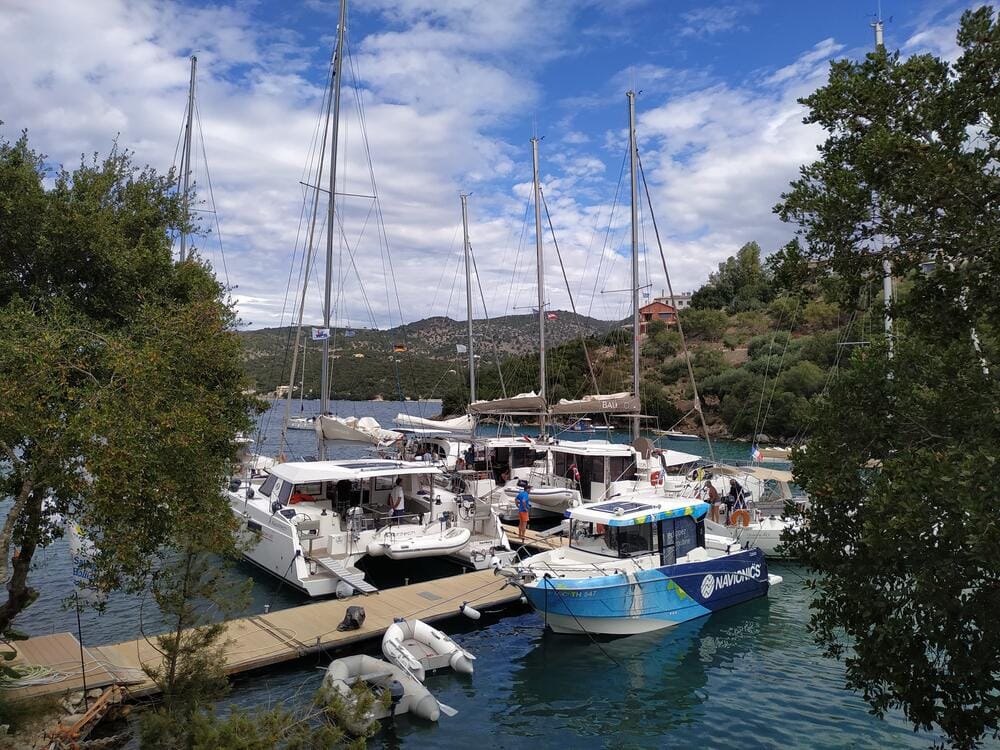
Sivota
We spent the evening observing how boats managed in rough conditions at the city pier. A good reminder that preparation and timing matter — a lot.
Sivota, Cyclone
Sivota, Cyclone
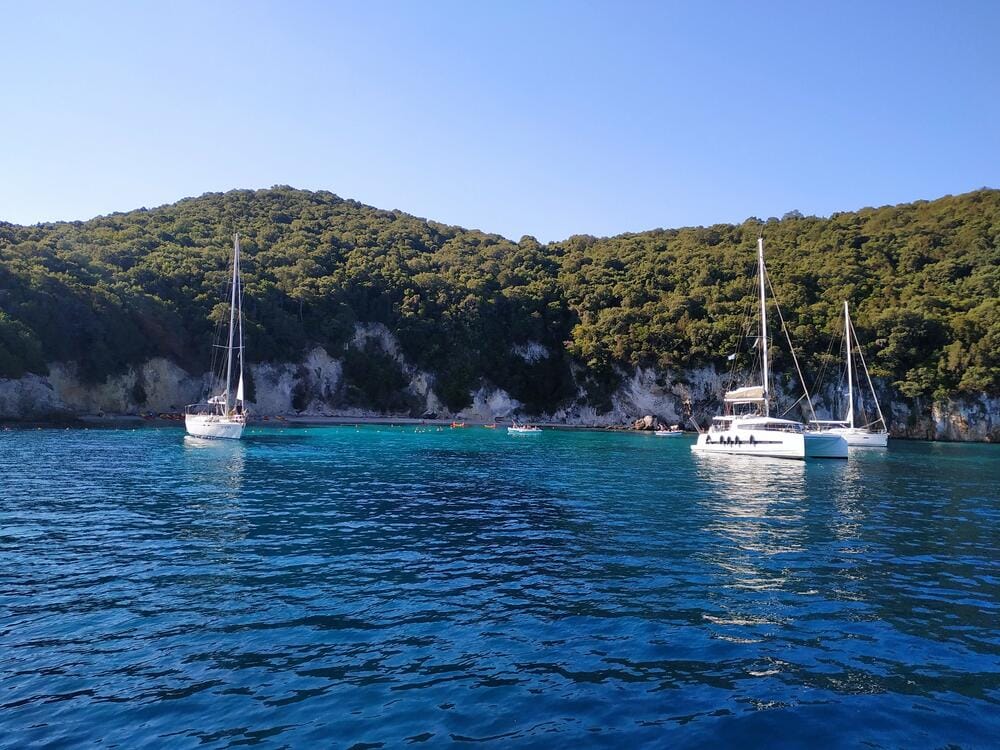
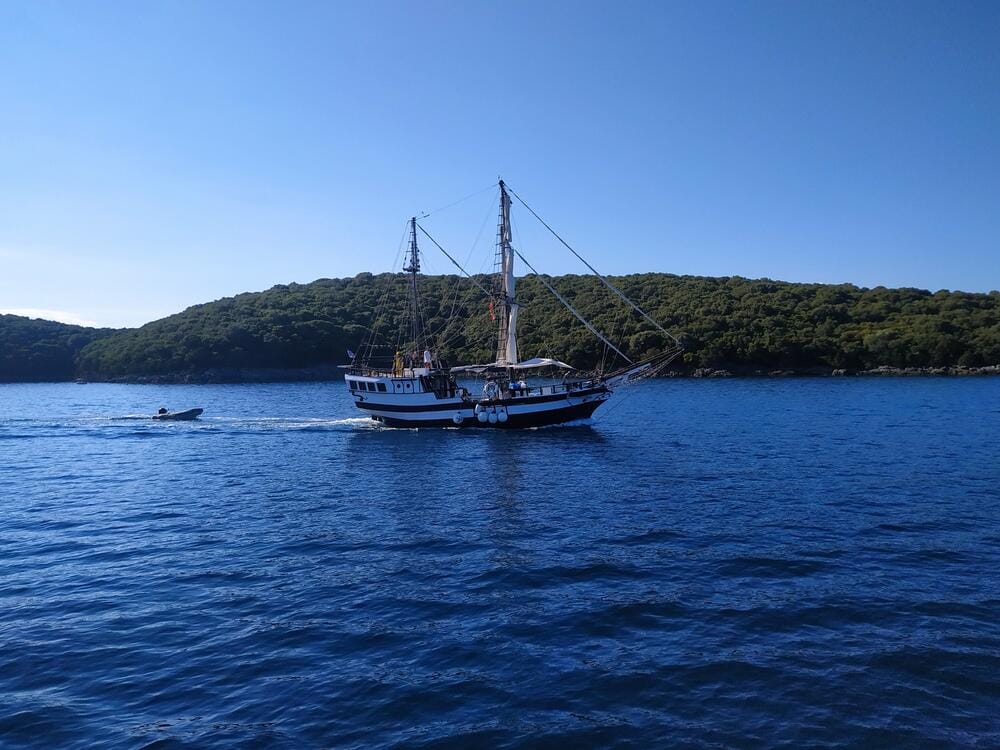
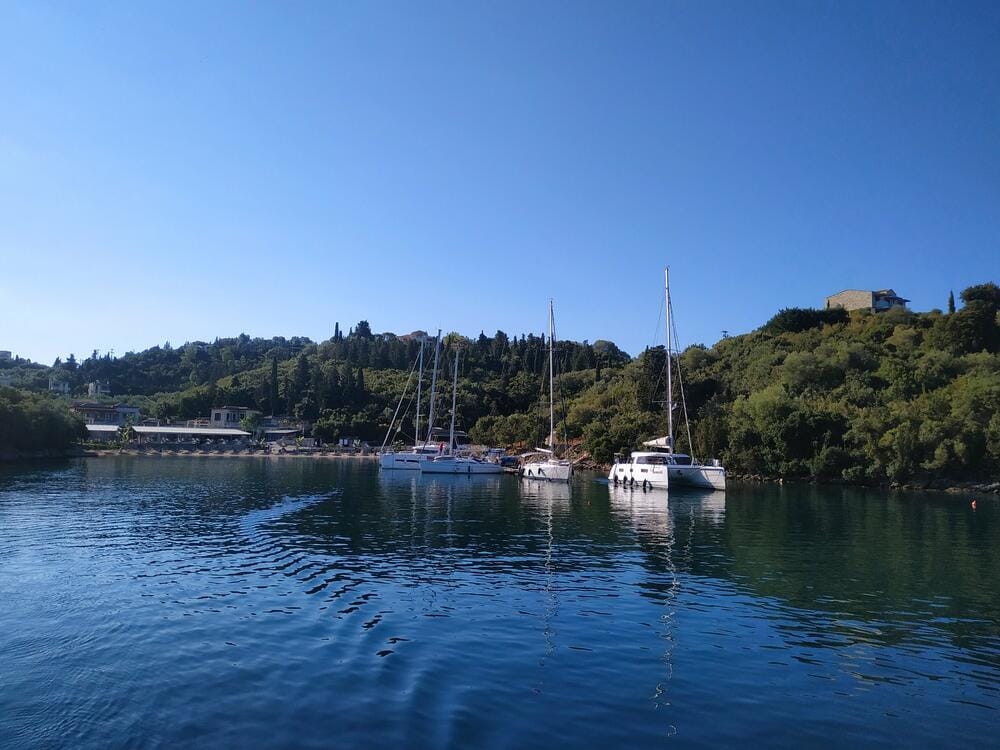
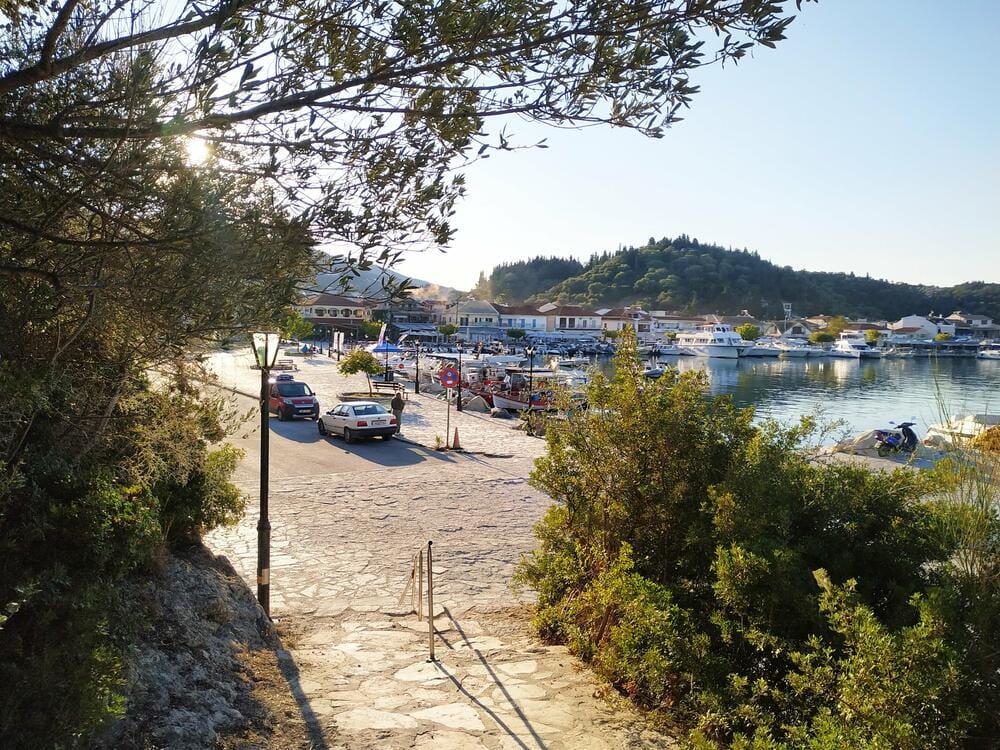
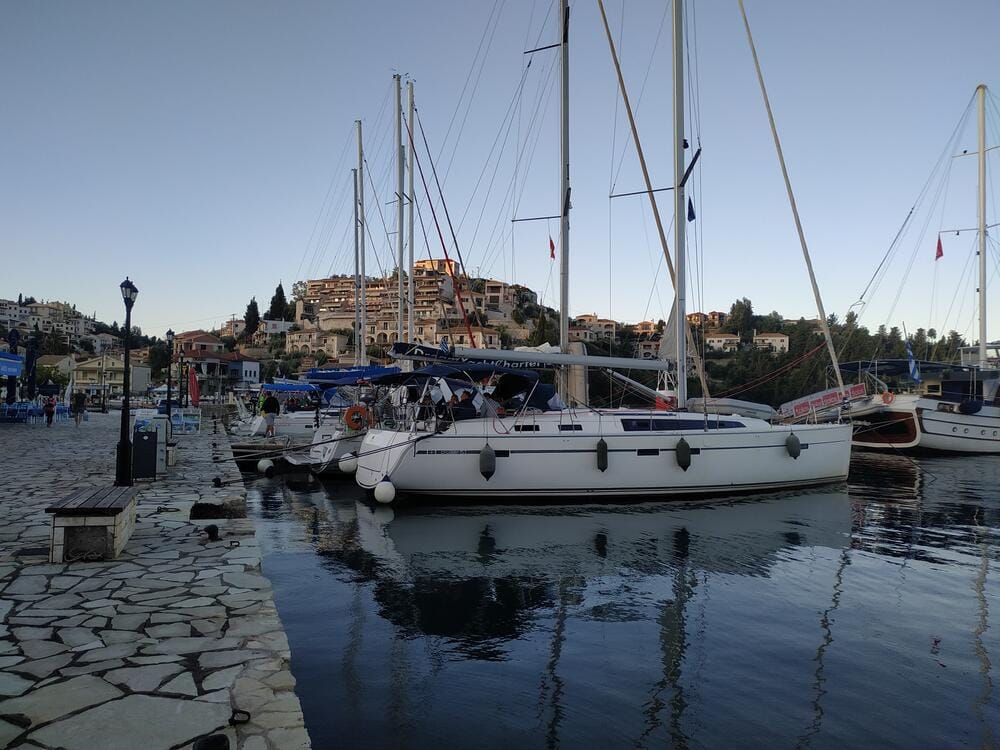
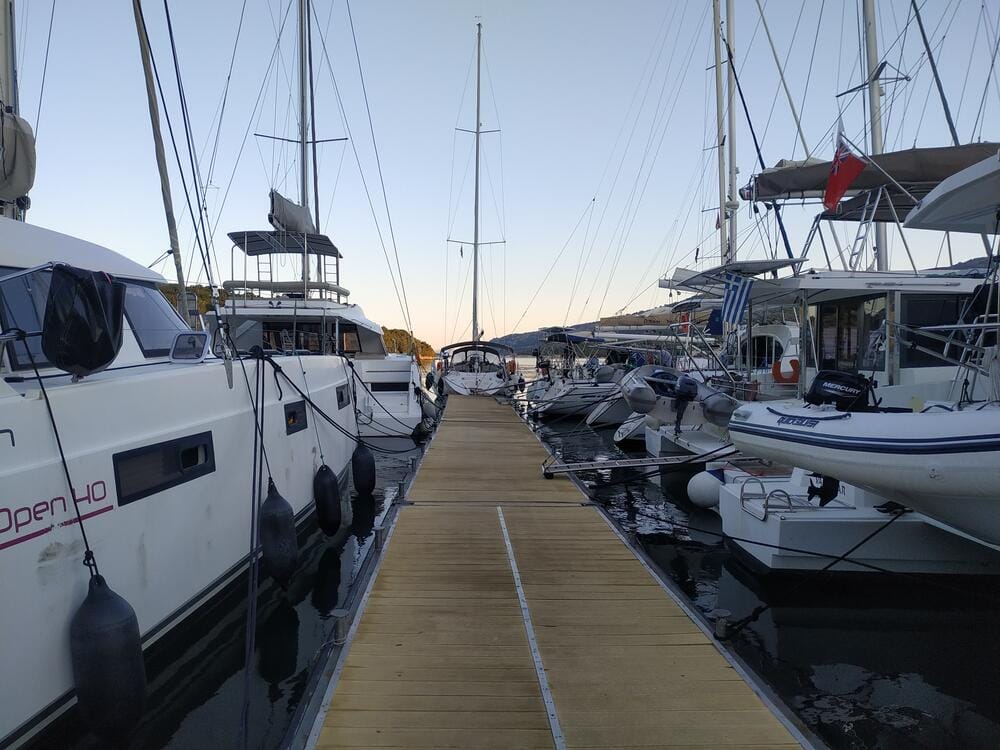
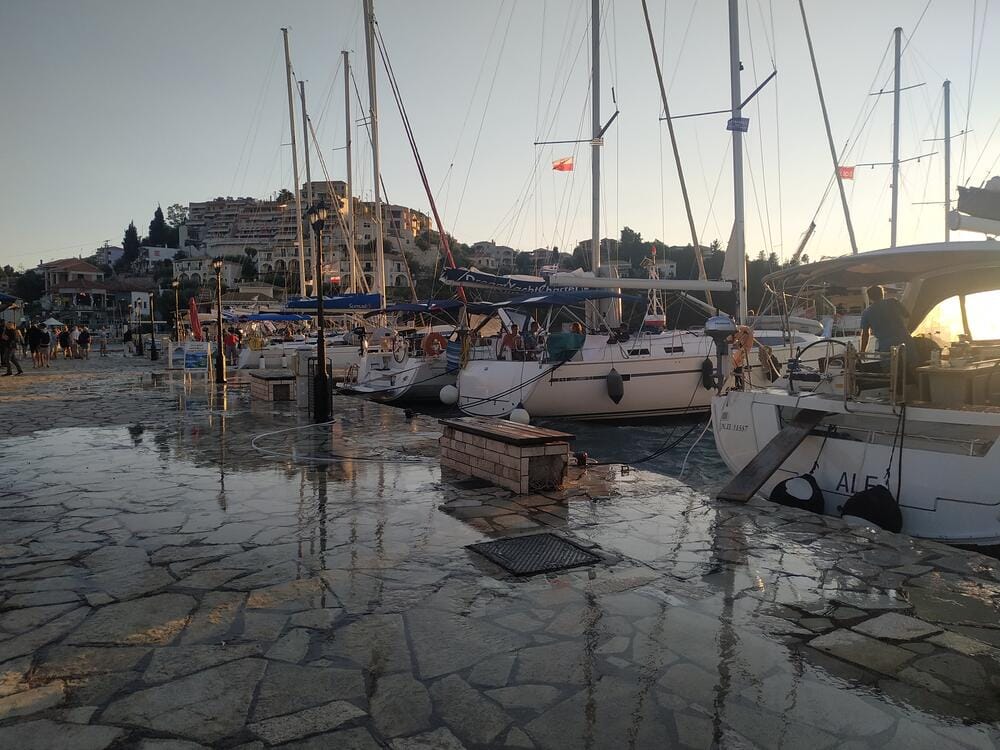

Sivota
Day 13 – Mandraki Marina, Corfu
Our final night was spent in Mandraki Marina, nestled right below the ancient walls of the Old Fortress of Corfu. Guests of the marina don’t have to pay entry to the fortress — the gate is the marina's exit.
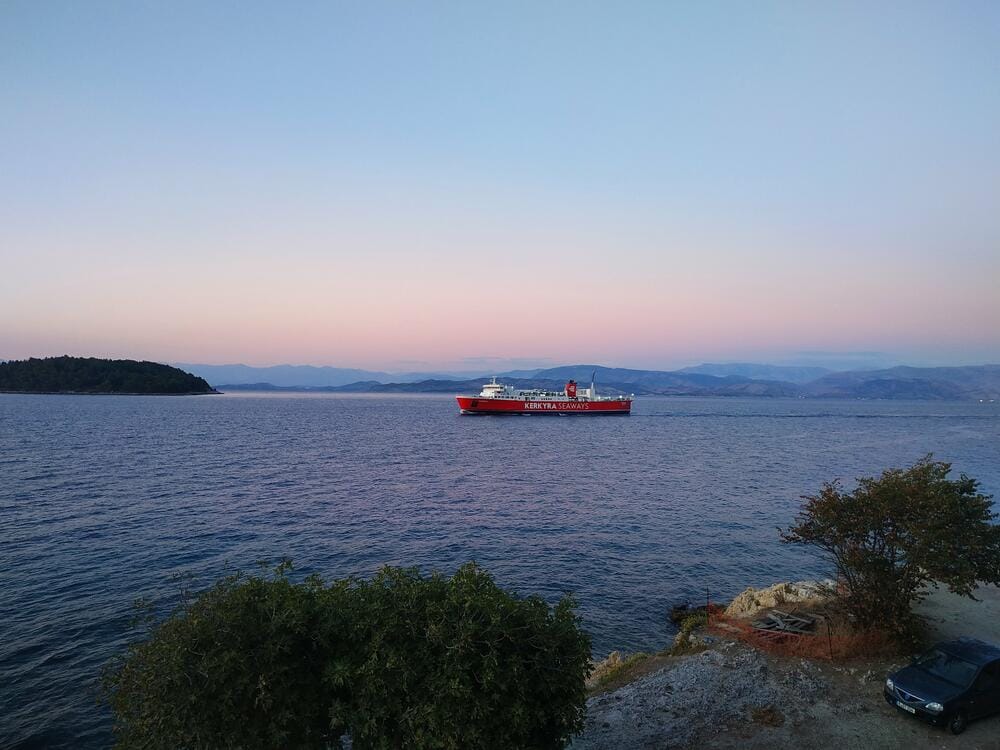
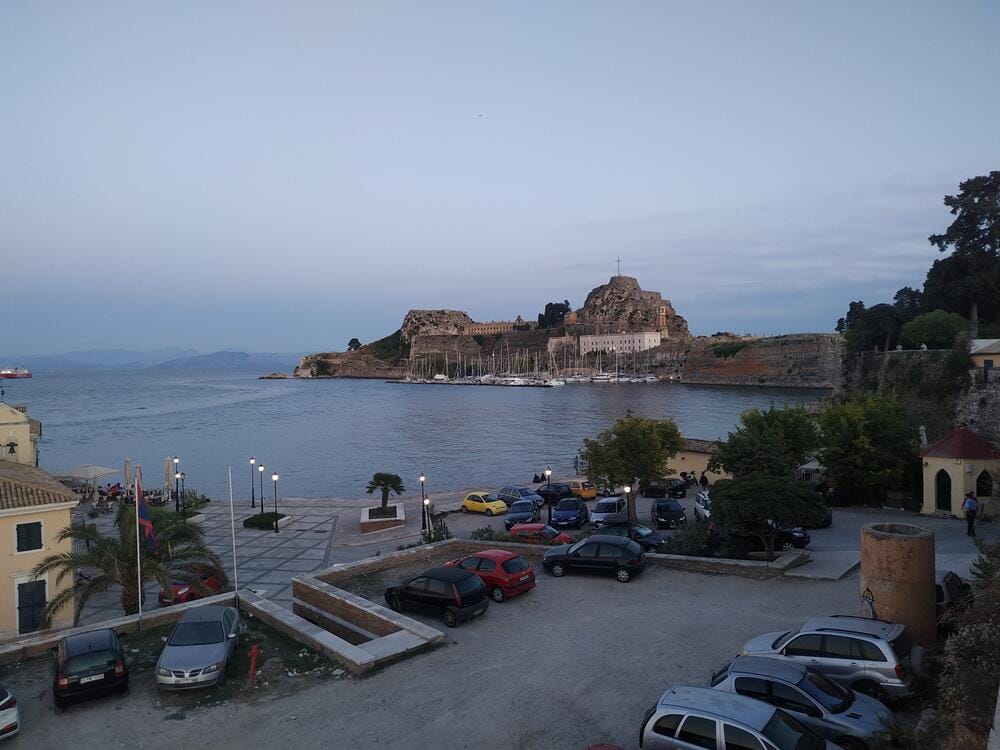
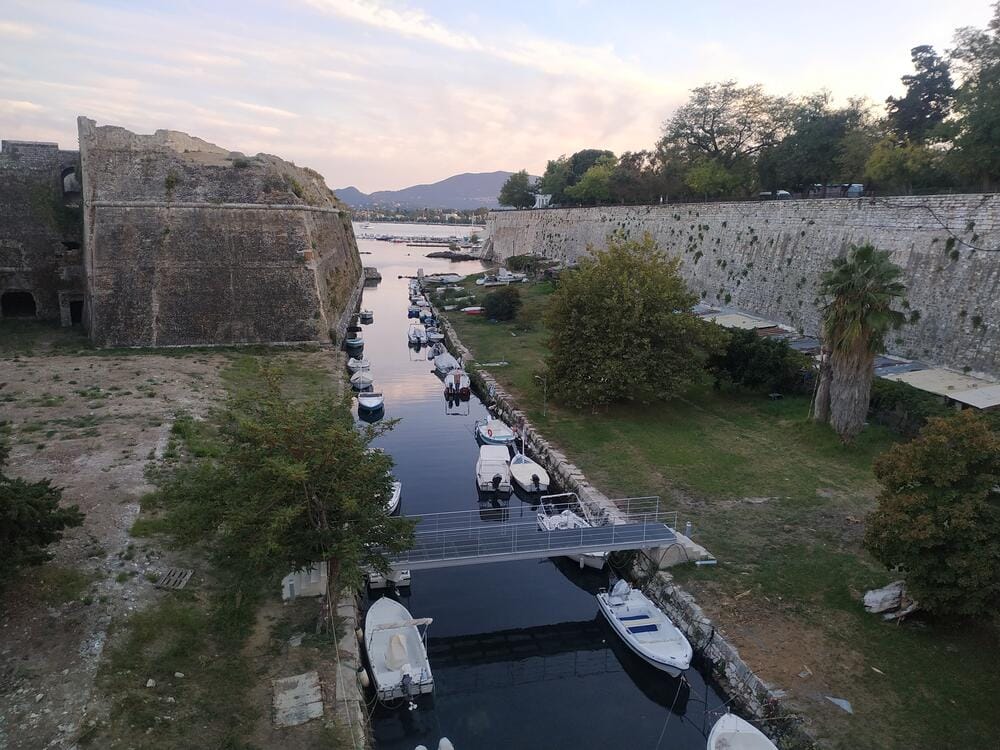
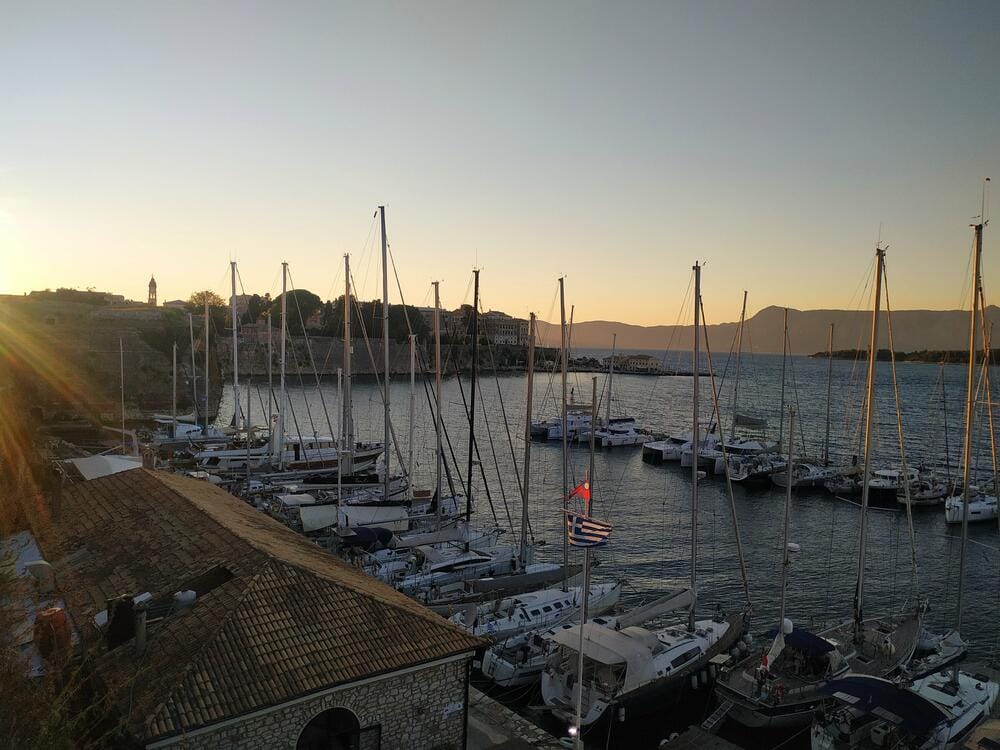
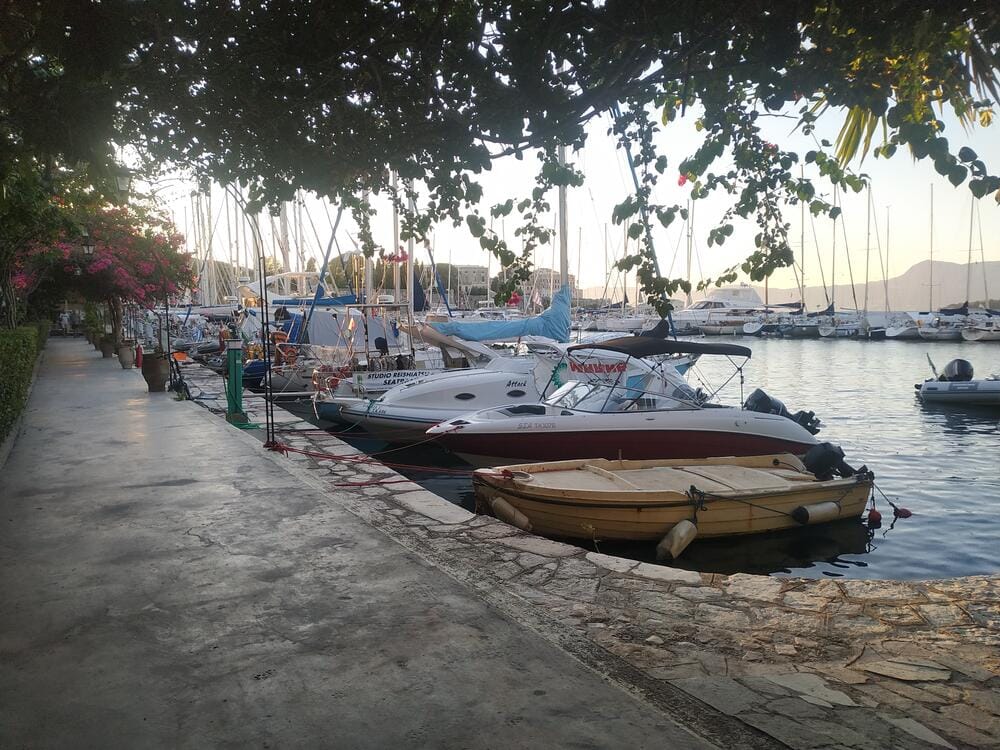
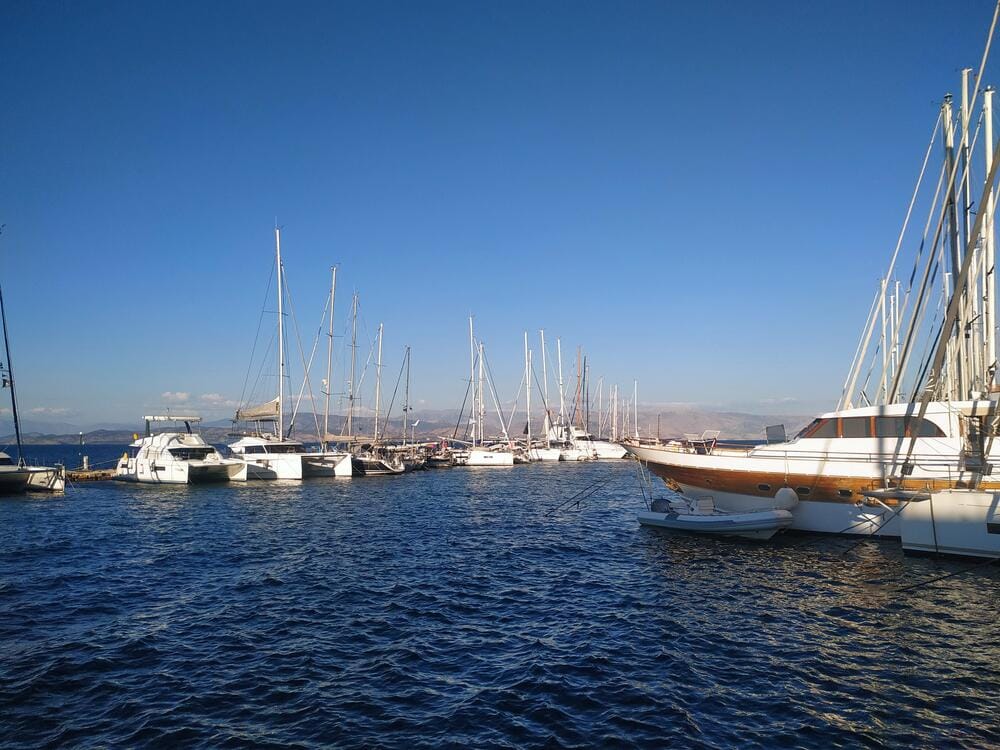



Corfu
A magical place to spend the last night of our first catamaran trip.
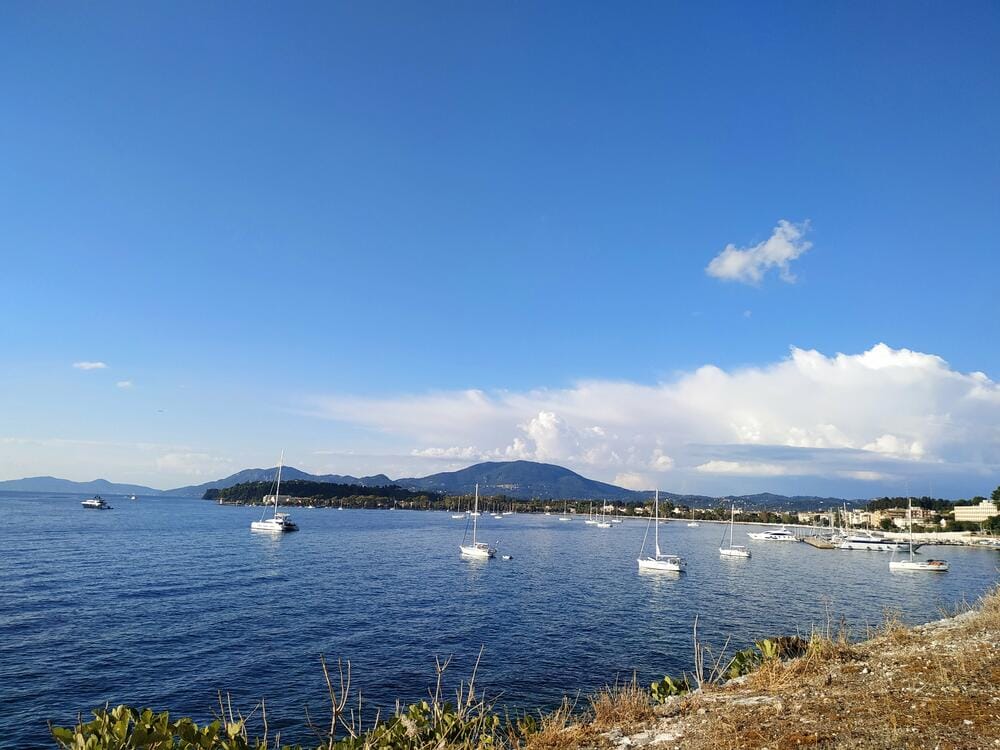
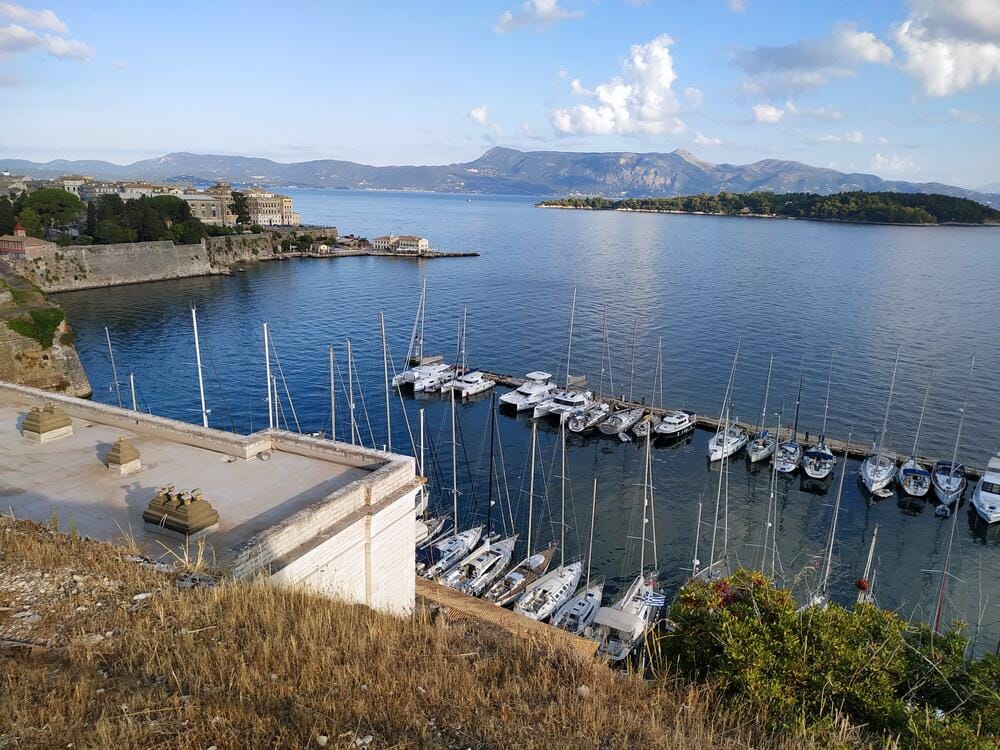
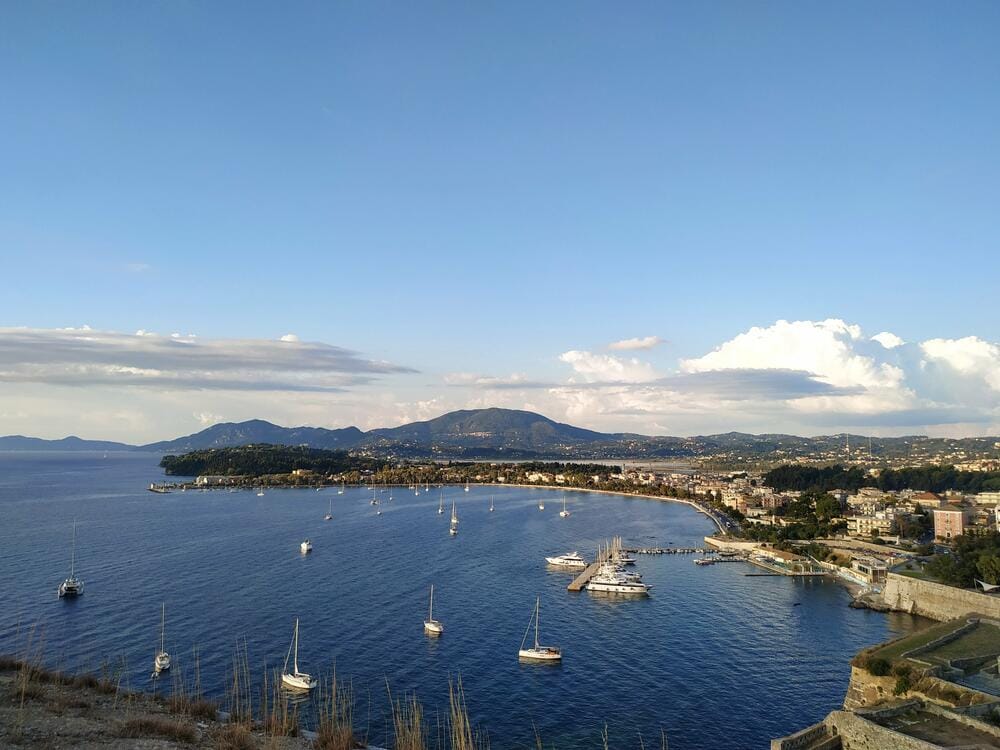
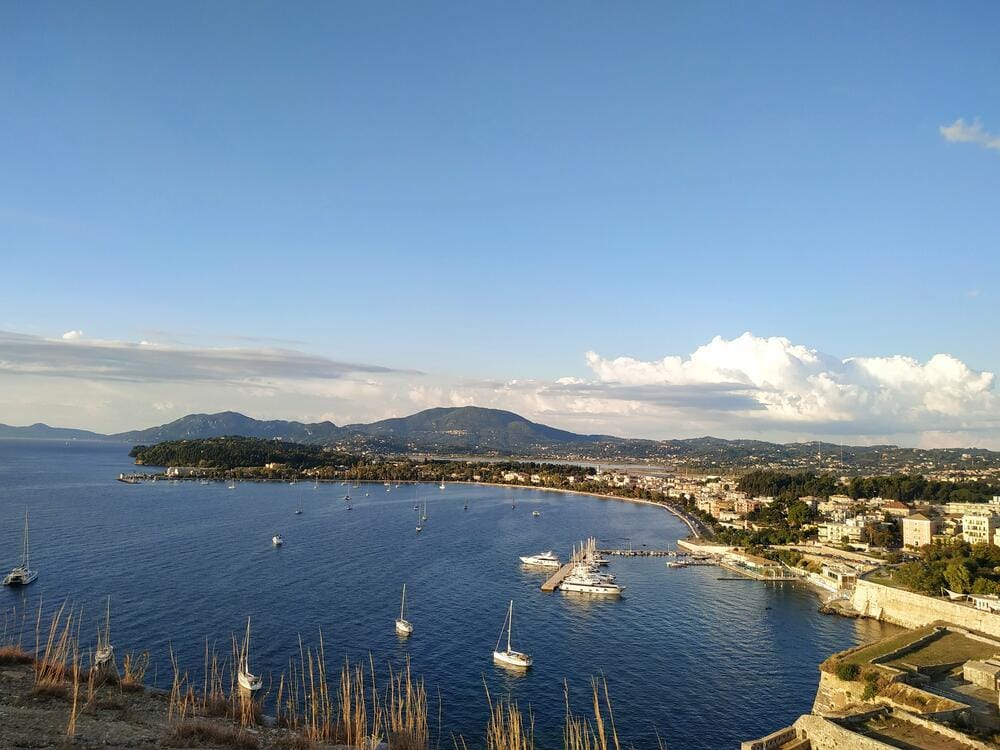
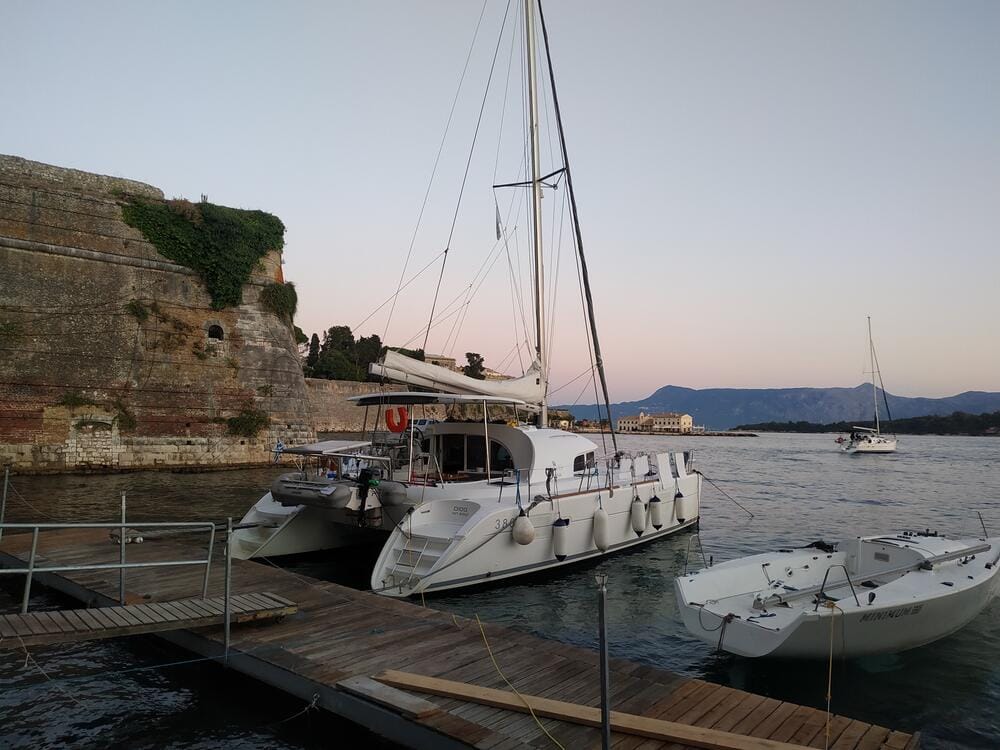
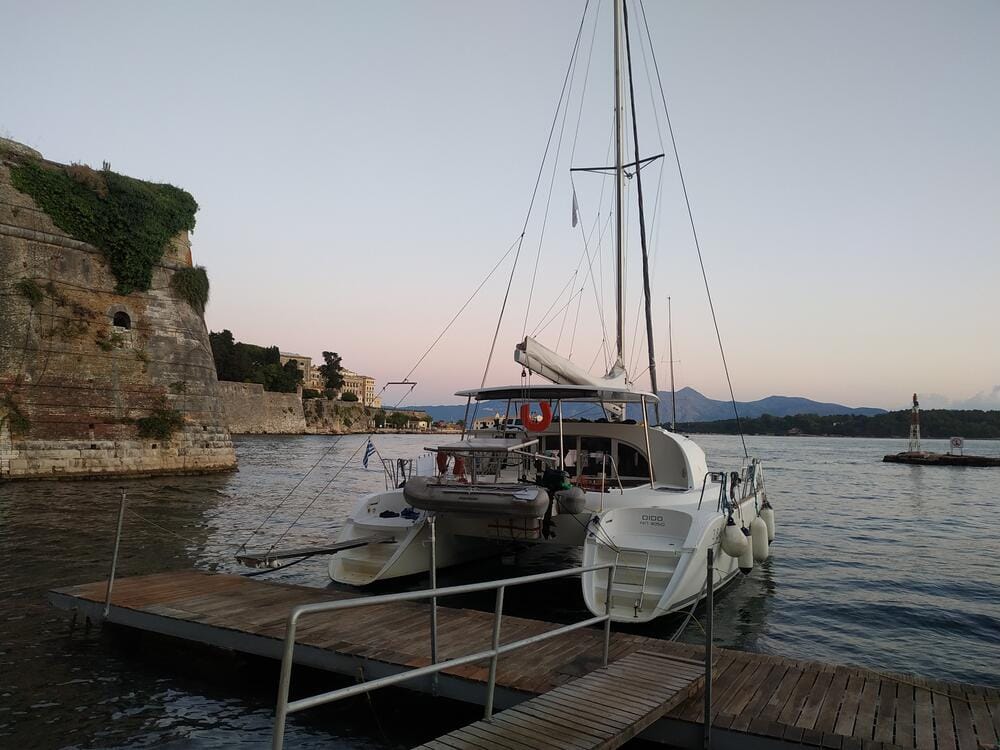
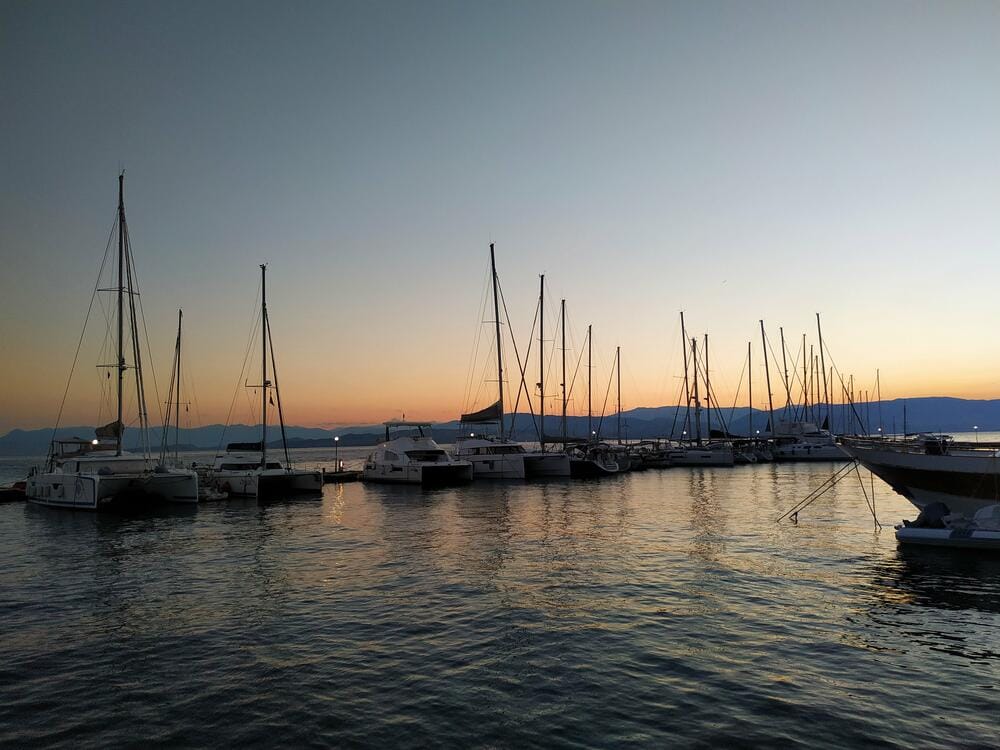
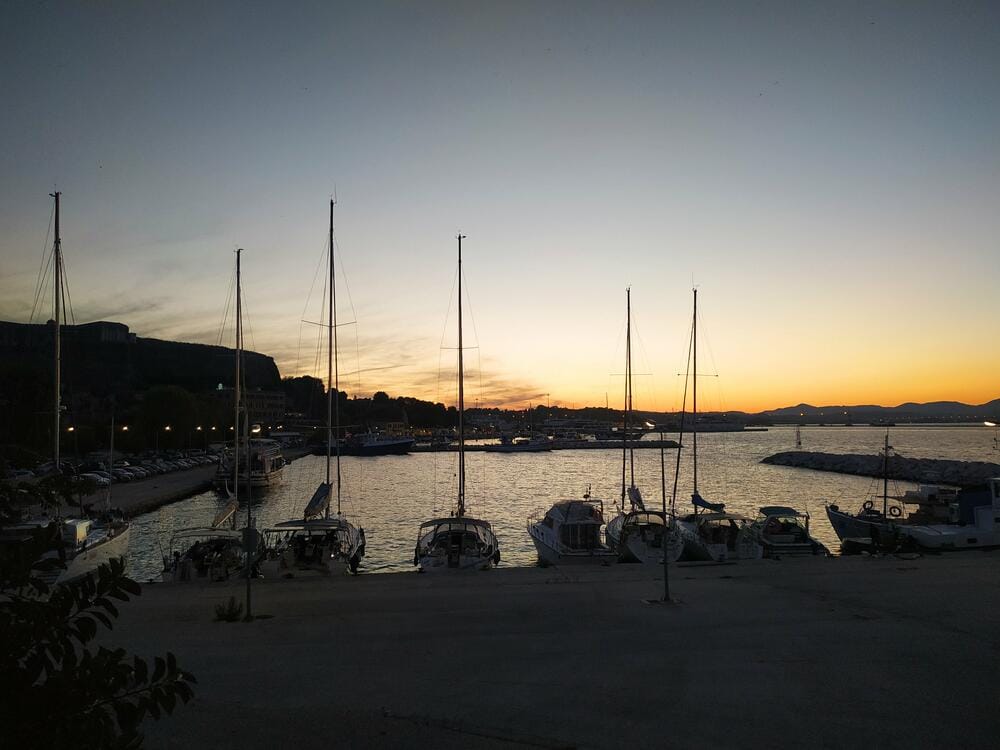
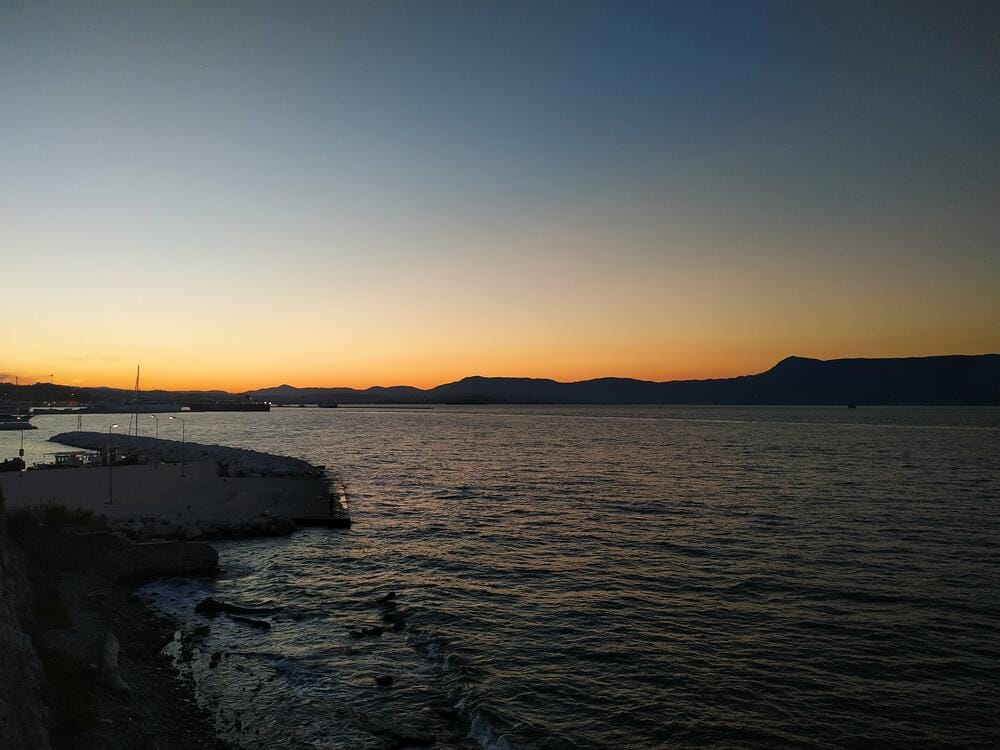
Corfu
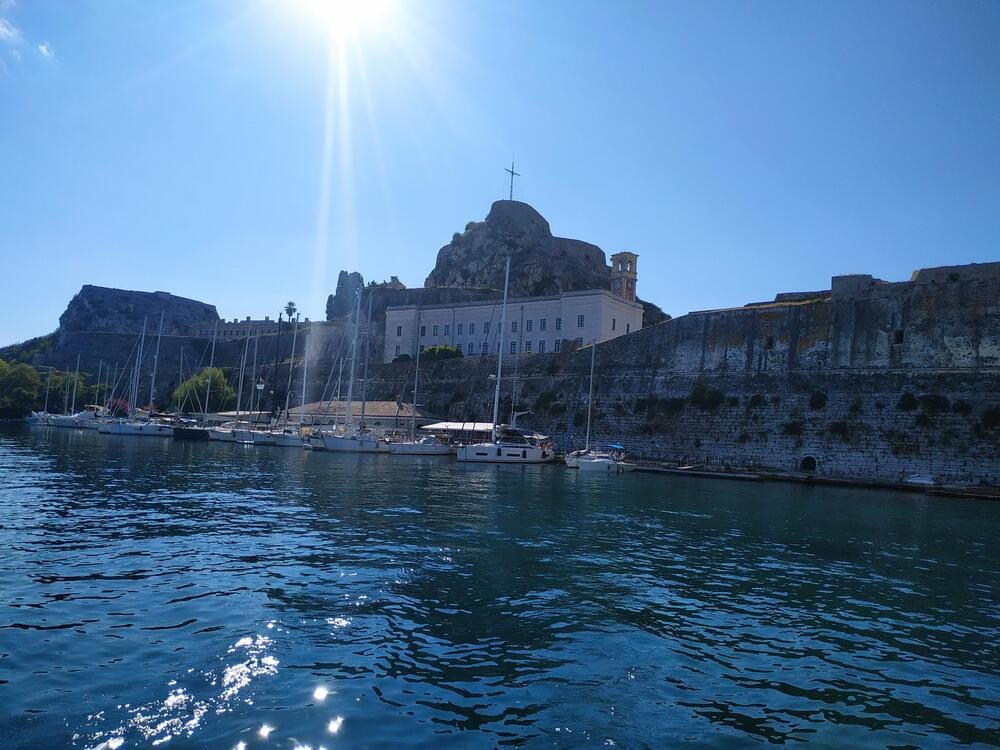

Corfu
Day 14 – Return to Gouvia
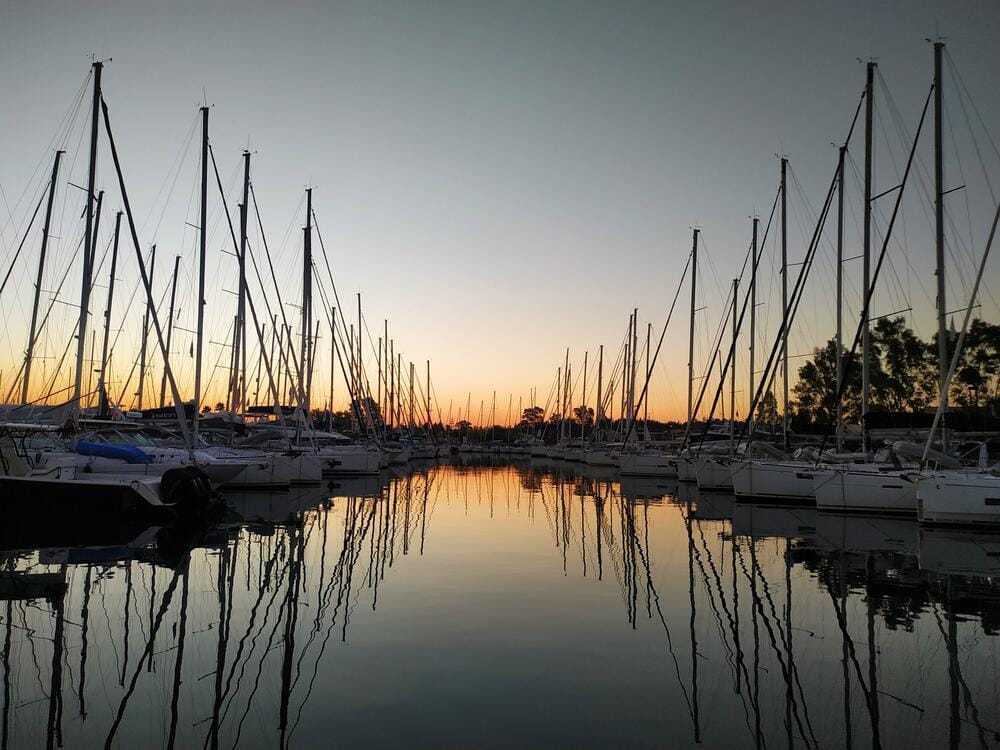

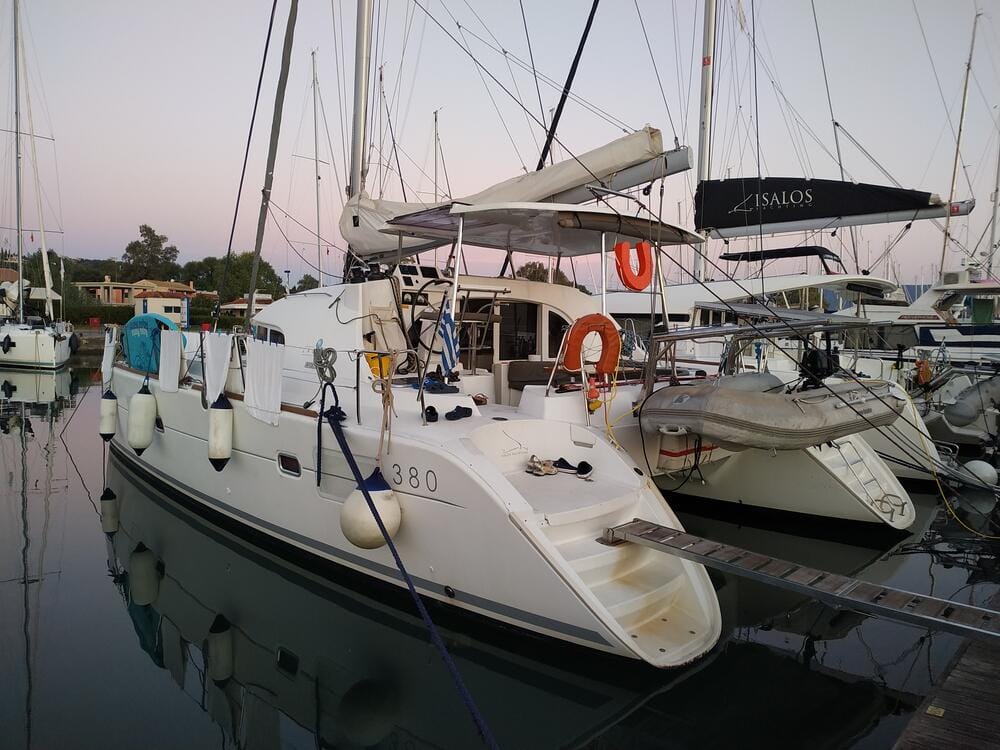
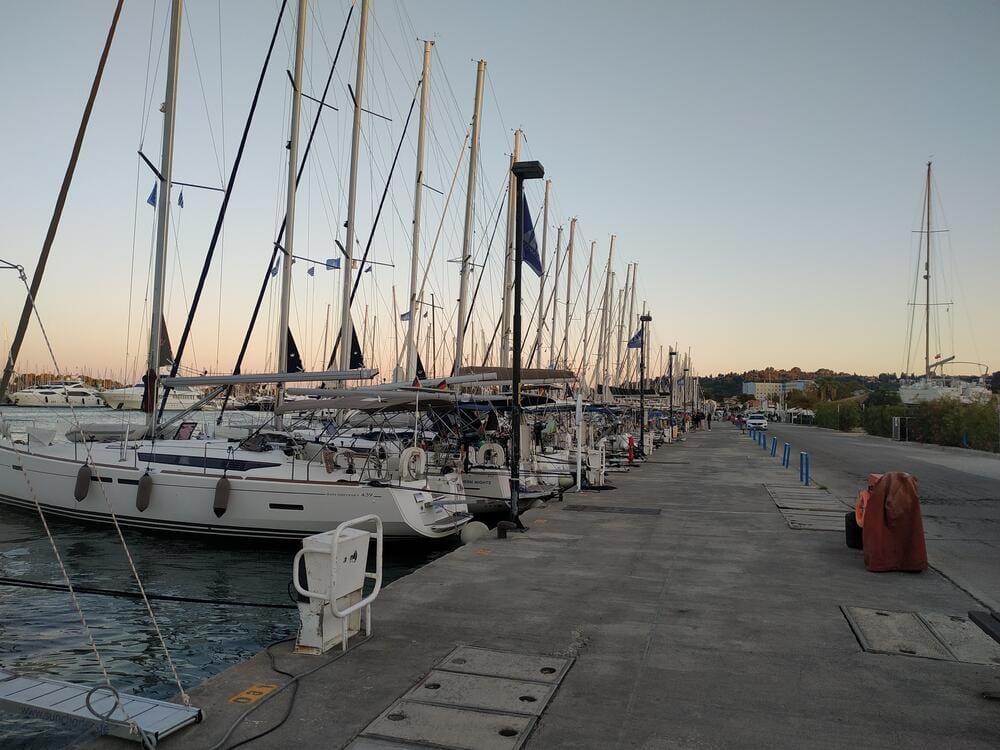
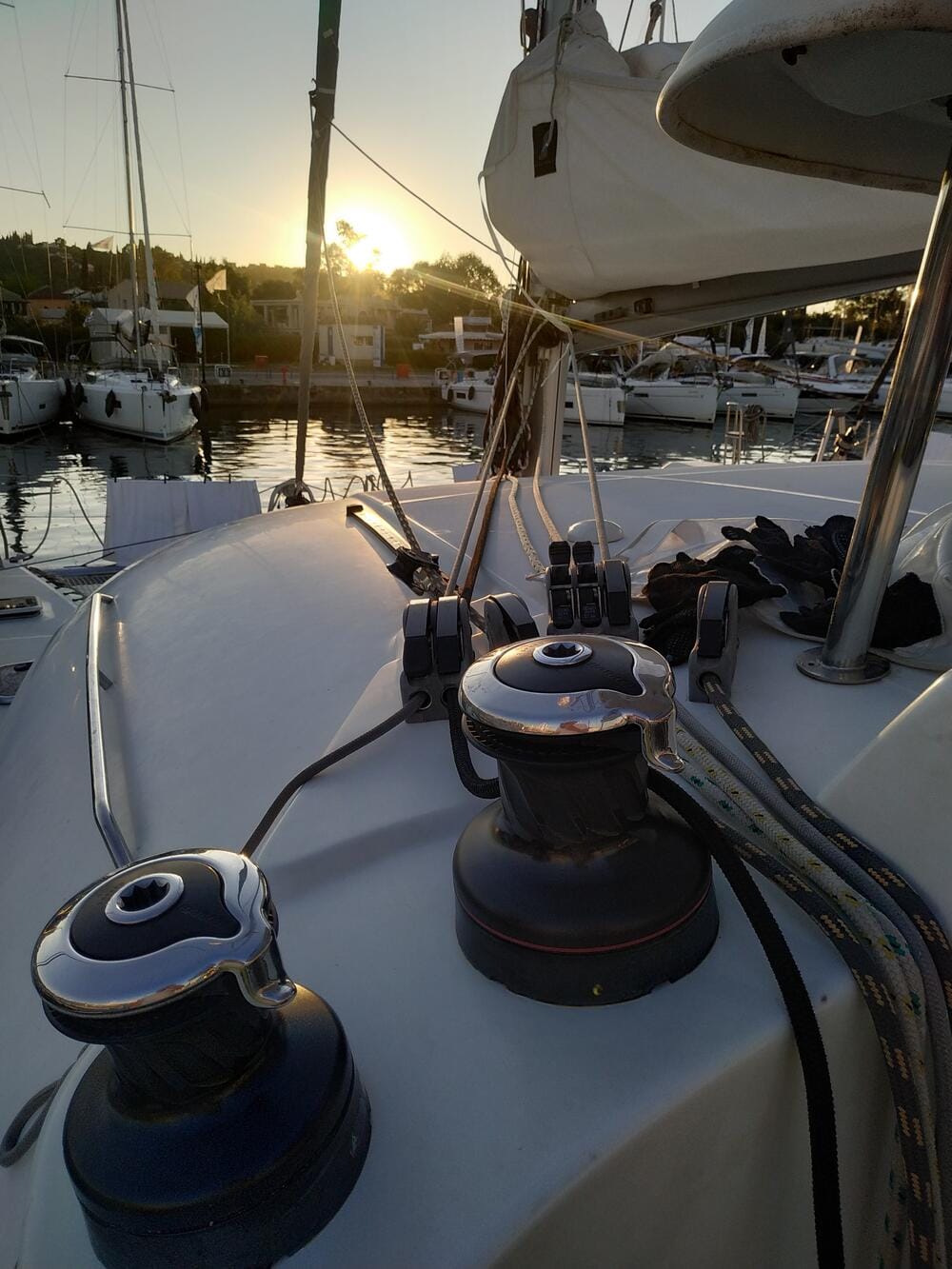
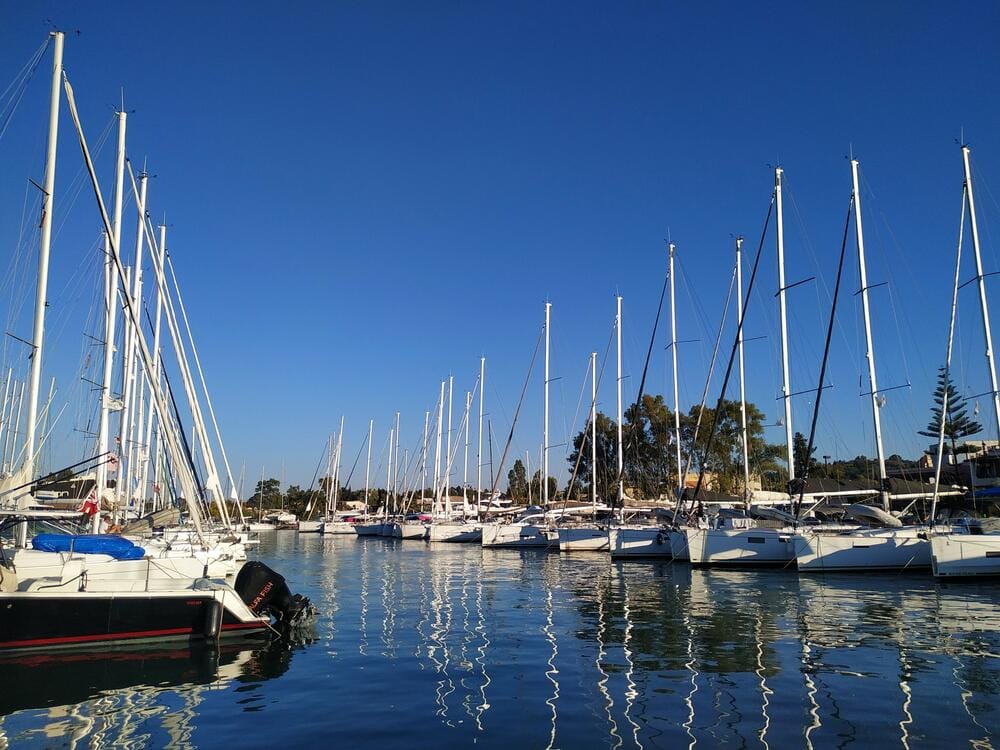
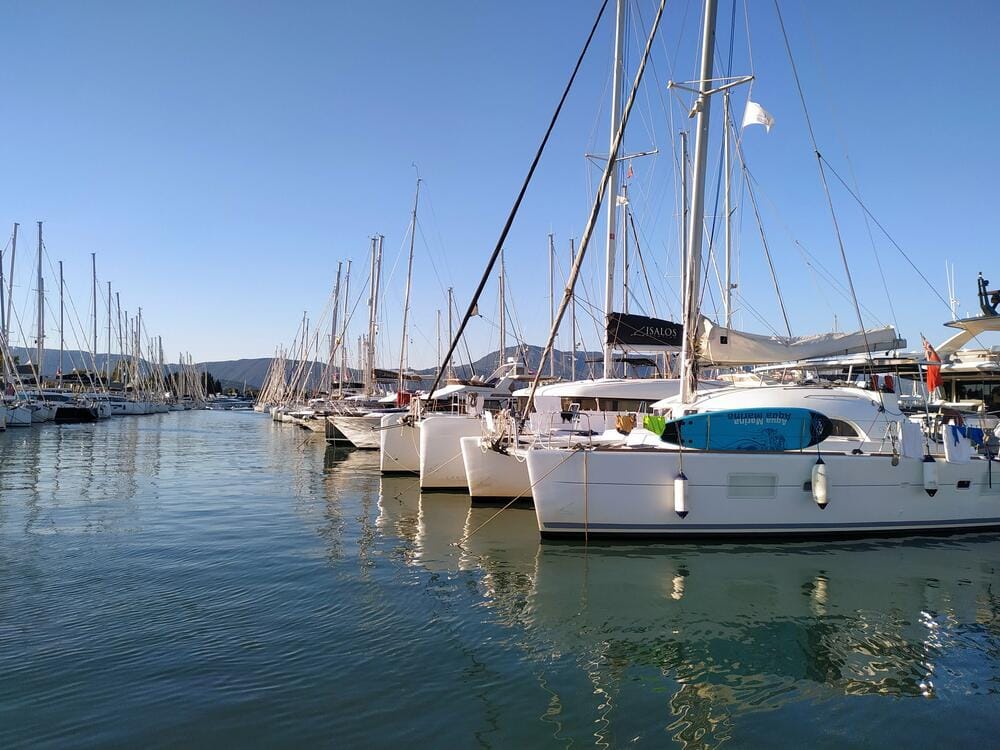
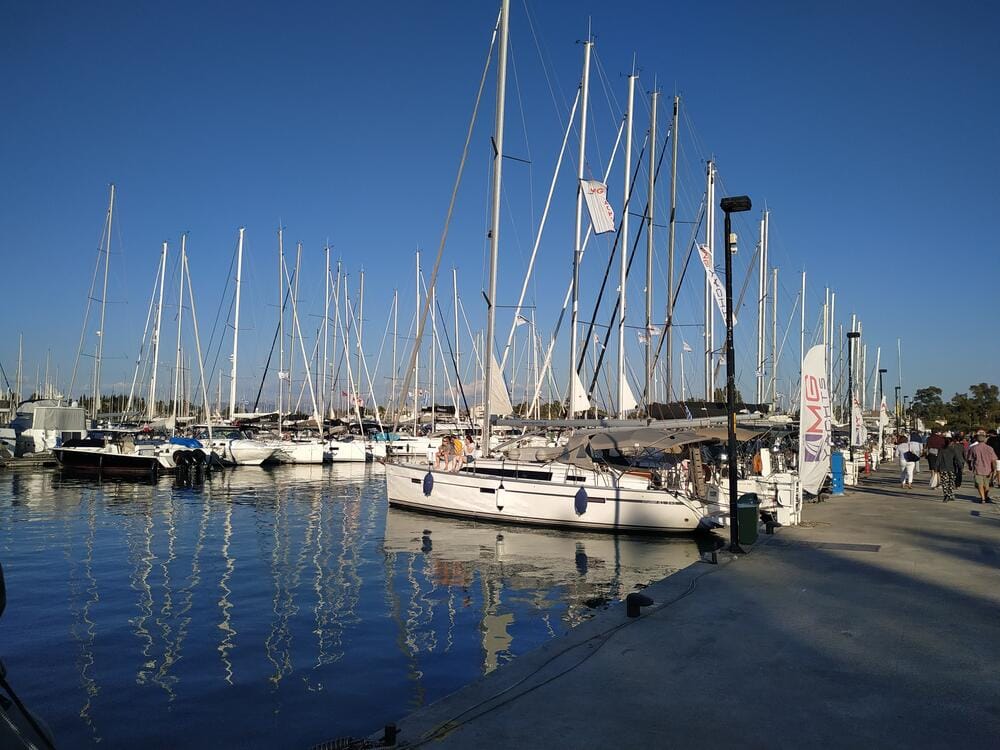
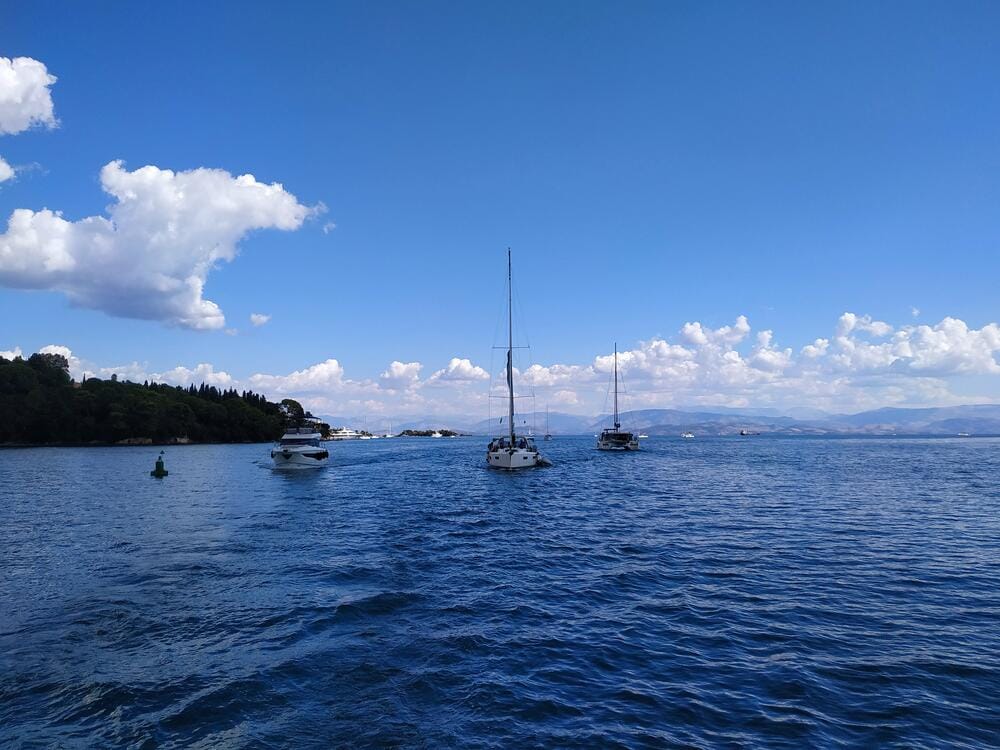
Marina Gouvia
Back to Marina Gouvia for refueling and check-out. All went smoothly. We said goodbye to our Lagoon 380 — not without a bit of nostalgia.
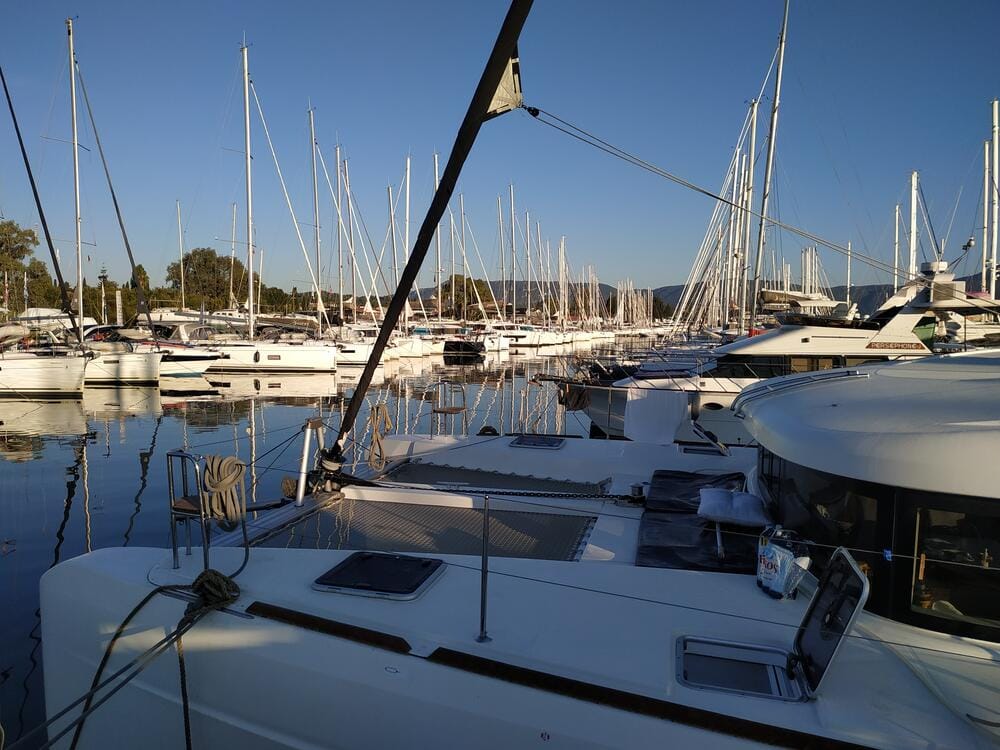
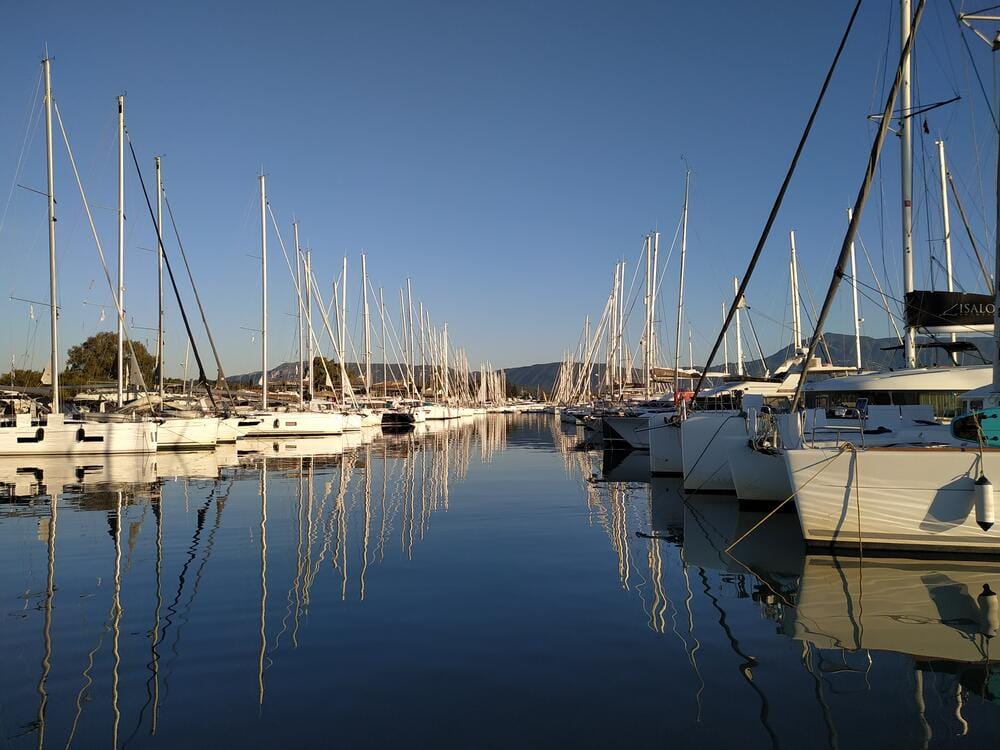
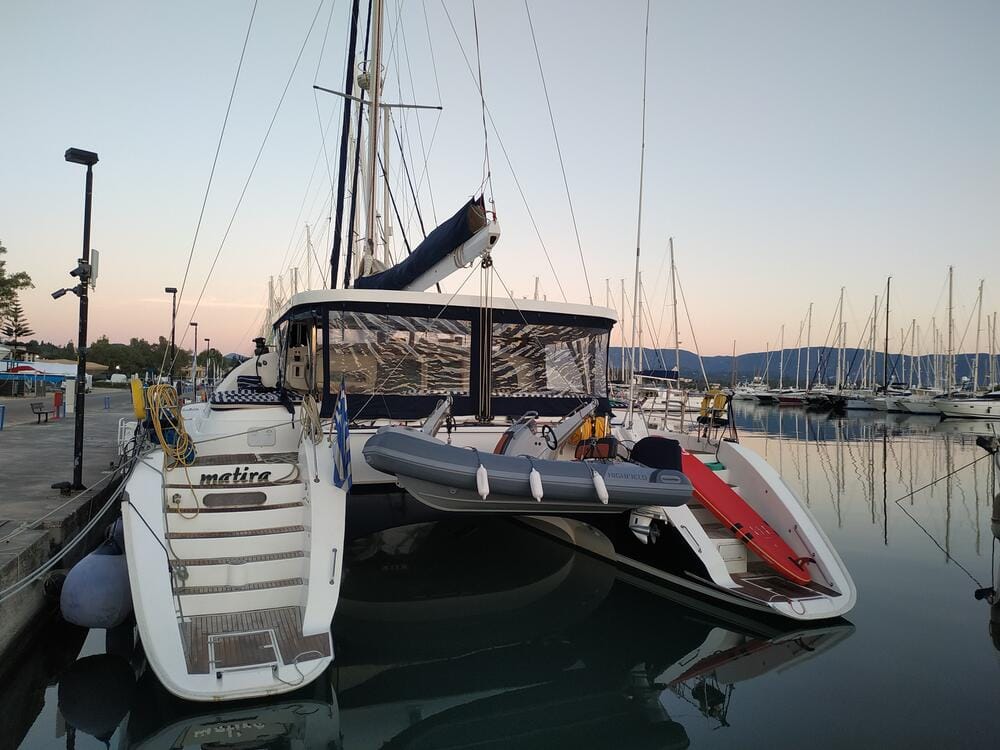
Marina Gouvia
Final Thoughts
- Sailing a catamaran for the first time? You will get hooked. We did.
- Avoid anchoring in unprotected town quays when strong wind is expected.
Related posts
- Catamaran vs Monohull: Don't know what to choose?
- What else can I read about sailing in Corfu and Greece?
- Explore more of our sailing adventures
